The Reykjavík Grapevine

A Low Carbon Illusion Free copy Culture Music Travel Volume 20 Issue 7 2023 Best before June 16
It’s all an illusion

CATHERINE MAGNÚS DÓTTIR
Catherine studies culture and literature in Iceland and came to the Grapevine for the internship but ended up freelancing for the magazine. When she’s not trying to reconnect with her Icelandic roots, she’s usually watching video essays or attempting to finally come up with that one good story idea that she can actually finish writing.
JÓHANNES BJARKI BJARKASON
Sometimes my eyes hurt from constantly rolling in their sockets. It happens everytime I see a headline about Icelanders being environmentally conscious, which only reminds me of all the people leaving their diesel cars to idle while they run into the shop, the people who eagerly take a plastic to-go cup when they feel like taking that last beer of the night on the go, only to toss the cup haphaz ardly into the street a block later after taking their last swig, the people who fill their grey bins with mixed “trash” rather than making any effort to sort it and then pile their bags of mixed garbage into my bin clearly marked as recycling.
Iceland may provide the option of being environmentally friendly simply because it happens to be sitting atop massive reserves of hot water that Icelanders can harvest for geothermal energy. But Icelanders are not environmentally friendly. They use geothermal energy because it’s there. Once it comes to having to make a decision between the green choice or the easy choice, easy seems to win out more often than not.
In fact, despite all that sweet, sweet geothermal energy Iceland’s household emissions are no lower than in other European countries. Read about Iceland’s approach to the climate crisis in this issue’s cover feature on page 12-14. Try not to roll your eyes.
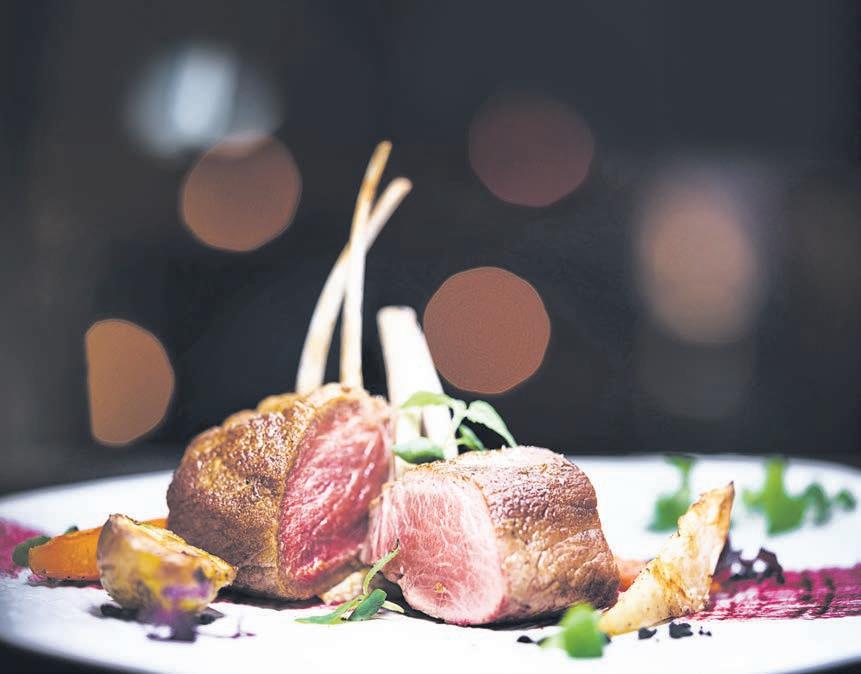
Jóhannes Bjarki is a Reykjavík local, straight out of Grafarvogur. Having been active as the frontman of the post-punk band Skoffín and in the post-dreifing art collective, Jóhannes is fascinated by the Icelandic music scene. Among his interests are politics, history and pop culture.

IRYNA ZUBENKO
Iryna is a Ukrainian journalist working at the cross-section of media and technology for the past five years. While still figuring out what to do in life, Iryna’s love of travelling, unspoiled nature and Scandi design has brought her to Reykjavík. One day she’ll write a non-fiction book.


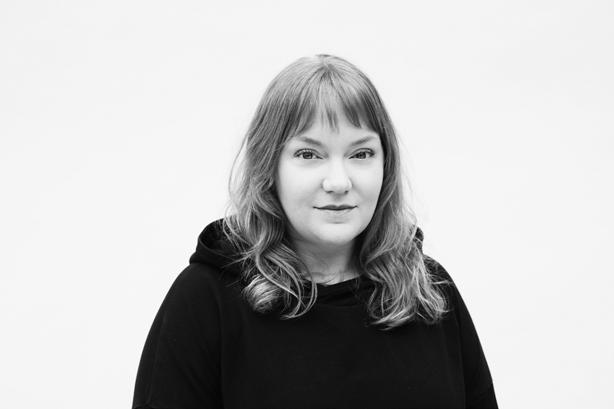
REX BECKETT
Rex Beckett has been a fixture in the Reykjavík culture scene for over a decade as a longtime music/art writer and as former synthpunk diva Rex Pistols. They are currently working on a series delving into the influence of Garfield on queer millennials.

SHRUTHI BASAPPA

Shruthi Basappa traded the warmth of Indian summers for Arctic winds of Iceland. She’s a food enthusiast masquerading as an architect at Sei Studio and loves obsessive attention to detail. When not leading our Best of Reykjavík food panel, Shruthi can be found trying to become a Michelin restaurant inspector.

In This Issue 4 Icelandic politicians have no choice but to give themselves a raise 6 Choose your weapon and learn how Vikings fight 10 Learn to shop for cheap from a YouTube money guru 12—14 Is Iceland the environmental utopia it markets itself as? 18 We went to Skjaldborg and things got real 24-25 An American is here to save the Icelandic music industry! 36 What if Icelanders had revolted? We have some thoughts What is Iceland doing to address the climate crisis? From establishing itself as a hub for innovation, to broadcasting an image of itself as a green nation of geothermal energy and pristine nature, our cover feature this issue looks at what is and isn’t being done. On the Cover Late night dining Our kitchen is open for until 23:00 on weekdays and 24:00 on weekends A local favourite for over 20 years BOOK YOUR TABLE TAPASBARINN | Vesturgata 3B | Tel: 551 2344 | tapas.is COVER ILLUSTRATION: Kosmonatka Editorial
WORDS Catharine Fulton, Editor in Chief
Contributors





KONTOR REYKJAVÍK
OUR STORES IN REYKJAVÍK: FARMERS & FRIENDS
Don’t Hate The Players, Hate The Game
Icelandic parliamentarians have no choice but to accept a hefty pay raise
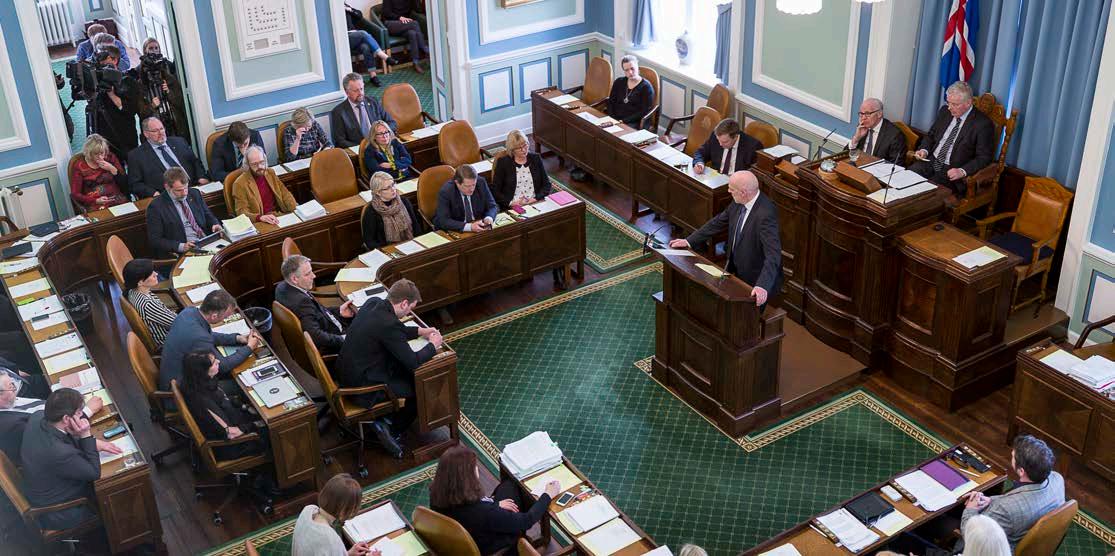
$18,500 US or 17,400 euros). The prime minister in 2016 – one Sigurður Ingi Jóhannsson – made a paltry (by comparison) 1.365.000 ISK per month. Not going to lie, we wouldn’t turn up our nose at Sigurður Ingi’s 2016 salary.
Seeing that good’ol Siggi is still in parliament, he’ll soon be pulling a bigger pay cheque. The base salary of a member of parliament is soon to be 1.431.000 ISK per month. MPs then get extra dosh for serving on committees, which you’d think would just be a basic part of their job description as elected officials, but then you’d be wrong. The base salary of government ministers is going up to 2.372.000 ISK come July 1.
WHAT’S GOOD FOR THE GOOSE
month. While the salaries of parliamentarians has doubled since 2016, the median wage for everybody else has increased by 58%.
To be fair, I’m no stranger to steep increases myself. My mortgage payments are up 45% in just the past year. Ouch.
IN OTHER NEWS
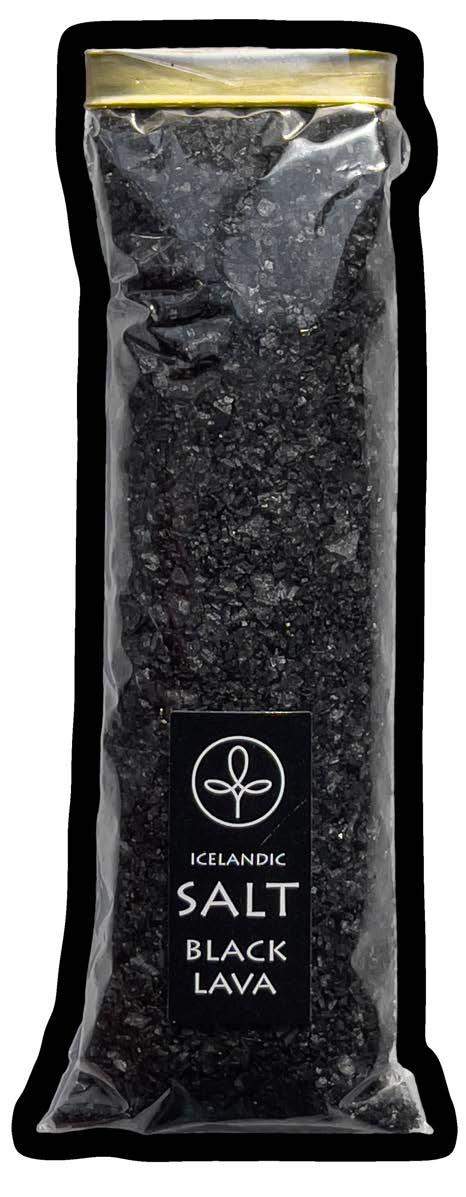
A veritable who’s who of Icelandic celebs will gather outside the Smekkleysa record store in Hjartatorg on Saturday, June 3 to urge the well-paid government to take action against whaling. With the whaling season slated to begin later in June, Björk, Högni, Hera Hilmars, JFDR, Guðmundur Arnalds and other guests throw their weight behind that cause and longline fishing.
Here’s a question for any residents reading this issue: how much have your wages increased in the past seven years? If your answer isn’t, “well, as a matter of fact, they’ve roughly doubled,” we’ll venture to guess you’re not a parliamentarian.
That ’s right, Heimildin is reporting that once a scheduled 6% - 6.3% pay boost for the top tier of the country’s civil servants takes effect on July 1, the salaries of Iceland’s parliamentarians will have roughly doubled since the summer of 2016.
That means Prime Minister Katrín Jakobsdóttir will soon be earning 2.6 million ISK per month (ca.
It’s pretty rich (pun intended) that some of the very same career politicians telling working class people in this country that increased wages and increased spending are driving inflation are making absolute bank. If higher wages are what’s driving inflation, then shouldn’t government officials do their part for the economy and their countrymen and admit they have enough as it is.
Yes, the pay increases are mandated by law, but I’m pretty sure the prime minister and minister of finance at the very least know a guy who knows a guy who has the power to change the law.
To compare and contrast a little, the median salary of workers in Iceland at the close of 2022 was 775.000 ISK, according to Statistics Iceland. That means half of all working Icelanders earn less than that per
The event gets at 14:00 with a procession from the old harbour to the square outside Smekkleysa. Signatures will be collected to present to Minister of Food, Agriculture and Fisheries Svandís Svavarsdóttir and Prime Minister Katrín Jakobsdóttir.
And the Young Environmentalists and the Nordic Youth Biodiversity Network will announce their joint lawsuit against the government if the fishing licence of Hvalur Hf. is not revoked immediately. The fisheries minister said in late may that there was no legal basis for revoking Hvalur’s fishing licence for this summer
It bears mentioning whenever whaling is in the news that it is not a traditional or historic practice of Icelanders. Only one company, Hvalur Hf., hunts whales in Iceland and actually runs its operations at a loss.
The Reykjavík Grapevine 7 / 23 4 shop.grapevine.is shop.grapevine.is shop.grapevine.is* shop.grapevine.is shop.grapevine.is shop.grapevine.is Get Grapevine Merch! Don't Hesitate! Act Now! * You only need to type the URL in once VOLCANO COLLECTION The Reykjavík Grapevine PUBLISHED BY Fröken ehf. Aðalstræti 2, 101 Reykjavík www.grapevine.is grapevine@grapevine.is Member of the Icelandic Travel Industry Association www.saf.is PRINTED BY Landsprent ehf. PUBLISHER Jón Trausti Sigurðarson jontrausti@grapevine.is EDITOR IN CHIEF Catharine Fulton editor@grapevine.is PHOTO & MEDIA EDITOR Art Bicnick art@grapevine.is JOURNALISTS Iryna Zubenko Jóhannes Bjarkason CONTRIBUTORS Catherine Magnúsdóttir Charlie Winters Francesca Stoppani Rex Beckett Shruthi Basappa Valur Gunnarsson PHOTOGRAPHY Art Bicnick Jenny Retschkowski Kristinn Magnússon PODCAST & LISTINGS EDITOR Rex Beckett SALES DIRECTOR Aðalsteinn Jörundsson adalsteinn@grapevine.is STORE MANAGER Helgi Þór Harðarson helgi@grapevine.is FOUNDERS Aldís Pálsdóttir Hilmar Steinn Grétarsson Hörður Kristbjörnsson Jón Trausti Sigurðarson Oddur Óskar Kjartansson Valur Gunnarsson CONTACT US EDITORIAL editor@grapevine.is ADVERTISING ads@grapevine.is DISTRIBUTION & SUBSCRIPTIONS distribution@grapevine.is PRESS RELEASES events@grapevine.is GENERAL INQUIRIES grapevine@grapevine.is The Reykjavík Grapevine is published every month by Fröken Ltd. Nothing in this magazine may be reproduced in whole or in part without the written permission of the publishers. The Reykjavík Grapevine is distributed in and around Reykjavík and at key locations along Iceland's route 1. It is also available at all major tourist attractions and information centres around the country. The Grapevine is an independent publication. You may not agree with what we print, but at least our hot takes aren't paid for. None of our editorial is directed or influenced by sponsors or advertisers, and all opinions expressed are the writer's own.
WORDS Catharine Fulton
IMAGE Art Bicnick
What The News!?
ONE OF THE FOOD WONDERS OF THE WORLD
ICELANDIC LAMB IS THE FIRST ICELANDIC FOOD PRODUCT TO BE PDO-MARKED
Icelandic lamb has acquired the PDO label, the highest level of geographical indication in Europe, placing it in the company of the world's best-known and most sought-after quality products.

How Did Vikings Fight?
We found out from a real life Jarl
WORDS Catherine Magnúsdóttir
IMAGE Art Bicnick
Vikings are cool. They are rough and tough, the epitome of badass-itude and fearlessness, banging their shields and screaming at their enemies. And that’s not even to mention those fabulously big, bushy beards many of them rock. Despite being historically not very nice, our axe-swinging faves reappear not just on ads for trips to Iceland but in real life when it’s time for the annual Viking Festival in Hafnarfjörður each June. For the downlow on how Vikings fought, we turned to Jökull Tandri Ámundason, one of the Jarls of the Viking Club Rimmugýgur.
striking below the knee or below the elbow, whereas Eastern style targets the entire body and is known for more intense strikes – and, consequently, more armour.
“They’re based in different combat schools,” Jökull Tandri says. “Western style fighting is perhaps more performative – for show fights, festivals or movie fighting where we do the big swings and the grunts and the screams along with it.”
Viking reenactments like those done by Viking Club Rimmugýgur are based on historical accounts of fights and battles, such as records of Örlygsstaðabardagi (the Battle at Örlygsstaðir), which took place up North in 1238 and is considered one of the biggest and bloodiest battle in Iceland’s history.
The Útlendingur ’s Guide To Getting Shit Done
Renew
WORDS Catharine Fulton
a weapon, whereas a sword would be more of a status symbol. The axe was generally accessible by anyone because it was also used as a tool for the home and the difference in the ratio of metal to whatever other material you had sort of dictated how well you were perceived as a fighter.” Image and accessibility of resources – important factors, even on the Viking job market.

“There’s of course some cases where Jarls or Húskarls rallied up the peasantry to make a lot of weapons, so in quick time you would have spears and or axes distributed and being thrown at the enemy until one of you crumbles,” Jökull Tandri explains.
IMAGE Stock
lets us password averse individuals log in to all the important stuff like banking and government services, and confirm online payments with a push notification to our phones and a four-digit pin.

To be honest, it can be easy to forget just how important that little push and pin combination can be until you lazily let it run out. Sure, Auðkenni (the service provided powering the rafræn skilríki system) sends you two-week warning that your electronic ID is expiring. And yes, they’ll send you another warning a week later. But you may still put off taking the steps to renew, thinking it’s going to be a whole thing and ugh, you just can’t deal with it right now.
“Well, they mostly used weaponry,” Jökull Tandri leads in with a chuckle. “We are a Viking reenactment group and base our combat style around what is known as Western style reenactment fighting” he continues. “There are a couple of variations of Viking combat around the world, most notably Western style, Eastern style, Húskarl and SCA armoured combat.”
The general rule of thumb is that in Western style fighting, the head is out and you don’t get any points for
“We have a set of rules that we work with, but Viking combat was a short and brutal affair in general,” Jökull Tandri points out, elaborating on the different weapons Vikings could use to hack, slash and bang into each other.
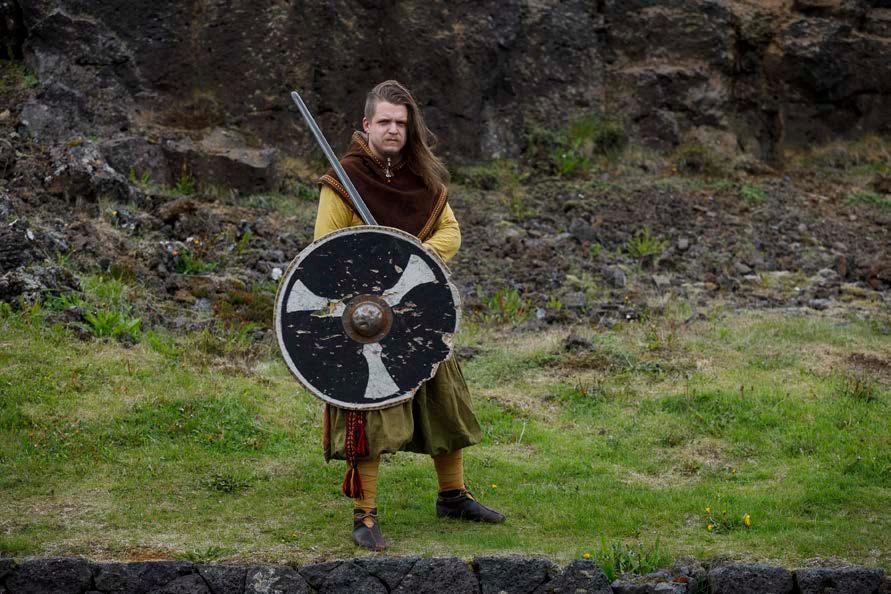
“There are swords, axes, spears, Dane Axes, as well as shields and sets of armour,” the Jarl rhymes off what would have been available to Viking fighters. “Generally, you would find a person with a shield and an axe. That was a very common weapon because it was easy to find wood and then a little bit of metal to make
Then there are records of so-called hólmganga, a duel to the death between two people, each carrying one weapon and having a shield assistant. The shield itself is also significant, Jökull Tandri points out. “It is mostly used for defence but can also be used aggressively, opening your opponent’s shield, pushing your opponent’s weapon out of the way and then you would go in for another strike, following up or countering that.” Until the last Viking has fallen or it’s time for a snack break.
Learn more about all things Viking at the Viking Festival in Hafnarfjörður, running June 14 to 18. Learn more about Viking reenactment at facebook.com/rimmugygur

You know what I hate? Remembering passwords. I know, my trusty Apple products store all my login details safely in a keychain, but I still inevitably mange in too many cases to fuck that up and then the password saved in my keychain is incorrect, so I go through the process of resetting said password.
That’s why the rafræn skilríki, or electronic ID, system is so great. It

Let me tell you, fellow procrastinator, it’s not a whole thing. It’s stupidly easy.
You just have to go in to your bank branch or the main hub of your mobile provider and say “hey, I need to renew my electronic ID.” Some helpful individual will say, “cool, got some id?” You’ll present your ID, they’ll send a push notification to your phone prompting you to enter a four-digit pin, you’ll tap “Accept” about a dozen times as the renewal calibrates or something, and then you’re free to go on with you life, logging in with abandon and verifying so many online purchases your bank accounts will weep.
The Reykjavík Grapevine 7 / 23 6 THE #1 BEST THING TO DO IN THE WORLD - by TimeOut Magazine NATURAL HOT SPRINGS SINCE 1187 HVAMMSVIK.COM ONLY 45 MINUTES FROM REYKJAVÍK
Ask An Expert
Do Shit
your rafræn skilríki
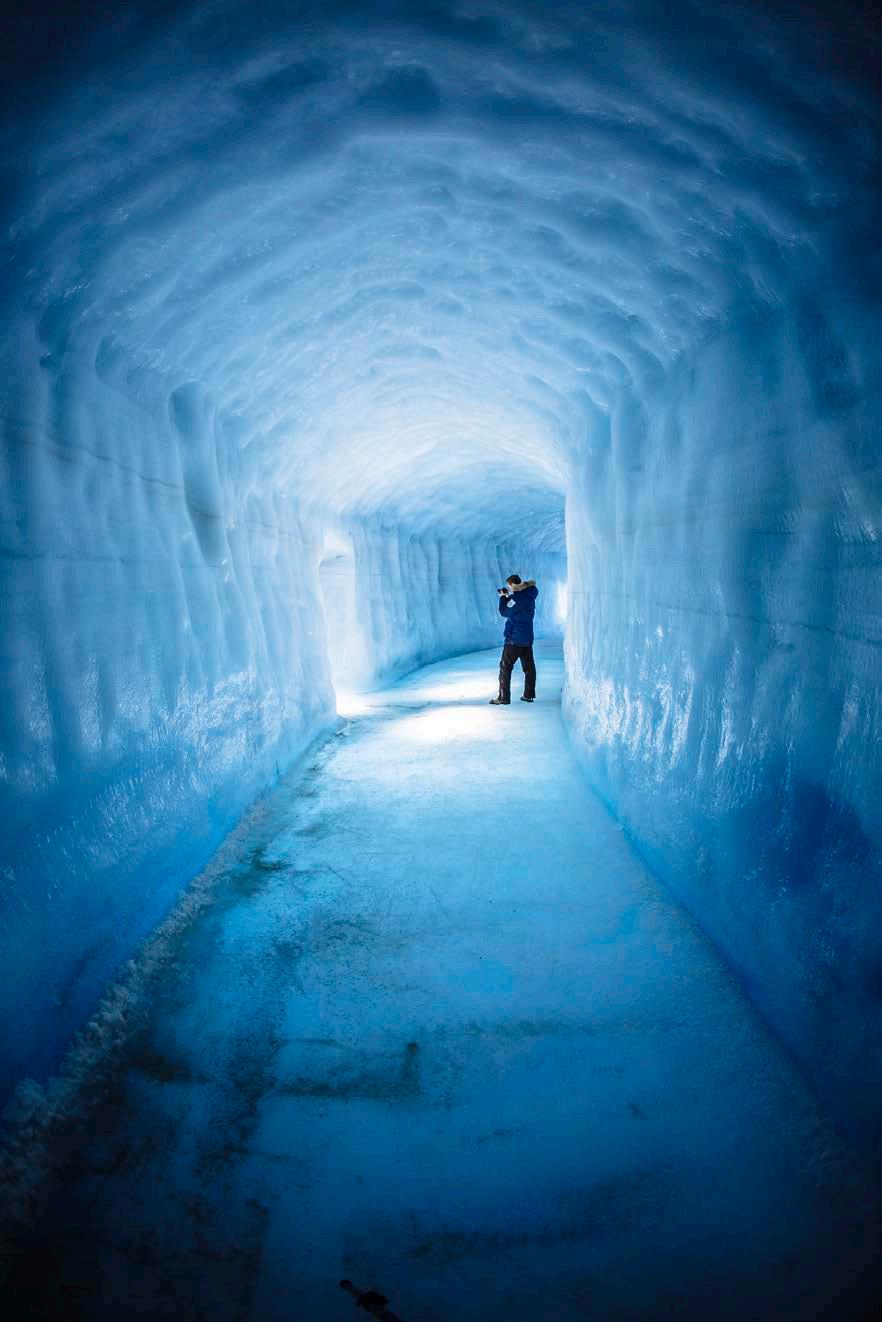
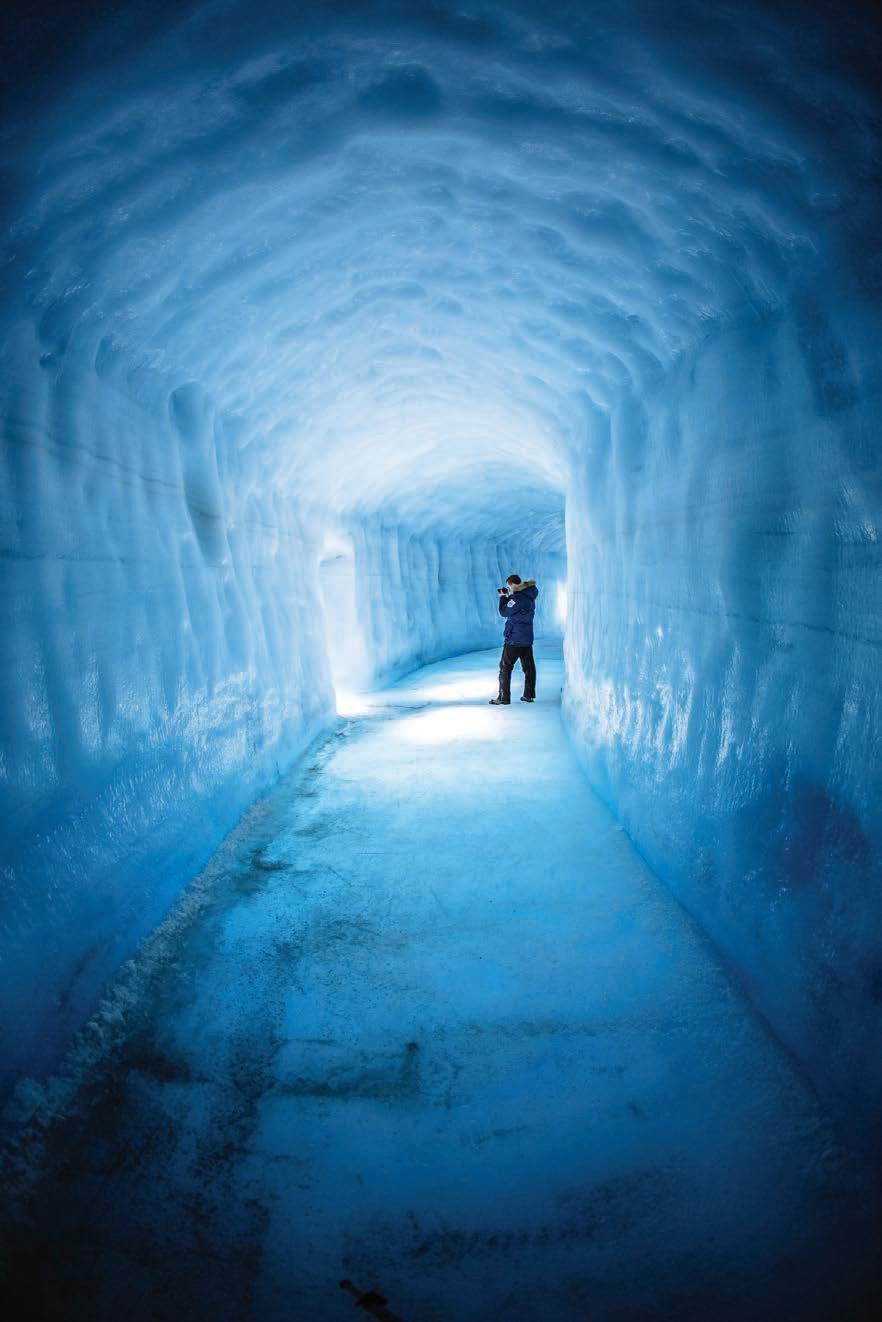
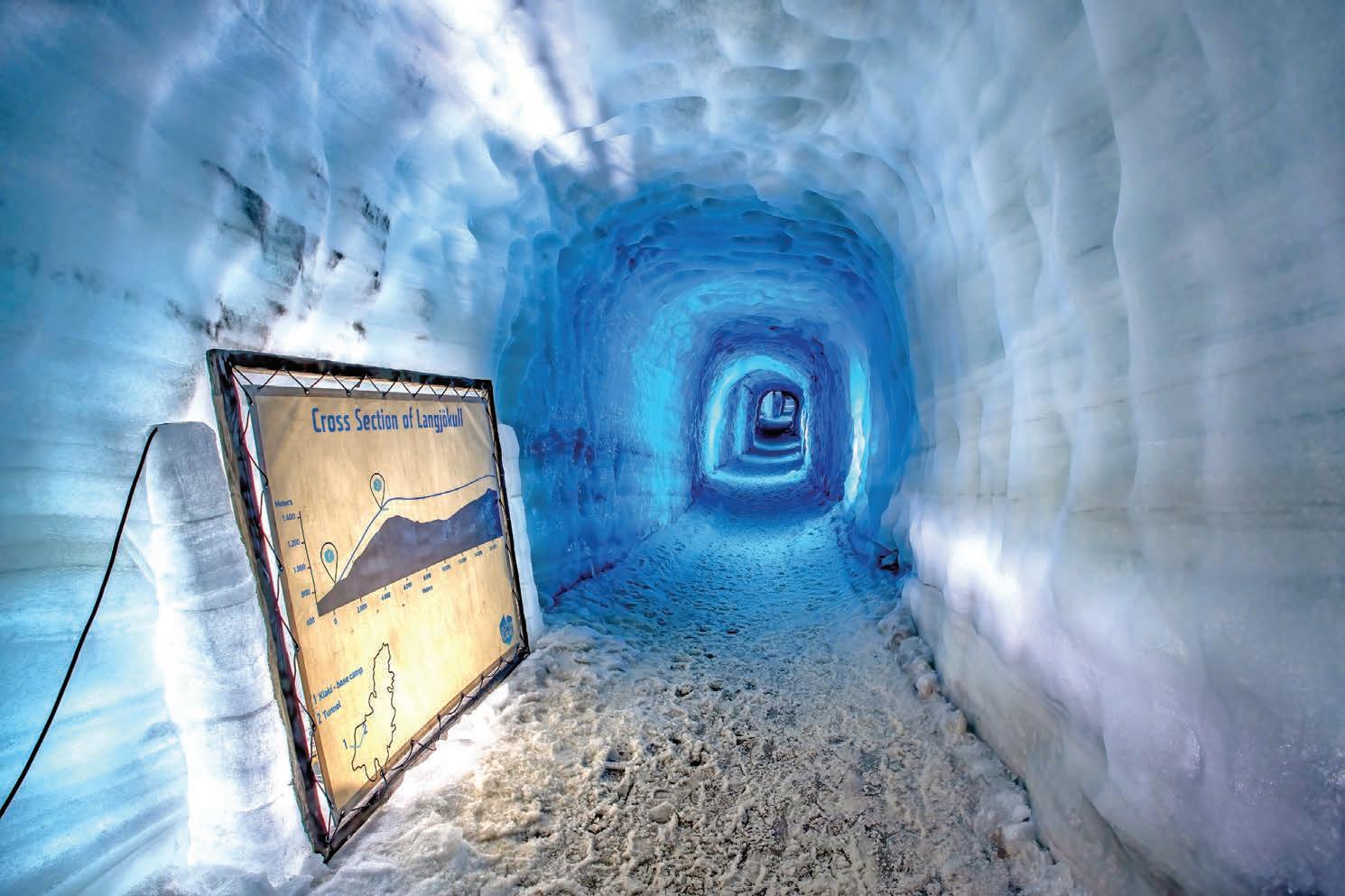
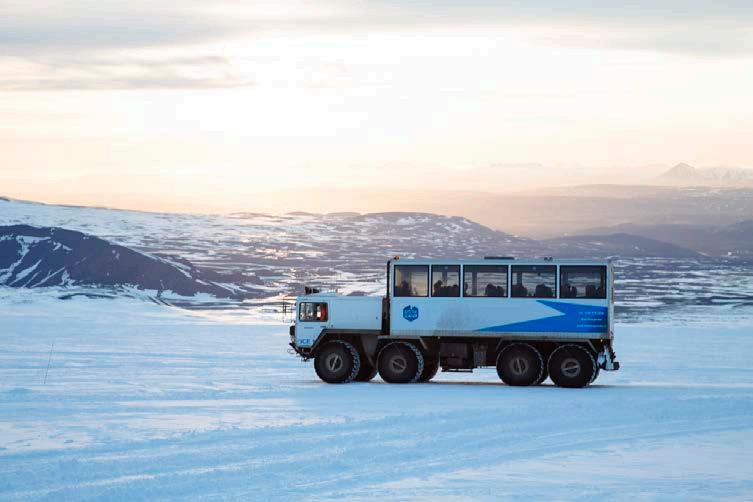
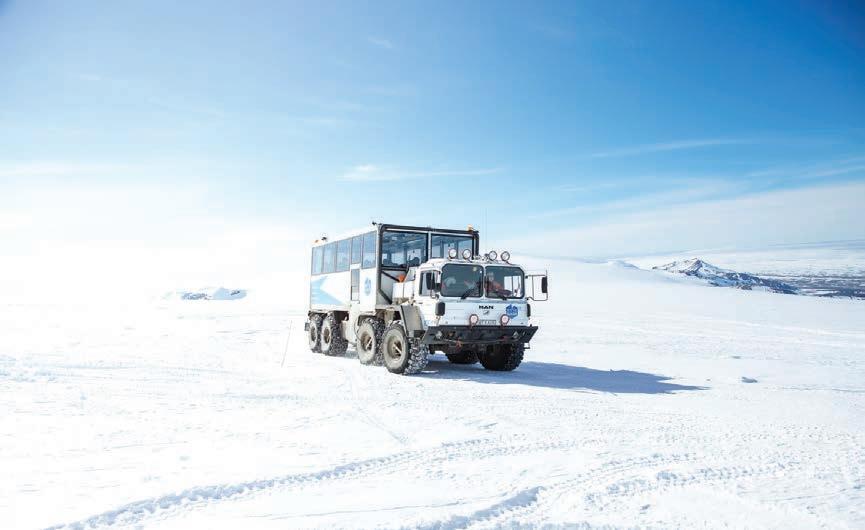
WORDS
IMAGE

The Wood Master Of Patreksfjörður
Iryna Zubenko
Art Bicnick
E inar Vignir Vatneyr Skarphéðinsson’s wood workshop is located just a few steps from his house in Patreksfjörður. It’s his private sanctuary, a place where his art comes to life. Although Einar feels a bit uneasy during interviews, he willingly showcases his handicrafts – wooden bowties, chandeliers, curtains, gifts for his partner and a toy car for his daughter. Let’s take a step into Einar’s garden to explore where one can find driftwood these days and uncover the story behind the film award named for him.

mentary school for 20 years before I stopped last year.
Despite living next to the sea, I was never interested in it. I worked in a frozen storage facility, and I don’t
pens and keychains. These past few years, I’ve mostly been making wooden bow ties. I developed them from scratch, and they have been the most popular things I make.
driftwood, the biggest challenge is to see the pattern emerge and remove parts of the wood so the pattern, the veins can look their best.
Iwas born and raised in Patreksfjörður and lived here my whole life except for one winter in Reykjavík and one in Eskifjörður.
I’ve been doing handiwork ever since I can remember — for about 30 years. I am a carpenter, and I’ve been a shop class teacher in the ele-
really know why I ended up working with timber. I remember the first time I went to a woodturning workshop — I was in Reykjavík while waiting for my wife to give birth and I used the chance to go. Since then, I’ve always been at it, more or less.
Although I learned the craft from a relative, woodwork wasn’t a traditional skill in my family. My dad started to do some handiwork when he retired. I teased him that he had gotten the skills from me rather than the other way around.
SIGNATURE BOWTIES
When I started using the woodturning lathe, I made a lot of bowls and all sorts of things from worm-eaten driftwood. Then I started making
I advertise by putting it on Facebook and Instagram, and people call me. I’ve sent my pieces all over the world — the bowties are going pretty far and wide. I think that the furthest I’ve sold has been to Brazil.
When I started making bowties, I was living with my ex-wife, and she was crocheting bowties. I was observing her, and I thought that if she could crochet them, then I must be able to make them. Getting the right bowtie took a long time, but I got it down with time. It is going well — there are at least two presidents and one prime minister who own bowties that I’ve made.
DRIFTWOOD CRAFTS
When I’m making bowties using

There used to be a lot more driftwood here a few years ago, and then the driftwood left Russia, got stuck in the ice near Greenland, and was 3-5 years on its way before I could pick it up here and then I had to dry it. I don’t see much driftwood in this area now, so I’ve been using it much less. My favourite places to find driftwood are between Látrabjarg and Rauðasandur. When I need more and larger pieces, I go north to Strandir, there’s a lot more of it there. Once, many years ago, I needed to send the driftwood to Reykjavík, and the guys in BYKO helped me to dry it in their kiln, which took quite some time.
THE EINAR’S AWARD
This is the 16th Einar Award I’ve made for the Skjaldborg Documentary Film Festival. [Einar holds up the award he’s made for this year’s festival] It started 16 years ago when a good buddy of mine, one of the founders of Skjaldborg, approached me and asked if I could fashion some sort of trophy. Out of that came the Einar as it is today. I joked with my friend that this film festival naturally couldnʼt give out an Oscar, so it has to be called the Einar instead and
that just stuck. That’s pretty fun. The motif is always a camera, but I allow myself to play around a bit with the implementation of the idea. The combination of this year’s Einar is an oak plaque with a plywood camera covered with a copper film. I usually participate in the festival a little, go to see a few movies and visit the Plokkfiskur party and the fish feast. I enjoy it a lot.
TOOLS OF THE TRADE
There are always kids who are interested in all sorts of handicrafts. I know of some kids I taught in shop class that have gone on to learn carpentry or all kinds of related professions.
For those interested in starting out doing carpentry, the most important thing is to have quality tools. That makes a big difference. You need to have an interest in it. I don’t think it will work out if you go into carpentry without really being interested. You should sign up for a workshop, and then you’ll pick it up quickly. I just want to keep growing and going forward to make as many pretty things as possible. There is always something to do, like, for example, chandeliers and curtains that I made out of worm-eaten driftwood. That’s the most fun, to do things differently than others!
8
Islanders
Einar Vignir Vatneyr Skarphéðinsson crafts stories with timber
Come by our time-honoured artisan bakery for intensely delicious baked goods, a savory brunch or one of our homemade sodas or craft beers Find us on Laugavegur 36, every morning from 7:30 AM. www.sandholt.is
My dad started to do some handiwork when he retired. I teased him that he had gotten the skills from me rather than the other way around.
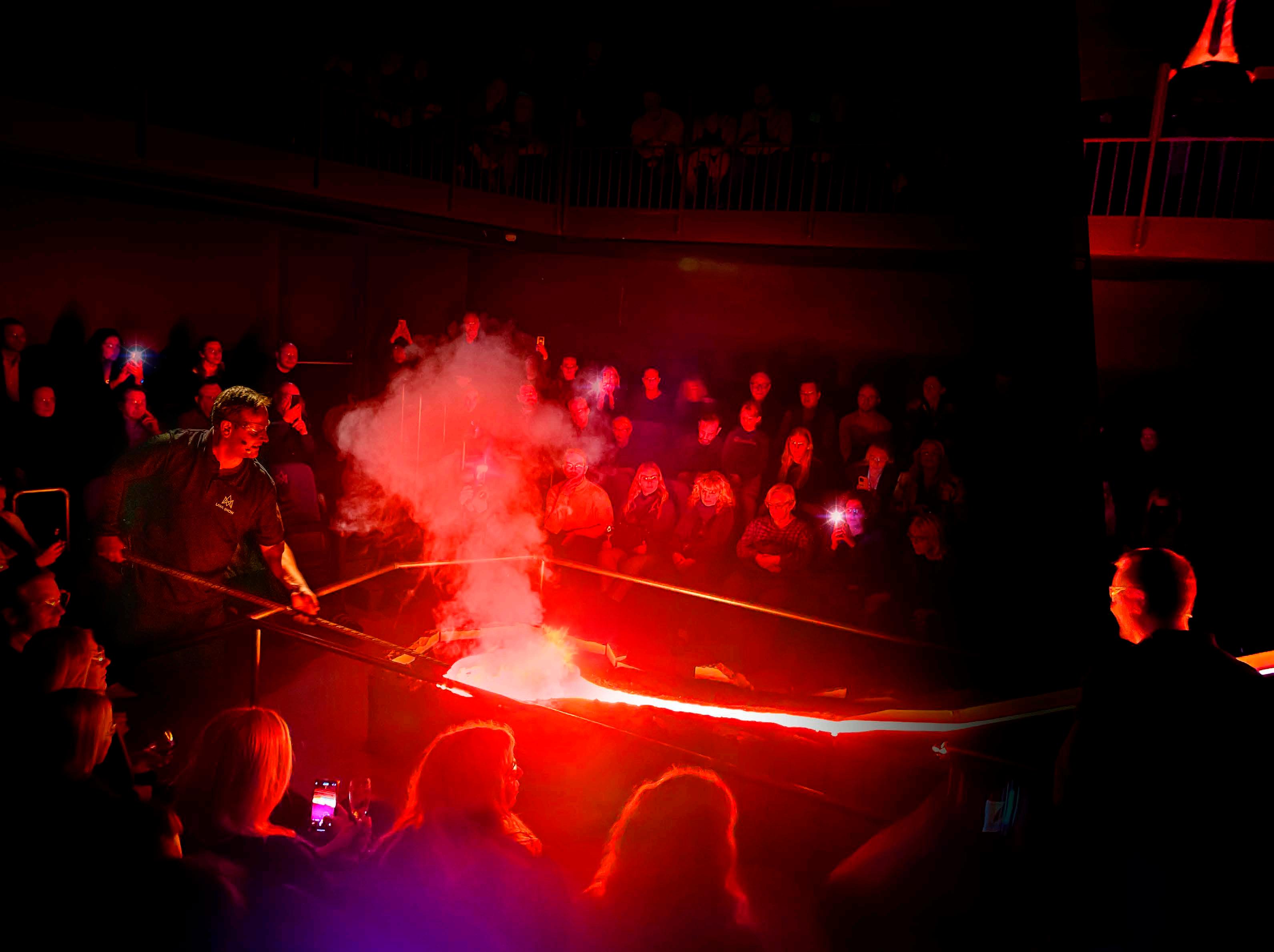

WORLD BOOK NOW REYKJAVÍK / Fiskislóð 73 / 101 Reykjavík VÍK / Víkurbraut 5 / 870 Vík
THE ONLY LIVE LAVA SHOW IN THE
Eating Well On a Budget
IMAGE Art Bicnick
Firstly, shop in stores like Bónus and Krónan. Always make your meal plans based on what you already have in the fridge. I would always just graze over the fridge, maybe write down what’s in there, what needs to be used, and account for the stuff in the pantry and freezer. Also, purchase foods that you can use across multiple meals. For me, that’s buying larger proteins like whole chicken.
some different products, Bónus is cheaper. It would probably be 1000 ISK more at Krónan. My mom taught me very young to check the price per kilo, not just the price on the shelf. I was shocked to find out that not all people know this.
GV: WHAT ARE SOME BUDGET-FRIENDLY RECIPES FOR FAMILIES?

All kinds of tomato products, like canned tomatoes and tomato paste. I always have beans, chickpeas, jam, ketchup and barbecue sauce. Also all the different dried goods – like lentils, mung beans and barley – that keep for a long time.
GV: DO YOU HAVE ANY TIPS FOR AVOIDING IMPULSE PURCHASES?
The kids are being annoying. I need something now,’ and that’s when you’re going to order takeout. But if you already have the frozen pizza that maybe cost 500 ISK, you’re set!
GV: WHAT WAS THE REACTION LIKE WHEN YOU STARTED SHARING YOUR BUDGETING JOURNEY ON YOUTUBE?
Katrín Björk Birgisdóttir regularly posts her grocery hauls to YouTube. A nail technician by day, Katrín is known for challenging herself to cook on a budget. Is it possible to feed a family for cheap inReykjavík? The Grapevine caught up with Katrín to find out.

GV: HOW DID YOUR FOOD BUDGETING JOURNEY BEGIN?
I have a family of four, including two boys who are always hungry. I’ve always been budget focused. Even when I was younger, I made multiple accounts with money for this and that week. I’ve always just been interested in it and I’ve always wanted to make a go of this YouTube thing. I started doing this not necessarily because we needed to save the money, but to challenge myself. I found that there was less food waste, too.
GV: WHAT ARE YOUR SPECIFIC TIPS AND TRICKS FOR SAVING MONEY ON FOOD IN REYKJAVÍK?



Also, use a smaller basket. You’ll be thinking, ‘How is this supposed to feed us for a week?’ but then it does because nothing is going to waste –you’re using all of it. I used to purchase a bag of carrots and use two for a meal, but the rest would go bad. A lot of people think they have to make a meal plan for seven days. But five days is plenty, because there are always leftovers or just the lazy days, or maybe you’re invited somewhere.
GV: IS BÓNUS STILL CHEAPEST?
It is. I always have Krónan’s app open when I’m in Bónus. Most items are the same price by about 1-2 ISK. But if you’re buying protein powder or
Soup. I love soups and my family does, too. You can put literally anything in there. I usually work with red or brown lentils and veggies. When I have big chickens, I make stock to freeze – it just provides so much flavour and heartiness to the soup. I always have pasta or something to add to bulk up the meal.
I love making rice pudding and the kids love it. It’s just easy to have and lasts long in the fridge. Also, stuff like chilli con carne is pretty cheap to make. You can often find ground beef at 50% off to stick in the freezer.
GV: WHAT ARE SOME OF YOUR PANTRY STAPLES?
I always have a list. I always end up with something else in the basket anyway. That’s usually when the kids are there. Don’t go shopping hungry and don’t go shopping with your kids, if you can avoid it.
I never buy takeaway because I am honestly always disappointed. But one tip for people who have a hard time not buying takeaway is always to have a freezer pizza or a freezer meal that is easy to make and that
It was mostly good. A lot of people were complimenting me, but there were a lot of negative comments too, of course.
Some people are negative because they’re afraid to try. They see how little I’m spending on groceries and are like, ‘No, that’s, it’s impossible.’ They find something to comment about so that they can dismiss it instead of challenging themselves.
you know you enjoy. There will always be days where you’re like, ‘I cannot do this. There’s no time to cook.
For more tips, check out @KateWiium on YouTube.
10 Geothermal baths Natural steam baths Geothermal Bakery Geothermal Baths fontana.is fontana@fontana.is +354 486-1400
WORDS Iryna Zubenko
I started doing this not necessarily because we needed to save the money, but to challenge myself and see what we could actually end up saving. I found that there was less food waste with it, too.
My mom taught me very young to check the price per kilo, not just the price on the shelf. I was shocked to find out that not all people know this.
Money Moves
to feed a family without splurging
How
The Dog Walker
Meet a man making bank with every step
WORDS Iryna Zubenko
IMAGE Art Bicnick
With Jaki the Siberian husky, Mía the schnauzer by his side, Guðmundur Ingi Halldórsson turns heads as he strolls through downtown. But there’s more to his strut than meets the eye. With each step, a few more krónur find their way into his bank account. Guðmundur is not just any ordinary pedestrian. He’s a dog walker.

ganga, a dog walking business. My plan is to make this a full time job, even though I’ve just started doing it this month.
I got started when I quit my job as a kindergarten teacher and I had to find something that kept me active. Two years ago, I was diagnosed with ADHD and various other things. A huge part of living with ADHD is exercise. When I look back at my childhood, I always felt best when I was outside, walking dogs. So why not do it when I’m grown up as well? It’s the best kind of company!
on the dog culture, regulations and the society of dog owners, especially with just getting around with a dog, getting to stop somewhere and have a drink or for some food and being able to take my whole family with me. I have a daughter, a dog and three cats.
DOGS WITH DIVERSE DESIRES
do this very formally. I don’t know anyone that does it as formal as I do. I take dog walking very seriously. Plus, I’m entering people’s homes. I always tell people that I have no criminal record. Our first meeting is always free. I get to know the owner and the dog in a safe environment where they feel good. Then I pull out a contract, we fill that out and make plans for how we will continue working together.
can buy half an hour or an hour of just single walks or get a monthly pass. I’ve got one customer that has already bought a pass for two months. I’m going to walk her dogs for two months, every weekday. I don’t work on the weekends, except for at the restaurant.
Guðmundur Ingi Halldórsson, 34, a waiter
Waiting tables at Jómfrúin is my main source of income. But I’m also the founder of Guðmhundar-
The dog walking business is a huge thing on the mainland of Europe and in America. It’s not a thing here in Iceland. I wanted to pave the way for this type of a job and do it well. Plus, have an impact

Different types of dogs have different sensories. They’re made for different types of actions. For example, this is a working dog (points at Jaki). He can run forever. This one (Mía) is all in the nose. When I take her for a walk alone, she just runs around for 20 minutes fulfilling her need to smell.
I have to be able to know the needs of each dog. That’s why I
I don’t have the least favourite thing about dog walking right now. I suppose it’s the computer work. Everything else is awesome. I love working with dogs and I love to see progress.
SNIFFING FOR CUSTOMERS
I advertise on social media. You
My advice for anyone who wants to be a dog walker is to be formal and study YouTube. YouTube is awesome. If you’re looking for a job to exercise, I highly recommend this. I’m walking at least three hours a day. Dogs are the best kind of people.
Want to share how you’re making ends meet? Email us at grapevine@grapevine.is with the subject line “Side Hustle.” We’ll happily keep your identity anonymous.
11
Surviving The Anthropocene
ing in a world affected by the impact of human activity since the very dawn of humanity. After all, all living creatures impact their surroundings and environments in some way, no matter how lightly they tread.
But human impact on the environment has grown to an extent that it may have ushered us into a new epoch. The Anthropocene is a term coined by Paul J. Crutzen and Eugene Stoermer in 2000, a combination of anthropo- from the Ancient Greek meaning “human,” and -cene meaning “new” or “recent.” Some
glacial retreat. Such temporal units are classified based on the features of the Earth’s strata and the fossils contained within them. However, a working committee at the commission made the case in 2019 for recognizing the Anthropocene as a formal chrono-stratigraphic unit.
Whether we acknowledge the dawning of a new epoch or not, there’s no getting around the fact that the world is in the midst of a climate crisis. The question is what are we going to do about it?
on creating accessible climate data through his startup Ecosophy. He’s referencing the Icelandic government’s goal of a 55% reduction in emissions by 2030. The next aspirational milestone is carbon neutrality by 2040. “And that’s about half of where they should be. So obviously, they need to do more.”
The Icelandic government released its current climate plan in 2020, reaffirming those aforementioned targets and delineating how it will implement changes across various sectors to achieve emissions reductions. It estimates a 21% decrease in carbon dioxide emissions from land transport, a 42% reduction in emissions from ships and ports, 67% fewer emissions from energy production and small industry and 66% fewer emissions from waste management.

that, they’re all looking at these big goals, but they’re also kind of hoping and dreaming that it will somehow magically materialise the day before the deadline and that’s not really a good strategy.”
“One thing I would like to see happen,” he continues, “is that we start measuring modelling and enacting policy on the basis of the outcomes of those models because otherwise we’re mostly just firing large sums of money out into the world, into the ether, the cosmos, and not necessarily knowing if it’s being effective and that’s not good for the government – that’s not good for anybody.”
The constant focus on CO2 is also something that Smári believes needs to be reconsidered.
We are living in a time where every aspect of our daily lives is touched by the effects of the climate crisis. We see it first hand here in Iceland. Glaciers are melting, weather patterns are changing, wildlife populations are in decline. None of this is new. We’ve been liv-
suggest the Anthropocene began with the advent of farming and the mass augmentation of landscapes that ever-growing agricultural practices brought about. Others posit the hypothesised epoch began around 1950 when nuclear weapons spewed radioactive elements around the globe.
The International Commission on Stratigraphy has yet to graduate the world from the Holocene, the geological epoch that began more than 11,700 years with the Holocene
What is Iceland doing about it? How will Iceland’s climate targets bring about positive change for the country and the world?
Is there a path beyond the Anthropocene?
WHERE ACTIONS FAIL TO MEET TARGETS
“They’re only reaching about 28% of their commitment,” explains Smári McCarthy, a software developer and former Pirate Party MP now focused
The emissions of Iceland’s heavy industry – including silicon plants and aluminium smelters that set up shop in the country lured by the promise of cheap and abundant geothermal energy – will be addressed through the European Union’s Emissions Trading System (EU ETS), a cap and trade system that sees companies buy emissions credits from within the participating region. The EU ETS has a regional goal of reducing emissions by 43% over 2005 numbers by 2030.
“When they started talking about this, they had 10 years to do it,” Smári recalls. “We now have seven years until 2030. I don’t think there’s been a reduction of 300,000 tons per year in those three years since that was decided. So the problem is
“The problem with a lot of discussions about climate change is that they are primarily focused on the CO2,” he explains. “CO2 is a great metric for the scale of the problem, but it’s a terrible metric for the effectiveness of the solution, in the sense that even if we could remove all CO2 overnight to pre-industrial levels, that wouldn’t necessarily mean that our planet is healthy since we’re in the middle of like a mass extinction event. There’s massive desertification, massive damage to ecosystems that we rely on to keep the atmosphere and the oceans in balance.”
THE THREE NEW RS
Children have long been taught the importance of heeding the three Rs when it comes to managing their own impact on the environment. Re-
The Reykjavík Grapevine 7 / 23 12 Feature
WORDS Catharine Fulton IMAGES Art Bicnick
Feature
Exploring Iceland’s role in addressing climate change
The problem is that, they’re all looking at these big goals, but they’re also kind of hoping and dreaming that it will somehow magically materialise the day before the deadline and that’s not really a good strategy.
cycle, reduce, reuse. The terms are straightforward enough for children to understand and should be easy enough to grasp for adults to implement.
Recycle what you can, reuse what can’t be recycled and reduce overall consumption. These three Rs form the philosophy of the circular economy, which climate scientists have estimated could address some 70% of global greenhouse gas emissions if taken up on a large scale by corporations worldwide.
However, at the OK Bye conference that took place May 24 as part of Iceland Innovation Week saw the focus centred on three new Rs: Reduce, recapture and repair.
Ocean Visions CEO Brad Ack said that while the world has been largely focused on emissions reduction –which is critical – we need to boost our collective focus on carbon removal and environmental repair.
to do much better and we have to clean up the entire mess. Just like we learned in kindergarten: clean up your mess,” he said. “We’ve got to clean up this giant mess we’ve created in the atmosphere that’s trapping all this heat and we have to do it fast, and it’s going to take innovation. And I love the leadership Iceland is showing in creating spaces for that innovation to happen and that research and development and testing and ultimately scaling.”
That leadership was on display later in the conference when Minister of Higher Education, Science and Innovation Áslaug Arna Sigurbjörnsdóttir lauded Iceland’s “þetta reddast” motto as the reason why it’s the perfect place for startups and larger companies to come and set up operations. This was another major focus of Iceland Innovation week, with the term “eco-industrial park” floating around in several panel discussions and presentations.
Iceland into trouble in the past. Is it really the best approach to take when it comes to something as serious as the climate crisis?
“I’ve said to Áslaug that we need to be enacting not just arbitrary climate policies, but something more akin to an industrial policy,” Smári says. “It sounds like a horrible word because everybody thinks industry is dirty, industry is bad; but industrial policy is just a structure around making decisions about what kinds of things are being promoted and supported by the government. You have to have the ability to have some level of foresight in the government to at least indicate what kinds of things are not going to be desirable and select [projects or opportunities] with that in mind.”
He continues, “If the government were a little bit less boastful and more entrepreneurial, maybe we would get some progress on that.”
Part of that entrepreneurial spirit is being embraced by the country and its national power company Landsvirkjun actively courting companies to move in and set up operations in one of a handful of “eco-industrial parks” (EIP) being established around the country. These EIPs are areas where companies operate in somewhat of a symbiosis, with one company potentially using the runoff from their neighbour to fuel part of their own operations.
sation and put waste and by-products from their production to use at neighbouring companies. The focus, however, as outlined by a panel moderated by Landsvirkjun at Iceland Innovation Week, is on the exploitation of Iceland’s abundant geothermal energy and the option
been lured into welcoming heavily polluting smelters into their fjords in exchange for jobs that will keep the village alive for a few more years has happened before. How EIPs would differ (beyond the branding) remains to be seen.
“If we want to actually restore our climate, restore the planet, we have
Jumping at opportunities and acting with speed rather than long-term thinking and intention has gotten
The ethos of EIPs, according to Landsvirkjun, is based on the circular economy in that they create opportunities for manufacturing companies to improve power utili-
of one company in an EIP buying a massive amount of energy for an even more discounted rate and then selling that power to their neighbours, allowing all of them to pay even less into the local economy than they otherwise would.
How that is good for Iceland’s bottom line or for its ultimate goals of reducing emissions is a mystery. Though it’s clear how it benefits industry and Landsvirkjun.
Landsvirkjun hypothesises that the creation of EIPs would be in line with the needs of the local communities in which they operate, but the ease with which small communities have
THINKING OUTSIDE OUR BORDERS
One glaring issue with the government’s climate targets is that they fail to take into account Iceland’s larger carbon footprint once its imports and consumption is taken into account.
While Iceland does a stellar job of marketing itself as a green utopia on account of our abundance of geothermal energy and our relatively eager uptake of electric vehicles in recent years, when it comes to consumption there’s no getting around the fact that we are a heavily importing and very wasteful nation.
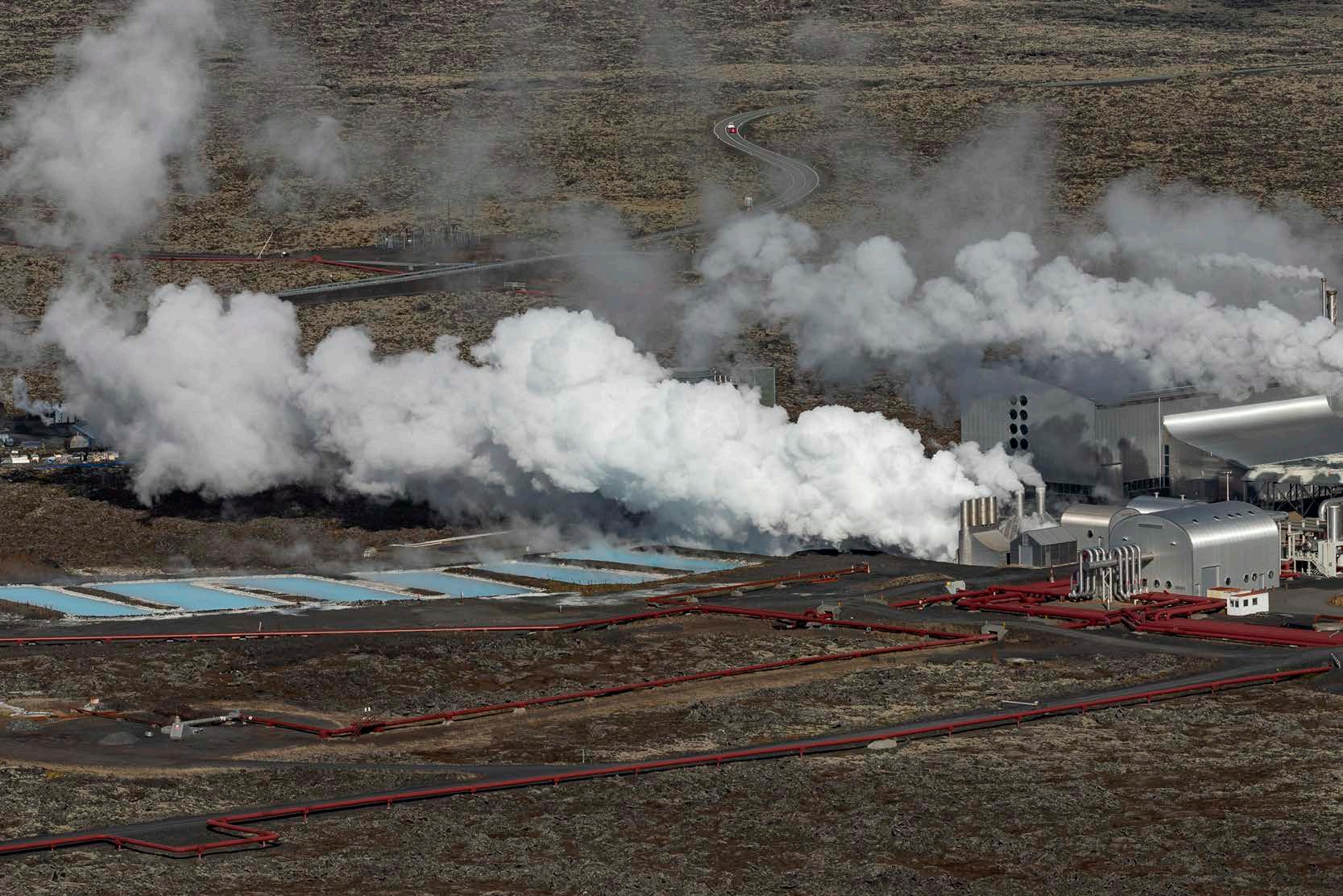
13 Feature
Anthropocene
If we want to actually restore our climate, restore the planet, we have to do much better and we have to clean up the entire mess. Just like we learned in kindergarten: clean up your mess.
Iceland is importing so much and producing so little of what is utilised in society. It’s a hugely affluent country and actually relies extremely heavily on others to produce what Icelanders think they need or what they want to have in their lives.
“I think the important question is if it is enough and okay to just look at what happens within the country,” says Jukka Heinonen, a professor of Sustainable Built Environments at the University of Iceland’s Faculty of Civil and Environmental Engineering. “And Iceland is a great example in this context because it’s importing so much and producing so little of what is utilised in society. It’s a hugely affluent country and actually relies extremely heavily on others to produce what Icelanders think they need or what they want to have in their lives.”
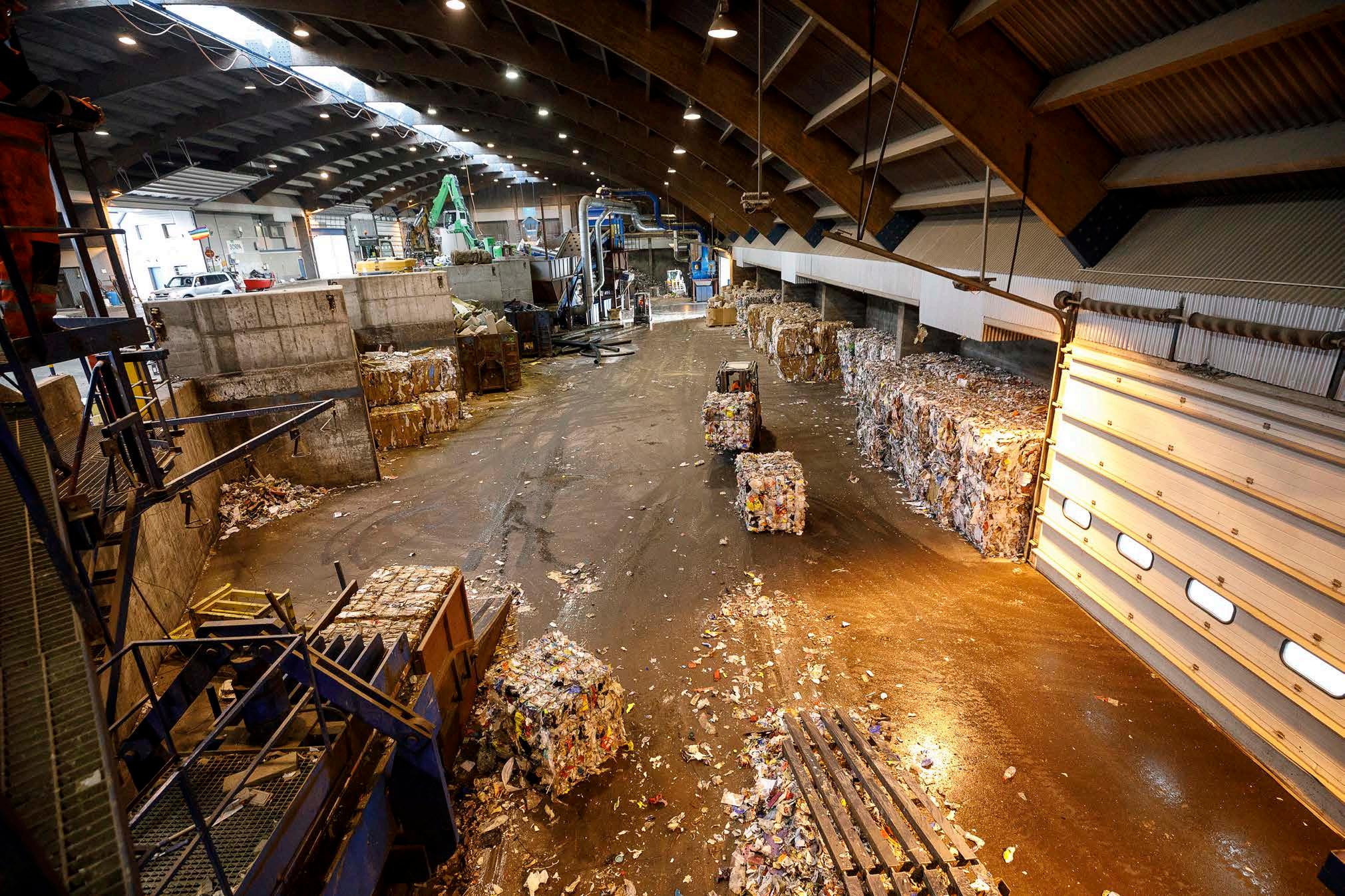
Jukka has published studies on the consumption-based carbon footprint of Icelandic households and found that, despite the country’s green energy, household emissions in Iceland are equivalent to households throughout the EU. In fact, he found that Iceland’s actual carbon footprint is 55% higher than the emissions it is generating within its territory simply because of the volume of goods it imports. In this way, the burden of the emissions driven by Icelandic consumption falls squarely on developing nations.
The result is what Jukka has called a “low carbon illusion” where affluent countries believe they’re curbing their emissions, but global emissions continue to grow.
“If you only look internally, then the situation can end up that a country – our country – can be declared a model for a low-carbon future. And then at the same time, the global emissions just go up and it’s not because of other countries or not necessarily because of other countries not caring about climate mitigation, but because they are producing
EXPLORE UNSEEN ICELAND ON
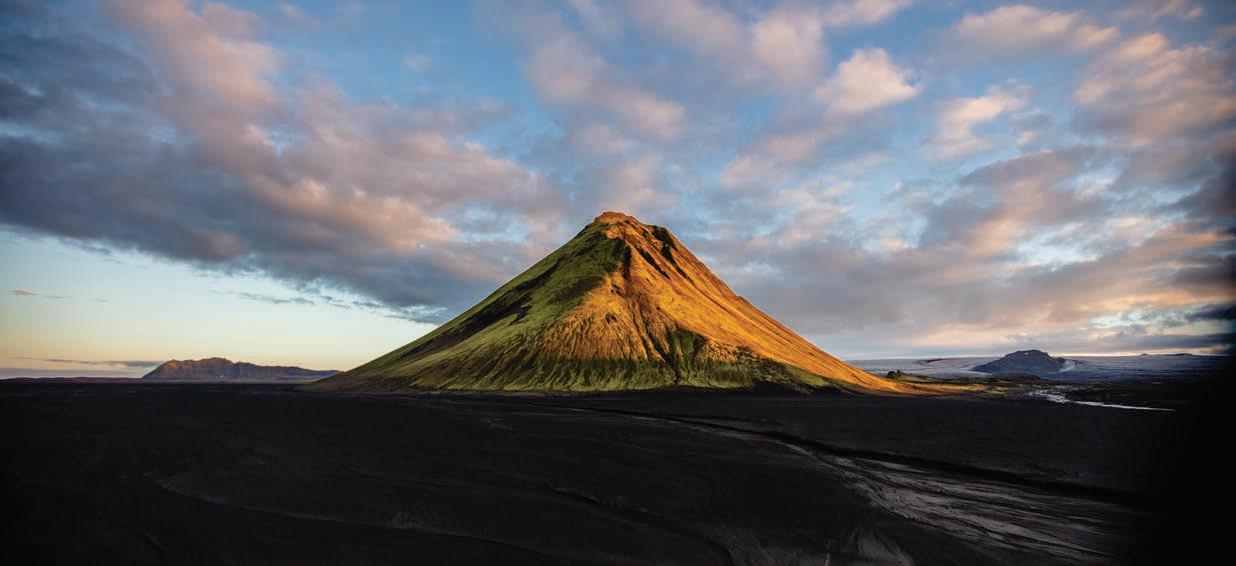
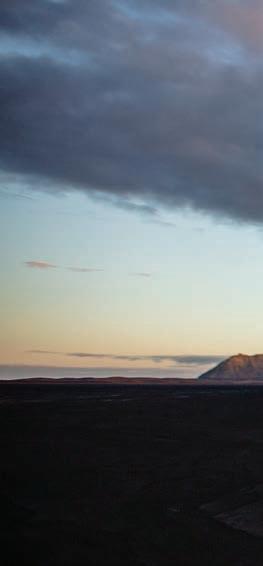

PUTTING THEIR MONEY WHERE THERE MOUTH IS
As Ack told the OK Bye conference, “the current approach [governments have been taking] is incremental and the change is exponential. We’re trying to beat an exponential problem with incremental actions. That is a receipt for failure.”

The good news, if innovators in the climate space are to be believed, is that we have the tech and the knowledge and innovation to take more and bigger action against the problem. What is needed is money
In addition to Iceland thinking beyond its own borders when calculating its emissions targets, Jukka would like to see a shift in how the country provides the highest amount of well-being to the population without it being linked solely to economic growth. “There could be growth in those sectors that are beneficial in terms of mitigating climate change, for example, and providing well being,” he says. “That would be looking beyond just the economic perspective to it and instead look at the real well being and the future well being of society.”
“When I was in parliament,” Smári recalled, “I was asking like, ‘OK, you’ve got this great ambition here. Where’s the money to back it up?’ Because at the end of the day, anything that the government does needs to be paid for. If you’re not paying for the outcomes, you’re not actually going to get the outcomes.”
If the government is going to make a real dent in its climate goals and not simply continue to fall back on its self-perpatuated images as a geothermal haven, there has to be more money funnelled into forestry, bike lanes, taking old cars off the road and other similar initiatives that Smári said have positive impacts. There has to be a shift to self-reliance, local production and more accountability for our environmental impact as it extends far beyond our
There is a chance for Iceland to make significant steps toward reaching its climate goals and to contribute to the world collectively reaching a place where we can focus on repair and graduating into a symbiocene, a place where we’re working with and for nature rather than continuing on the destructive path we’ve been on.
It’s going to take more than geothermal energy and electric cars.

The Reykjavík Grapevine 7 / 23 14 Feature
THE ULTIMATE FLYING RIDE OPEN EVERY DAY | flyovericeland.com
OK, you’ve got this great ambition here. Where’s the money to back it up? Because at the end of the day, anything that the government does needs to be paid for. If you’re not paying for the outcomes, you’re not actually going to get the outcomes.
The Grapevine’s Top Picks
BJÖRK & FRIENDS AN TI-WHALING PROTEST

June 3
Old Harbour at 14:00 / Smekkleysa Records at 15:00
Free
In 2022, 148 fin whales were hunted and tortured to death by the whaling company Hvalur Hf. Among them, 11 were pregnant and one was lactating, resulting in the death of at least as many calves. The outcry against commercial whaling by this sole company has only been getting louder and louder in recent years, and our beloved artist and defender of nature Björk is at front and centre of this fight. Join her in protest of the cruelty against our gentle precious
3.500 ISK full pass / 1.500 ISK day pass
Start shaving your body and say goodbye to the pool for the next month, cause it’s time to ink up, baby! Going strong since 2006, the Icelandic Tattoo Convention is back for another buzzing year full of sick designs, black ink, bloody paper towels and yelps of pain. The festival hosts guest artists from all over the world, some of whom have built quite a reputation and loyal following, so get there early if you want to book a time with someone. You, too, can be one of the lucky ones that get to act tough while getting stabbed for the sake of art. RX
HAFNARFJÖRÐUR VIKING
Happening
Port-Side Celebration
Gallery Port turns seven
bition of their colleagues, the artists who have been with them over the years, both dear and distant.
STARTING ON BORROWED TIME
Experimentation has always been the name of the game for Gallery Port. It all started across the street, in a ramshackle space behind the old Macland store on Laugavegur back in 2016. Old friends and artists
types. Without any defined curatorial concept, they began by providing emerging artists space and creating excitement around themselves and the art scene. But nothing felt certain.
“We were always on borrowed time,” says Skarphéðinn. “We only had three to five months, and then we had six months and then maybe one more year, but maybe not. It was always about to be torn down, and
As the gallery has grown, gained solid ground and a strong reputation for the quality and range of its exhibitions, Árni and Skarphéðinn have faced newer challenges in their shifting roles.
“First and foremost, we are artists and running this place like this for seven years, it needs some business mentality as well, and that’s not that’s not what we are best at,” Árni admits. But thanks to help from their friends with MBAs, they have been resourceful in keeping their ambitious space going strong.
CELEBRATION TIME
FESTIVAL
June 14-18
Viðistaðatún Park
Free
Learn to be a Viking and spend five whole days eating, dancing, playing and crafting like a Norse warrior while shopping for leather wares, furs, jewelry and horns – not on the helmets though, that would be silly. The adrenaline-filled highlight of it all: the Viking reenactment fights! The event takes place at the Víðistaðatún park in Hafnarfjörður and you’re free to leisurely stroll around the open market from 1319. And the best part – apart from the outfits, weapons and beards of course – the entrance is free! CM
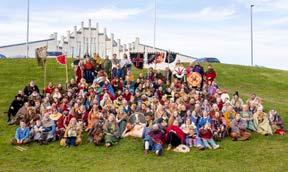
Jutting out from the facade on one of the busiest parts of Laugavegur, it’s hard to miss Gallery Port. The front and side walls are huge floor-to-ceiling windows through which whatever’s happening inside will catch your eye. Whether it’s irreverent paintings, curious installations, or hyperactive happenings, the gallery’s experimental and exciting exhibitions draw you in. They are now celebrating their seventh anniversary with a massive group exhi-
Skarphéðinn Bergþórusson and Árni Már Erlingsson were working on an exhibition together, which has never actually seen the light of day. “I guess it will be the final exhibition of Port or something,” says Árni.

“Meanwhile, we got a call from a friend of ours who owned the computer store and he offered us the other small space,” Árni recounts.
“He said we could have it for three to five months and then he was going to tear it down. So we just went kind of insane because we thought we only had this short amount of time.”
In this short time, they threw roughly twenty events ranging from exhibitions to concerts and parties, showcasing young emerging artists of all
because of that, we didn’t fix it up. It was cold and always leaking when it rained, and we stuck it out anyway.”
FRIENDS WITH (BUSINESS) BENEFITS
Their tenacity paid off for nearly six years in that space. In November of 2021, they moved just across the street into their current – hopefully permanent – location, giving them a sense of establishment that they previously lacked.
“It’s warmer, it’s bigger, it’s brighter, it’s probably better health wise,” Skarphéðinn muses of their current home, the lease on which they have been guaranteed at least through 2024.
Port is now celebrating seven years of challenges, changes and shifts with a massive month-long exhibition called Kollegar (‘colleagues’), which opens June 3. The show will display works from nearly 40 artists, including established names like Loji Höskuldsson, Korkimon, Sigtryggur Berg Sigmarsson, Auður Ómarsdóttir and their erstwhile co-owner Þorvaldur Jónsson, as well as fresher names in Icelandic art like Natka Klimowicz, Julie Sjöfn Gasiglia, Joe Keys and Fía Yang. They will also show the work of the beloved late Svavar Pétur Eysteinsson, aka Prins Póló.
“It’s always just more and more fun for us,” says Árni, of the gallery’s growth. “I’m not sure how to say this without offending anybody, but when you start off, you don’t like every exhibition. Of course today, we still maybe don’t like everything, but we’re always working with more solid artists that we like to work with.”
It’s exciting to imagine how Gallery Port will evolve over the next seven years. Maybe a return to their roots – that old location still hasn’t been torn down.

15 Culture
WORDS Rex Beckett IMAGE Art Bicnick
I’m not sure how to say this without offending anybody, but when you start off, you don’t like every exhibition. Of course today, we still maybe don’t like everything, but we’re always working with more solid artists that we like to work with.
Movies On The Fjord: A Taste of Skjaldborg
Not
WORDS Iryna Zubenko

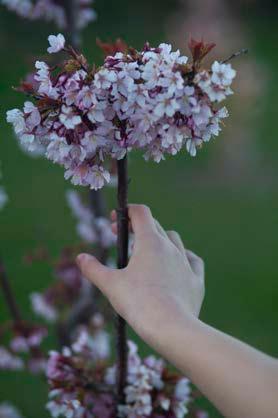
IMAGES Art Bicnick
local. And a splendid fish feast. This is Skjaldborg.
ALL ROADS WEST
Skjaldborg is an annual documentary film festival in Patreksfjörður, the largest town in the southern Westfjords, located about a five-hour
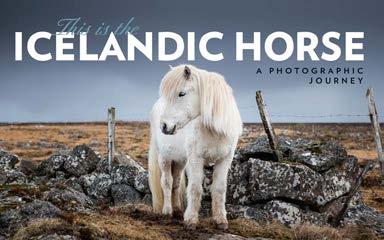
parked cars — the atmosphere inside FLAK, one of Patreksfjörður’s liveliest bars, is the complete opposite. On one side of the bar, locals eagerly enjoy the eponymous IPA, while on the other, familiar faces from Reykjavík mingle, as if everyone from Kaffibarinn has migrated to FLAK for the night. The lights dim and the au-
Acouple in their seventies strolling towards the cinema, clutching a six-pack of beer. A steadfast group of 10-year-olds always claiming the central seats in the front row. A duo of filmmakers taking turns between movie screenings and babysitting the children. Local women whose plokkfiskur recipe elicits applause on par with a grand movie premiere. A choir singer about to pitch his tent, instead finding a warm place to stay courtesy of a generous
drive from Reykjavík. “This festival is all about quirky traditions,” says Skjaldborg’s project manager, Kristín Andrea Þórðardóttir, as we meet at the festival’s opening party.
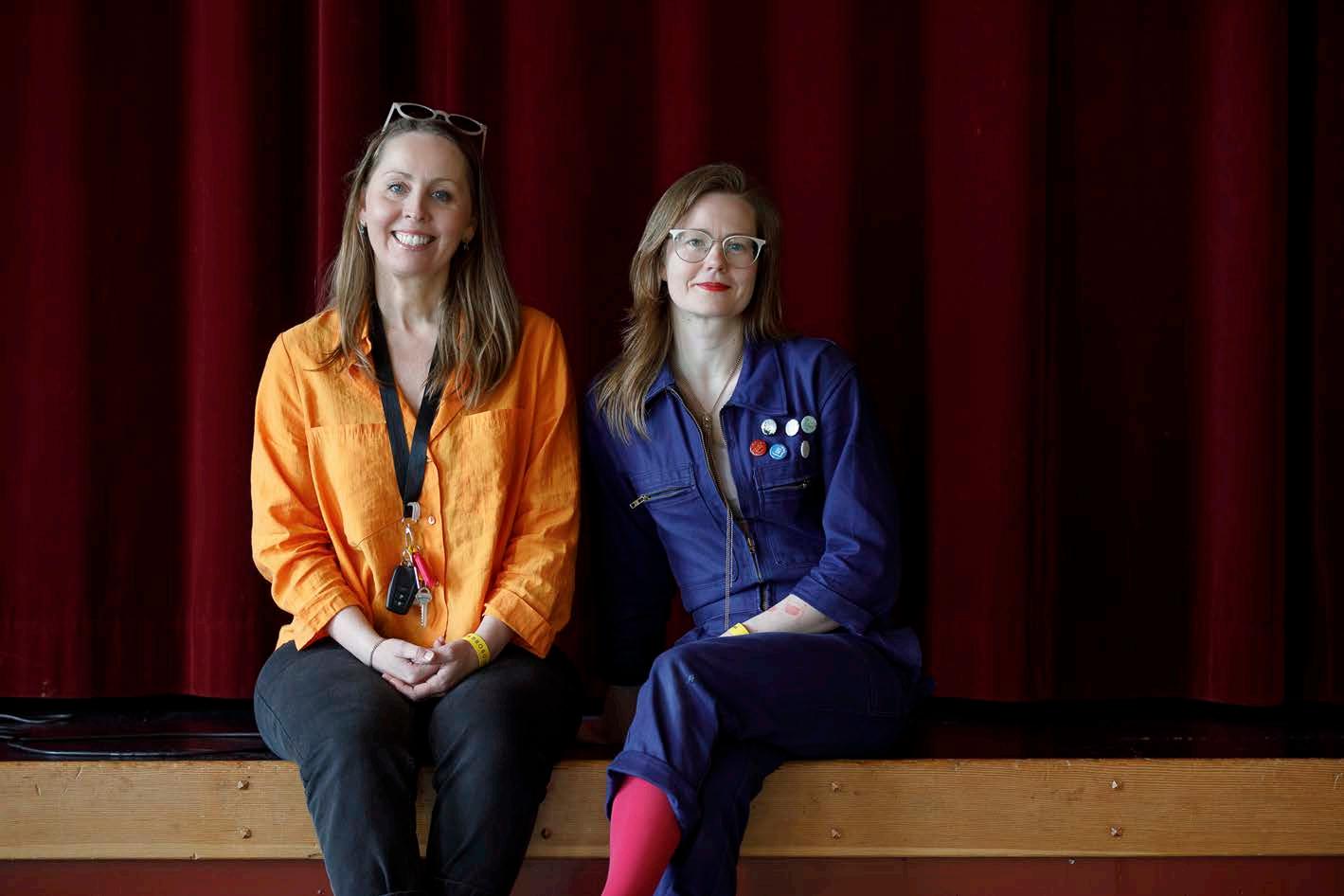
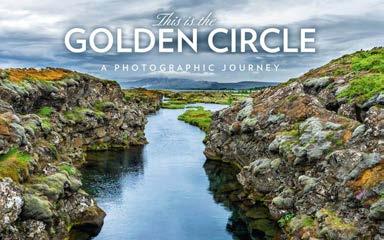
Despite the miserable weather outside — pouring rain and fierce Icelandic winds that could easily damage
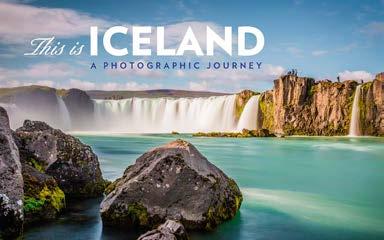

dience is treated to some clips from the National Film Archive of Iceland, before bursting into laughter. Can movies really bring people together?
Karna Sigurðardóttir, who runs the festival together with Kristín Andrea, believes they can. According to Karna, the idea of Skjaldborg dates back

The Reykjavík Grapevine 7 / 23 16 Culture 06.05.–08.07. Fimmtíu plöntur fyrir frið Fifty Plants for Peace
Elvarsdóttir
Katrín
Film Feature
your average film festival Forlagið
| Fiskislóð 39 | www.forlagid.is ICELAND’S LARGEST BOOKSTORE
ICELAND
bookstore
THIS IS
fit into your pocket!
Memories from Iceland that
In addition to showcasing Icelandic documentaries and works-in-progress, Skjaldborg takes great care in selecting guest filmmakers for the festival.
bers included producer Anton Máni Svansson, choreographer and visual artist Margrét Bjarnadóttir and documentary filmmaker and anthropologist Jón Bjarki Magnússon. “Some of the founders are still involved. We have a really solid group of people that we can call for opinions,” Karna explains.
CONNECTING THROUGH DOCUMENTARIES
While the number of people who can visit Skjaldborg is limited to the seating capacity of the cinema, the organisers make efforts to attract as many locals as possible. “Inclusivity is really important to us,” says Kristín Andrea. “From the beginning of the festival, all the screenings have been free to encourage people from here to pop in for a screening or two, even though they may not be able to come for the whole weekend.”
programming — a shared experience from start to finish. This is quite a different experience from other festivals,” says Karna.
The Icelandic film industry has developed a lot since the festival began, Karna stresses. “We’ve been seeing huge changes — more films are being made by a more diverse group of people. The quality is also increasing.”

What makes the 2023 programme special is how intimate the stories are, regardless if it’s a short film or a full length documentary. “Deeply intimate, but very much feel good,”
Kristín Andrea adds. The Audience Award, known as the Einar and named after a local carpenter who has been crafting it since the festival’s inception, this year went to Heimaleikurinn (The Home Game) directed by Smári Gunnarsson and Logi Sigursveinsson. The doc is a cheerful story of a football team, destined to fail, but ultimately successful. Once you see the audience’s reaction to the movie at Skjaldborgarbíó, you are once again reminded that Icelanders really like football. The film gets a roaring applause, followed by a soundtrack
started the Jury Award,” says Kristín Andrea. “From the beginning, the Audience Award has been the only award. What we brought along with it was the prize money.” She emphasises that the prize money gives aspiring filmmakers a long-awaited boost for their projects. In 2023, the two winning films received 500,000 ISK for equipment rental from KUKL and 250,000 ISK for post-production services from Trickshot.
THE HEARTBEAT OF SKJALDBORG
While one might agree the heart of
Skjaldborg is Skjaldborgarbíó, it’s the people who visit the festival who truly make its heart beat. “Skjaldborg is about just being here together and talking,” says Karna. “This is the beauty of Skjaldborg — the conversation that happens.”
“You can’t explain Skjaldborg to anybody, only those who have been here,” adds Kristín Andrea. Skjaldborg has everything: local boys never missing a single screening (how does one even get kids interested in documentaries?!), local women making enough plokkfiskur to feed even the hungriest moviegoers,
not one, but two fish parties (forget popcorn, it’s all about cod), a parade that takes over the town with festival flags dancing under the midnight sun, locals opening their doors to greet the festival crowd, a limbo stick carefully boxed in the cinema until next year’s competition, and a conga dance that circles around the town’s community building like an organism of its own.
Just come and see for yourself. This is Skjaldborg!
Fiber Art Exhibition
June 3 – June 27
“We also get regulars that come every year from Reykjavík and from other places. It’s not only filmmakers, it’s also documentary lovers. This festival has definitely created more appreciation for the documentary form in Patreksfjörður and the surrounding area,” adds Karna, emphasising that Skjaldborg also draws visitors from Ísafjörður, Flateyri and other towns scattered throughout the Westfjords and Snæfellsnes peninsula.
The importance of Skjaldborg for this community is evident from the fact that there are hardly ever any empty seats in the cinema. As we wait for the closing film to begin, I take a peek outside and see crowds of people strolling along Aðalstræti, heading towards Skjaldborgarbíó. It feels as though at least one person from every single house in Patreksfjörður is participating in the festival in one way or another.
A QUALITY REVOLUTION
In terms of film programming, Skjaldborg is unique because it relies on one cinema. “It’s linear
performed on the cinema’s stage by a rap duo. What else could you want?
Soviet Barbara, a film by Gaukur Úlfarsson, received Skjaldborg’s Jury Award. The film follows contemporary artist h hhRagnar Kjartansson on a trip to Moscow for an ambitious exhibition that faces censorship until the artist makes the decision to cancel the exhibition on the day Russia invades Ukraine. Skuld (For the Love of Cod) received the special mention of the festival. It follows a couple through their journey of starting in the fishing industry.
In addition to showcasing Icelandic documentaries and works-in-progress, Skjaldborg takes great care in selecting guest filmmakers for the festival. After attending several screenings and artist talks with the 2023 guests — Corinne van Egeraat and Petr Lom, one starts to truly appreciate the universality of human beings, regardless of whether the movie was filmed in Iceland or Myanmar.
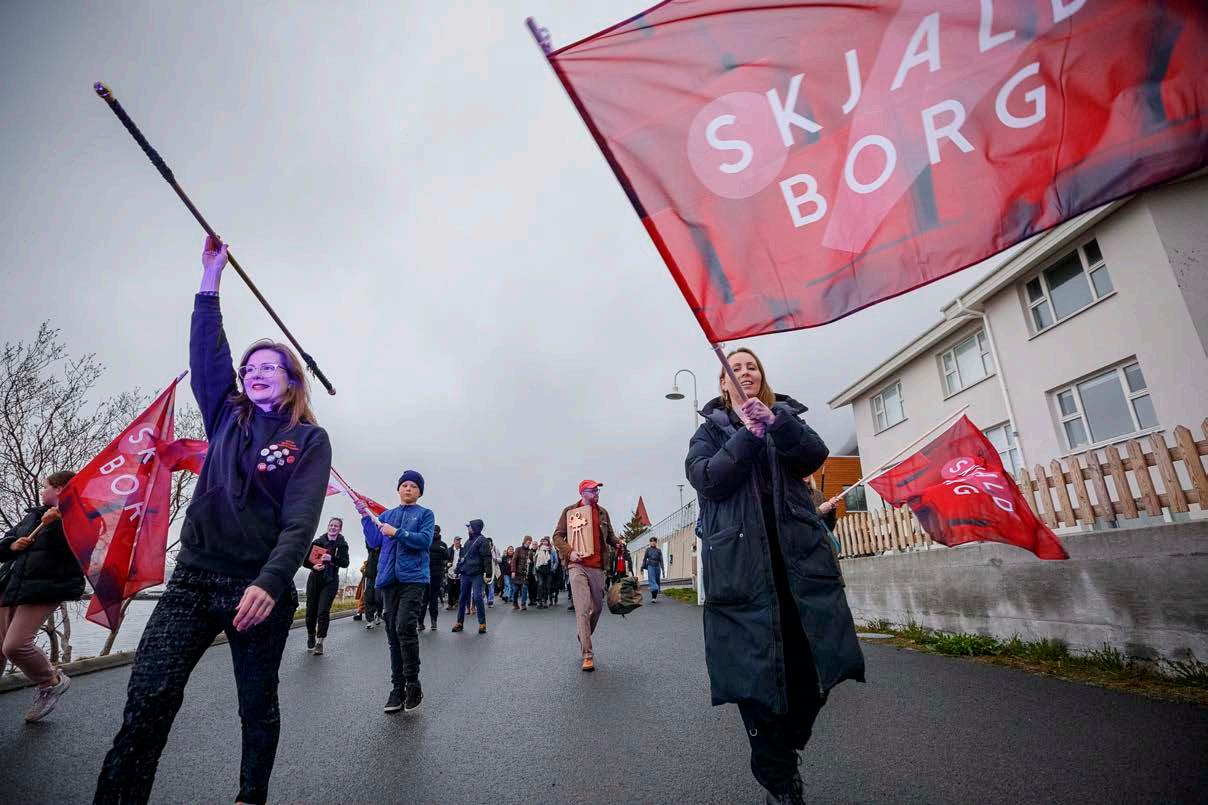
“The most drastic change to the festival was back in 2017, when we
Inspired by Icelandic Nature
By Textile Artist
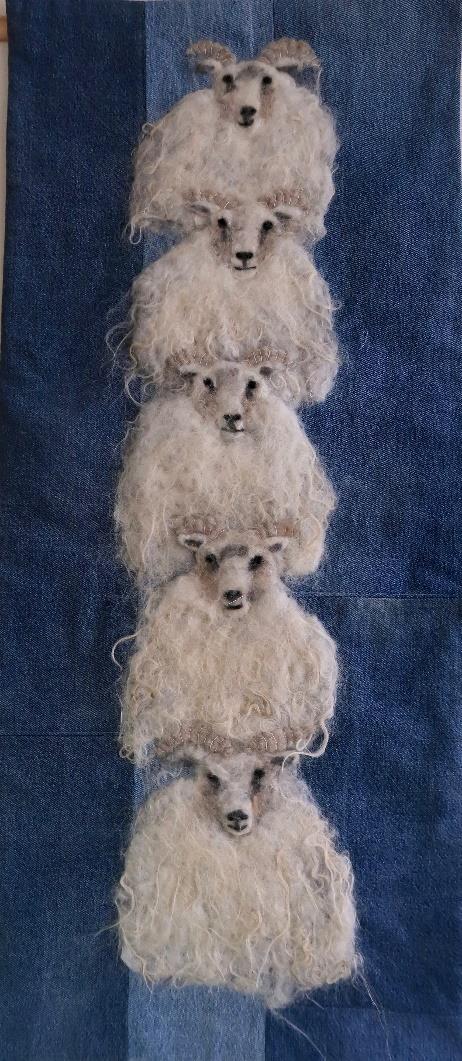
Heidi Strand
Listhús Ófeigs
Skólavörðustígur 5 101 Reykjavík
Opening hours: Mon – Fri 10AM – 6PM Sat 11AM – 4PM Free Entry
17
HE I Ð I
You can’t explain Skjaldborg to anybody.
Unmasking The Burden Of Being A Woman
WORDS Iryna Zubenko
IMAGE Art Bicnick
In a quest to better understand how movies are dubbed in Iceland, we find ourselves in front of an unremarkable building in the industrial block of Hafnarfjörður. Contrary to its unassuming exterior, Myndform holds a delightful surprise within its rugged exterior: an in-house cinema and walls adorned with beloved cartoon characters. Eager to show us around is studio manager Bjarki Gunnarsson. As the first door opens, I catch a glimpse of a new episode of Moominvalley on the screen – this is a movie geek’s version of Disneyland.
graduate students display their final projects. It quickly became evident her work delves into profound and intimate subjects, capturing attention with its multiple layers.
RADICAL SOFTNESS
As an artist, Júlíanna is constantly experimenting with different medi-
artist’s personal experience. “These are casts of my breasts that I’ve taken myself,” says Júlíanna as she shows me two delicate pink sculptures. The artist deliberately omitted one step from the cast-making process, resulting in the pieces’ delicate appearance. “They look very defeated and deflated. This is about my own personal experience with
the different aspects of that.”
THE WEIGHT WITHIN
It was the use of colour that initially attracted me to Júlíanna Ósk Hafberg’s work – shades of pink, turquoise and blue. Her art exudes a sense of softness, flow and lightness, or so it seems at first glance.
We met at the MA Fine Arts Degree Exhibition at The Living Art Museum, where Júlíanna and six other
ums — painting, textiles, jewellery, glass cutting, woodwork, sculpture and writing. With a smile, she says, “I’m just very creative. I’m very playful and explorative in my art.”
She describes her art as embodying a borderline radical softness and vulnerability. “My art is very much based around the notions and the thoughts around bringing more soft, feminine energy,” she explains. “It’s something that I found I was missing in society, especially in our more harsh capitalist structures. I like to use vulnerability very deliberately. I also like challenging what we have labelled as ‘girly’ or ‘women’s art.’”
Imbalance in the world and our society often serve as a starting point for discussions that fuel Júlíanna’s artistic expression. “It’s quite radical to be vulnerable in a society that is in some ways sort of individualistic,” she says.
BEYOND MOULDS
Júlíanna’s graduation artwork titled Byrði þess að vera kona (The Heavy Burden of Being a Woman) offers a very intimate glimpse into the
carrying very big breasts all my life,” Júlíanna shares.
The piece is based on Júlíanna’s eponymous poem. “It’s almost like an autobiographical poem that traces my journey from the time I got my breasts when I was 11, and then all these different experiences I had — having to go to an adult lingerie store when I was 14, because my breasts were already too big to shop in normal girls’ stores, being sexualized at 15, slutshamed, and also just the burden on the body, the physicalness of it — the pain in the back and the neck,” she explains.
In the piece, Júlíanna incorporates the words starting with the letter B from the poem. They have, in a way, become a poem on their own — words like ‘byrði’ (burden), ‘bungur’ (the breasts), ‘blúndur brjóstahaldara’ (lace bra), ‘blöðrur’ (balloons) underline the artist’s personal struggles.
“In this piece, I’m going straight into the vulnerability of exposing my own journey,” Júlíanna says. “I’m talking about the physical, mental and societal burden of being a woman and
Júlíanna opens up about her yearslong struggle with chronic pain. The strain on her shoulders, back and jaw has been so severe that she has been seeing chiropractors since her teenage years. Júlíanna has always wanted to undergo breast reduction surgery, and coincidentally, the procedure will take place just a day after the exhibition concludes. “That’s also where this comes from,” she explains, adding: “There’s also this level of dealing with the healthcare system that we have here.”
Júlíanna shares how she has been trying to get the surgery through public health insurance, but due to stringent rules and long waiting lists, this became increasingly difficult.
Júlíanna, like many other women
definitely a feminist piece,” she affirms. “I just wanted to shed light on these things. As women, we carry a lot of things with us without openly talking about them — we hide our tampons when we go to the bathroom. We’re sort of taught to do all those things. [This piece] is about wanting to open up to it. I think many people and women relate to a lot of things that this piece is talking about.”
WHERE ART GOES NEXT
facing similar circumstances, has decided to go private. “This kind of procedure costs about a million ISK,” shares Júlíanna.
“The piece came out of my whole journey going through this process,” she reflects. “Being an artist, I wanted to capture this and the feeling. I feel like I’ve done that — the piece has managed to capture the feeling of the burden, the heaviness and the exhaustion of it all.”
Júlíanna agrees that one can evoke empathy by sharing their story. “It’s
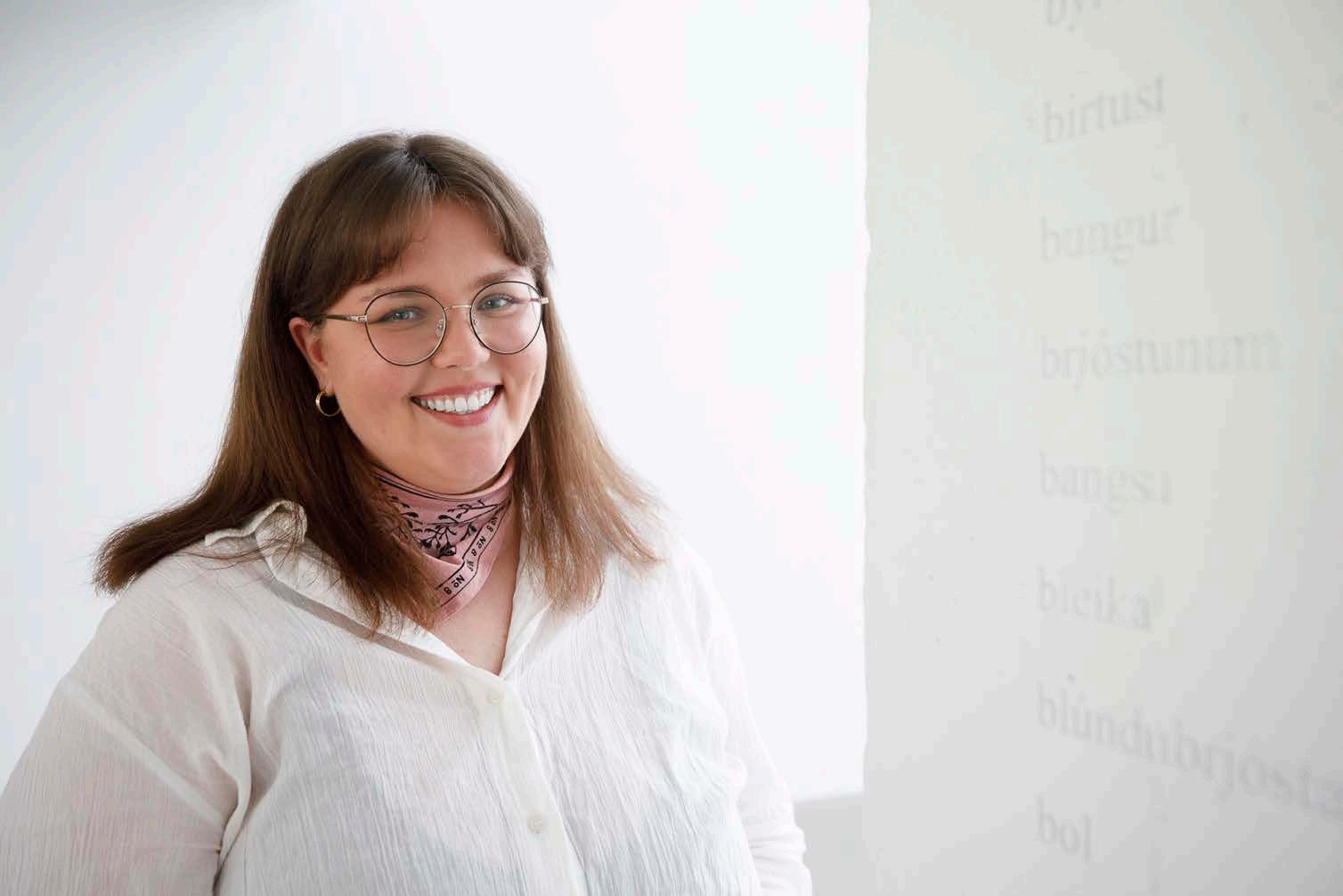
Following the surgery, Júlíanna will take a break from work, as she needs to refrain from lifting objects for approximately six weeks. With new projects still up in the air, she’s confident she wants to keep this piece. “I’m so much in the process of going through these emotions right now,” she confesses. “It’s not a retrospect, it’s not something that has happened. I’m working through it.”
“I’m so interested in seeing how these pieces look or feel in a year or straight after my surgery. I don’t know what happens,” Júlíanna admits. “I’m very much putting myself for show. These are my breasts on display. It’s definitely the most vulnerable piece that I’ve done.”
Check out Byrði þess að vera kona along with other MA graduates’ projects at The Living Art Museum through June 4.
The Reykjavík Grapevine 7 / 23 18 Culture
Culture Feature
Júlíanna Ósk Hafberg embraces womanhood through intimate reflection
It’s quite radical to be vulnerable in a society that is in some ways sort of individualistic.
It’s definitely the most vulnerable piece that I’ve done.

Centre Map
We're here to fill you in on our personal favourite places around town – and a few to consider avoiding.
Dining
1 NAPOLI Tryggvagata 24
We love places that do one thing and do them damn well. This takeaway place is a case in point. Napoli offers sourdough Neapolitan-style pizzas with a menu to match – think margherita, quattro formaggi, parma, calzone – plus vegan options and magnificent sandwiches. Look out for their lunch offer, every day from 11:30 to 15:00. JT
2 G AETA GELATO Aðalstræti 6 & Hlemmur Mathöll
Gaeta Gelato is at the centre of a heated ongoing debate at the Grapevine office about who makes the best ice cream in the country. For those keen on the deep tastiness of Italian gelato, this place is IT. They are also located right smack downtown, so you can take that icecream for a stroll – we suggest a stroll to their other location for another scoop. JT
3 PLANTAN Njálsgata 64
This cute little neighborhood cafe is 100% vegan and does a few things right: their soup of the day menu updates every week and uses seasonal produce, they mastered the plantbased cheese bun recipe to perfection, and this might be the most hearty vegan brunches in town. Look out for the daily bun and coffee deal, it truly is like a warm hug. IZ
4 BR AUÐ & CO. Frakkastígur 16 (and other locations)
If you’re dying to have some of the finest pastry, look no further than Brauð & Co. Although the bakery has several locations around town, our hearts are devoted to the Frakkastígur one. You have to try their pretzel croissants, vegan cinnamon rolls, and weekend specials. There’s nothing quite like sitting on a bench at the intersection of Njálsgata, Frakkastígur, and Kárastígur, sipping coffee and enjoying the sun. A true weekend essential! (Beware of windy weather, as some of our team members may or may not have had their pastry stolen by the wind at that exact spot.) IZ
5 CAFÉ BABALÚ
Skólavörðustígur 22
This quirky café hangout is a great choice when you’re looking for a cozy, chill experience. Decked with kitschy decor and plush chairs, the café is perfect for a refuge from an instant shower of rain. If you’re looking to snuggle up with a book and a good cup of coffee, look no further. JB
6 BAN THAI

Laugavegur 130
The absolute GOAT – as they say – in Thai cuisine in Reykjavík. Ban Thai’s menu is dotted with little symbols of chili, denoting the spice level of each course. You’re welcome to order a level-5 chili course, but do so at your own risk. JB
7 GR ÁI KÖTTURINN Hverfisgata 16a
This no-nonsense downtown staple has been serving Reykjavík dwellers quality breakfast food since 1997. Tucked away in a cute cellar, the diner boasts retro Icelandic design charm, while its menu is far from outdated. Pancakes, bagels, and frying oil all have their special place at Grái Kötturinn. As Grái Kötturinn closes at 14:30 every day, it’s not a place for nighthawks, but early-birds. JB
8 CHICKPEA Hallveigarstígur 1
This Mediterranean-inspired restaurant is a great place for a quick bite. Servings are generous and the food nutritious, meaning you’ll go full well into the day. They do wraps, falafels, and all kinds of salads exceptionally well. Prices aren’t extremely steep, but nothing to write home about either. JB
9 KRÓNAN Hallveigarstígur 1 & more locations
If you’re ever in a pinch while looking for something cheap to eat if you’re downtown just go to Krónan and pick out some flatkökur. Flatkökur goes great with everything. Be it the Mediterranean/Icelandic fusion of lathering some with hummus, or turn it into a poor-man’s pizza with pizza sauce and cheese. Honestly, the flatkaka is an empty canvas for you to paint your wildest dreams on. JB
Drinking
10 APERÓ VÍNBAR
Laugavegur 20b
A wine bar that is both opulent and accessible? Yes please. The small team at Aperó remember the orders of regulars and make first-timers feel like regulars. If you know what you like, Aperó will tick your boxes; and if you’re new to wine, the sommelier will soon unite you with your ideal glass. CF
11 KEX HO STEL
Skúlagata 28
The former biscuit factory now serves as a trendy hostel, with a bar, restaurant, and a live concert space. There’s always something going on, and if not, it’s a great spot to grab those after-work drinks. With a rotation of foreign tourists who stumble onto a heavy metal show happening in the restaurant, you’re always bound for an enjoyable experience. JB
12 KAFFIBARINN Bergstaðastræti 1
No words are needed for Kaffibarinn. The hangout spot for the who’s who of Reykjavík. Frequented by Blur members in the 90s, drug dealers, and middle-managers, Kaffibarinn is an establishment in itself. JB
13 VITABAR Bergþórugata 21, Iceland
If you’re staying in Reykjavík more than a few days, you ought to find your own dive bar – this is ours. It seems like the time froze at Vitabar, but we love it that way. People come for their famous blue cheese burger, but stay for a few pints and delicious fries. Sometimes I wish Vitabar discovered craft beer, but I go back nevertheless – for a late night bite and Thule on draft. IZ
14 VÍNSTÚKAN TÍU SOPAR Laugavegur 27
There are a few bars in Reykjavík that have learned how to do wine right, and Vínstúkan Tíu sopar, although located in the middle of the chaos and tourist buzz of Laugavegur, is one of them. Craving Pét-nat? In the mood for orange wine? Ready to explore small Slovenian wineries? You name it – the bar’s staff will be ready to come up with suggestions that will suit any pocket. Don’t get me started on their small bites to pair with wine – I’m already dreaming about their grilled peppers and torched broccoli with salted lemon. IZ
Shopping & Activities
15 BÍÓ PARADÍS Hverfisgata 54
Sometimes the smell of popcorn fills the air of Hverfisgata, as if beckoning you to come inside. You succumb and find yourself in the cutest art house cinema with colourful posters on the walls and vintage-looking bar straight outta Wes Anderson movie. There’s always a film screening and you rarely need to book tickets in advance, so enjoy the old school walk-in experience and one of the best Happy Hours in town. IZ
Random Spots
16 EINARSGARÐUR Laufásvegur 79
This little green space nestled into the curving juncture of Laufásvegur and Gamla Hringbraut is an oasis in the city. Exposed to full sun seemingly all the time, it’s a peaceful spot to stroll through, climb trees, luxuriate on the grass or toss the ball for your four-legged friend. Don’t do that last thing, though. It’s not allowed. CF
Be Warned
17 101 BISTRO Austurstræti 3
The bistro on the corner of Ingólfstorg and Austurstræti that has a plaque outside saying, “Come in and try the worst [insert popular food item] that one guy on Tripadvisor said we had”, or something like that. It’s a trap, do not go there. That plaque has been in the same spot ever since Hrunið. RG
18 SBARRO Austurstræti 17 & Vatnsmýrarvegur 10
“What is this shit?” is how Greil
Marcus famously opened his review of Bob Dylan’s 1970 album in Rolling Stone. It is appropriate here. It looks like pizza, it is sold as pizza, it’s priced like foie gras, but it tastes like salted shit. Avoid. RG
19 REYKJAVÍK FISH RESTAURANT Tryggvagata 8
Our beef with this place has to do with their “plokkari” (Traditional Icelandic Fish Stew). The fish stew is what you make out of fish leftovers and potatoes, adding bechamel sauce, topped with cheese and then baked. It’s generally a good dish, a great way to avoid wasting food and it costs next to nothing to make. Taste wise, there is nothing wrong with how Reykjavík Fish makes their “plokkari”, the problem is that the volume you get for the price is unacceptable; a tiny cast iron pan of fish stew for 2.690 ISK. An outrage. RG
20 LEBOWSKI BAR
Laugavegur 20a
A joke that’s gone too far. The longest lasting theme bar that sprung up during a theme-bar craze many years ago. The Dude does not abide. RG
The Reykjavík Grapevine 7 / 23 20 Map FÁLKAGATA STURLUAGATA EGGERTSGATA LYNGHAGI STARHAGI VESTURVALLAGATA MÝRARGATA NÝLENDUGATA ÞORRAGATA EINARSNES BAUGANES SKILDINGANES SUÐURGATA HRINGBRAUT FISKISLÓÐ SUÐURGATATJARNARGATA LJÓSVALLAGATA HÓLAVALLAG. SÆMUNDARGATA FURUMELURBIRKIMELUR ESPIMELUR ÆGISGATA STÝRIMANNASTÍGUR NJARÐARGATA RÁNARGATAVESTURGATA BÁRUGATA ÖLDUGATA TÚNGATA TÚNGATAMARARG. SÓLVALLAGATA SÓLVALLAGATA HOLTSGATA HÁVALLAGATA HOLTSG. ÁSVALLAGATA GRENIMELURVÍÐIMELURREYNIMELUR DUNHAGI ARAGATA ODDAGATA HAGAMELUR HOFSVALLAGATA ARSTÍGUR BRÆÐRABORG FRAMNESVEGUR SELJAVEGUR ÁNANAUST GRANDAGARÐUR GRANDAVEGUR LÁGHOLTSVEGUR ÆGISÍÐA FORNHAGI MELHAGI NESHAGI KAPLASKJÓLSVEGUR MEISTARAVELLIR ÁLAGRANDI EIÐSGRANDI HRINGBRAUT TÓMASARHAGI KVISTHAGI HJARÐARHAGI Nordic House Culture Center University of Iceland National Museum National Library Hólavallagarður Cemetary Reykjavík Domestic Airport Terminal Maritime Museum FlyOver Iceland Saga Museum Aurora Reykjavik
Vesturbæjarlaug Swimming Pool
A
Peace Stone from Hiroshima



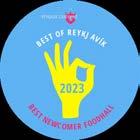
Tjarnargata near Skothúsvegur

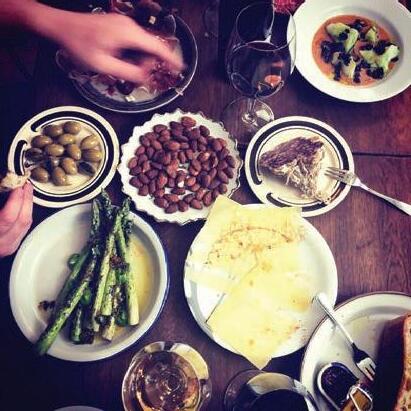

On the southwest side of Tjörnin pond in the heart of Reykjavík lies a small triangular sculpture garden with some beautiful public art. Among them is a monument for peace made from the remnants of one of the worst crimes against humanity, the atomic bombing of Hiroshima. The stones have been gifted to countries worldwide and come from the foundation of the city’s railways — left idle for decades to eliminate radiation — and later engraved by citizens of Hiroshima with the face of a Japanese goddess. Having just witnessed police carrying assault rifles in our quiet town in our unmilitarised country, it’s comforting to have these reminders that peace is what we’re here for.

21 Map HÁALEITISBRAUT LAUGAVEGUR BÓLSTAÐARHLÍÐ SKAFTAHLÍÐ ESKIHLÍÐ REYKJAHLÍÐ KRINGLUMÝRARBRAUT RAUÐARÁRSTÍGUR GUNNARSBRAUT ÞÓRUNNARTÚN STRÆTI SKÓLABRÚ LAUGAVEGUR HRINGBRAUT HAFNARSTRÆTI KIRKJUTEIGUR HRAUNTEIGUR KIRKJUSANDUR LAUGARNESVEGUR EIRÍKSGATA EGILSGATA HVERFISGATA LINDARGATA SÖLVHÓLSGATA SKÚLAGATA SÆBRAUT BORGARTÚN SAMTÚN LOKASTÍGUR BALDURSGATA BRAGAGATA VITASTÍGUR BARÓNSSTÍGUR SNORRABRAUT SNORRABRAUT BARÓNSSTÍGUR SKÓLAVÖRÐUSTÍGUR LAUFÁS VEGUR LAUFÁSVEGUR FJÖLNISVEGUR FREYJUGATA SÓLEYJARGATA NJÁLSGATA
MIKLABRAUT LISTABRAUT VATNSMÝRARVEGUR HRINGBRAUT BERGÞÓRUGATA HÓLMASLÓÐ SUÐURGATATJARNARGATA AÐALSTR. GARÐASTRÆTI GRETTISGATAFRAKKASTÍGUR NJARÐARGATA NJARÐARGATA NAUTHÓLSVEGUR MENNTAVEGUR VATNSSTÍGUR KLAPPARSTÍGUR BERGSTAÐARSTRÆTI BERGSTAÐARSTRÆTI FRÍKIRKJUVEGUR PÓSTHÚSSTRÆTILÆKJARGATA ÞINGHOLTSSTRÆTIINGÓLFSSTRÆTI ÓÐINSGATA ÞÓRSGATA VONARSTRÆTI AUSTURSTR. SKOTHÚSVEGUR TRYGGVAGATA GEIRSGATA VESTURGATA KIRKJU GRANDAGARÐUR BANKASTR. BSÍ House Center Austurvöllur Icelandic Parliament Eagle Air Terminal Sundhöllin Swimming Pool Landsspítali Hospital Sigurjón Art Museum City Hall Hallgrímskirkja Church Listasafn Einars Jónssonar Ásmundasalur National Theatre The Culture House Bíó Paradís Reykjavík Art Museum Marshall House Grandi Mathöll Harpa Concert Hall Hljómskálagarður Park National Gallery VÍNSTÚKAN Wine bar & food PHOTOS FROM ICELAND Skólavörðustígur 22 Klappið app The official ticketing app for public buses in the Reykjavík capital area Search for "Klappid" in the App Store or on Google Play.
GAMLAHRINGBRAUT
Spot This!
1 A B C E D 2 2 B C D E 3 4 5 6 7 8 9 9 10 14 15 16 17 18 19 20 11 12 13
Art Exhibitions 2.06–15.06
Gallery openings, happenings, showings and pop-up exhibitions all around the capital region
Opening
KLING & BANG
certain technicalities of being Multidisciplinary group exhibition of artists who all have their roots in the Los Angeles arts scene, between 2010-2020.
OPENS JUNE 3
RUNS UNTIL JULY 16
GALLERY PORT
KOLLEGAR / COLLEAGUES
Gallery Port celebrates their seventh anniversary with a group exhibition gathering nearly 40 of their artist colleagues. Artists on display include those who have previously shown work in the gallery, as well as first-timers.
OPENS JUNE 2
RUNS UNTIL JUNE 29
GERÐARSAFN (KÓPAVOGUR ART MUSEUM)
Rósa Gísladóttir – FORA
Rósa’s work is an exploration of geometry and classical form with references to architecture and Russian constructivism. Her sculptures play on the border of the classic and the modern at the same time in aesthetics and use of materials.
OPENS JUNE 3
RUNS UNTIL SEPTEMBER 17
HAFNARBORG CENTER OF CULTURE AND FINE ART Hildur Ásgeirsdóttir Jónsson – On a Sea of Tranquillity
On a Sea of Tranquillity presents new and older works where Hildur intertwines the methods of weaving and painting, as well as featuring embroidery, ink drawings and watercolours.
OPENS JUNE 10
RUNS UNTIL SEPTEMBER 3
ELÍSABET BRYNHILDARDÓTTIR – HESITANT LINE
A collection of drawings by Elísabet Brynhildardóttir, who observes time and feeling, as well as the experience of drawing.
OPENS JUNE 10
RUNS UNTIL SEPTEMBER 3
HAFNARHÚS (REYKJAVÍK
ART MUSEUM)
Kaleidoscope: Icelandic 21st Century
Art Works that have come to the museum in the last two decades. The collection spans the breadth of the Icelandic art scene, both by recognized artists of the time as well as the younger generation of artists.
OPENS JUNE 10
RUNS UNTIL DECEMBER 31
D 48: DÝRFINNA BENITA BASALAN
Dýrfinna Benita Basalan (b.1992), also known as Countess Malaise, has an active artistic practice and worked across various media. She draws inspiration from different countercultures, manga, queer culture and her personal experiences as a mixed race person.
OPENS JUNE 15
RUNS UNTIL AUGUST 20
LISTHÚS ÓFEIGS
Heidi Strand – HEIÐI
Heidi Strand is a Norwegian-born textile artist living in Iceland. She studied art in Norway and quickly mastered textiles of various kinds. This exhibition shows works inspired by Icelandic nature.
OPENS JUNE 2
RUNS UNTIL JUNE 28
Art Picks
Coney Iceland
June 8, 21:00
3.500 ISK
Are you a true freak? Are you down with the clown? Are you a mermaid trapped in a biped body? You just might be the kind of person who Coney Iceland wants to entertain!
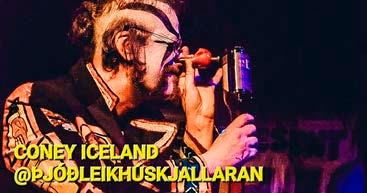
With their old school carny sideshow antics, the freakiest circus in town features sword swallowers, super strong gymnasts, burlesque beauties and a penis-painter. As in the paintbrush is their cock. How can you skip that? RX
For Those Who Couldn’t Cross the Sea
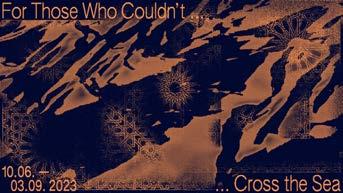
Opening June 10 (runs until September), 16:00
Nordic House Free
“Home is the barrel of the gun and no one would leave home unless home chased you to the shore.”
These gut-punching words of Somali-British poet Warsan Shire come to life in this group exhibition by five Middle Eastern artists grappling with the trauma of displacement from conflict. Bringing forward voices that are terribly underrepresented in Icelandic arts, these artists’ works confront ideas of identity, erasure, and belonging, and what it means to find a new home when you never wanted to leave yours. RX
NORDIC HOUSE
For Those Who Couldn’t Cross the Sea Multidisciplinary group exhibition that features the works of five Middle Eastern artists. The exhibition reflects on the experiences and challenges of refugees and migrants.
OPENS JUNE 10
RUNS UNTIL SEPTEMBER 3
PORTFOLIO GALLERY
Arngunnur Ýr – Eyrarrósin / Lily of the Valley Arngunnur Ýr shows new works of oil paintings on birch where she explores the Icelandic lily of the valley in a new and exotic environment.
OPENS JUNE 3
RUNS UNTIL JUNE 25
REYKJAVÍK MUSEUM OF PHOTOGRAPHY
Giita Hammond – View From The Sea Photography and video work taken while swimming in the sea with her friends in Dublin, Ireland, during the first year and a half of the Covid epidemic. The work is about friendship and freedom.
OPENS JUNE 3
RUNS UNTIL AUGUST 13
AND NOW IN FULL COLOUR! Colour photos from 1950-1970, when colour photography began to take root in Iceland.
OPENS JUNE 3
RUNS UNTIL SEPTEMBER 10
ÞULA
Kristín Morthens – Air Under Water An exhibition of paintings, an excursion exploring territories unknown, yet faintly recognisable landscapes etched into our psyche.
OPENS JUNE 3
RUNS UNTIL JULY 2
Ongoing
ÁSMUNDARSAFN (REYKJAVÍK ART MUSEUM)
Mentor: Ásmundur Sveinsson and Carl Milles Sculpture.
Runs until September 9
ÁSMUNDARSALUR
Melanie Ubaldo – TRAPO
Large scale installation
RUNS UNTIL JUNE 11
STUDIO MIKLO – CIRCULUS
Light & ceramic design works.
RUNS UNTIL JUNE 11
BERG CONTEMPORARY
Katrín Elvarsdóttir – Fifty Plants for Peace
Photography
RUNS UNTIL JULY 8
EINAR JÓNSSON MUSEUM
Sculpture
PERMANENT EXHIBITION
GALLERÍ GÖNG
Kristín Tryggvadóttir –SUMARSMELLUR
Paintings
RUNS UNTIL MID-JULY
GALLERÍ SKILTI
Helgi Hjaltalín Eyjólfsson – Þið öll
Photographic representations
RUNS UNTIL JUNE 15
GALLERÍ UNDIRGÖNG
Helgi Hjaltalín & Pétur Örn –
Markmið XVI
Photography RUNS UNTIL JUNE 15
GERÐARSAFN (KÓPAVOGUR ART MUSEUM)
GERÐUR
Sculpture works of Gerður Helgadóttir RUNS UNTIL DECEMBER 31
ÞYKJÓ Design works RUNS UNTIL JULY 31

GLERHÚSIÐ
Einar Garibaldi Eiríksson – Reykjavík / A Guide
Installation, photography RUNS UNTIL JUNE 11
Q’s Queer Art Market

June 10-11, 12:00
IÐNÓ Free
The term “queer art” is a bit redundant, isn’t it? All art is inherently at least a little gay, right? Alright, maybe not, but all the best art is! The wonderful folks of Q - Queer Student Association are doing their part to bring us a smorgasbord of queer artists from all walks life over one fabulous weekend. There will be art of all types for your viewing and purchasing pleasure, and even a performance or two. Come find your new favourite piece of artwork to freak out your straight friends and family with. RX
HAFNARHÚS (REYKJAVÍK ART MUSEUM)
Erró – Cunning Scissors
Works spanning Erró’s career RUNS UNTIL DECEMBER 31
HARPA
Circuleight Mixed media installation RUNS UNTIL JUNE 30
HJARTATORG
Ástriður J. Ólafsdóttir & Clizia
Macchi – Exhibition & Open Studio
Paintings, workshop space RUNS UNTIL JUNE 15
HÖFUÐSTÖÐIN
Shoplifter / Hrafnhildur Arnardóttir –Chromo Sapiens
Installation
PERMANENT EXHIBITION
I8 GALLERY Birgir Andrésson & Lawrence
Weiner: Part II
Multidisciplinary works
RUNS UNTIL JULY 1
I8 GRANDI B. Ingrid Olson – Cast of Mind
Installation, mixed media RUNS UNTIL DECEMBER 20
KJARVALSSTAÐIR (REYKJAVÍK ART MUSEUM)
Kaleidoscope: Icelandic 20th Century Art
Paintings, sketches, drafts RUNS UNTIL AUGUST 7
MOSFELLSBÆR ART GALLERY
Halla Einarsdóttir & Sigurrós G. Björnsdóttir – Krókaleiðir
Multidisciplinary works
RUNS UNTIL JUNE 23
MUSEUM OF DESIGN AND APPLIED ARTS
Ýrúrarí – Presence
Textile works, installation
RUNS UNTIL AUGUST 27
HABITATIONS
An exhibition of miniature apartments created by 4th graders from Garðabær
RUNS UNTIL SEPTEMBER 10TH
ICELANDIC PRINTMAKERS ASSOCIATION
Hlynur Helgason – Draumalandið / Elysium
A series of 15 new toned cyanotypes, OPENS JUNE 2
RUNS UNTIL JUNE 18
NATIONAL GALLERY OF ICELAND
Forty Years of The Corridor
Fortieth anniversary exhibition of The Corridor exhibition space RUNS UNTIL JUNE 4
SIGTRYGGUR BJARNI BALDVINSSON – INTO THE VALLEY IN LATE AUTUMN
Watercolour paintings
RUNS UNTIL AUGUST 27
RÚRÍ – GLASSRAIN Installation
RUNS UNTIL SEPTEMBER 17
NATIONAL MUSEUM OF ICELAND
Rúnar Gunnarsson – An eternity in a moment
Photography
RUNS UNTIL SEPTEMBER 9
NÝLISTASAFNIÐ
CEREMONY: LHÍ MA Graduation Exhibition
Group exhibition of works by graduates of the Iceland Academy of the Arts
RUNS UNTIL JUNE 4
SIGURJÓN ÓLAFSSON MUSEUM
The Gift of Children
Paintings
RUNS UNTIL AUTUMN 2023
ON THE LAST THURSDAY OF THE MONTH A NUMBER OF MUSEUMS AND EXHIBITION SPACES OFFER EXTENDED OPENING HOURS AND SPECIAL EVENTS.
The Reykjavík Grapevine 7 / 23 22 Listings
CONTEMPORARY ART IN THE CITY.
WWW.
PROGRAM: MONTHLY ART CRAWL. GOOD THURSDAY
FIMMTUDAGURINNLANGI .IS
Events
Concerts, comedy, movies and a bunch of stuff that defies categorization (and sometimes logic).
If you’re putting something on for the general public, send us a line to: events@grapevine.is
Good Morning Faggi
18:00 National Theatre of Iceland Mighty Bear
20:30 Tukthúsið
Sunday June 4
Greensky Bluegrass
19:00 Harpa - Eldborg
20:00 Mengi
Saturday June 10
Epidermal Veil, False Majesty, Slor & Sóðaskapur
20:00 Gaukurinn
DJ Hendrik’s Birthday Bash
23:00 Kaffibarinn
Döbbskúrinn DJs
20:00 Kex Hostel
Double Duo
Friday June 2
DJ Farðu ekki að gráta (Lubi & Gusi)
21:00 12 Tónar
Ebenezer
20:00 Dillon
Hedwig & the Angry Inch
20:00 Gaukurinn
Óli Dóri
23:00 Kaffibarinn
School’s Out For Summer: College
Rock Party 20:00 Kex Hostel
Skúli Sverrisson, John McCowen & Guðmundur Arnalds 20:00 Mengi
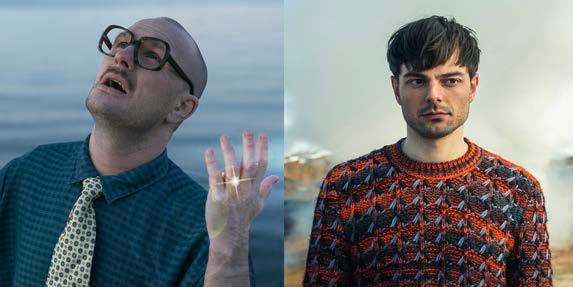

Saturday June 3
KENNITALA TOUR Fundraiser: sideproject + Flaaryr + Xiupill/Final Boss
Type Zero & more
20:00 Bíó Paradís
After Eight with Óli Dóri & Ása Kolla
20:00 Bravó
ROTTENNESS (US/MEX), Gorgatron
(US) & Guests
20:00 Gaukurinn
Stairway to Bach
12:00 Hallgrímskirkja
Greensky Bluegrass
19:00 Harpa - Eldborg
Allenheimer & Steinberger
23:00 Kaffibarinn
DJ Andre 20:00 Kex Hostel
Heart Attack! Drag Night
21:00 Kiki Queer Bar
Skúlagata Records: Lævi blandið
№4
20:00 Kornhlaðan
Pentatonix
20:00 Laugardalshöll
Þórir Georg Album Release Concert with Axel Flóvent

20:00 Mengi
Monday June 5 Greensky Bluegrass
19:00 Harpa - Eldborg
Ómar E
22:00 Kaffibarinn
Tuesday June 6
Karaoke Night
20:00 Gaukurinn
DJ Necropants
22:00 Kaffibarinn
Wednesday June 7
Heavenphetamine (JP)
KGB
20:00 Gaukurinn
22:00 Kaffibarinn
MTV Unplugged: Grunge
21:00 Lemmy
Good Morning Faggi
20:00 National Theatre of Iceland
Thursday June 8
JFDR Album Release Show
21:00 Fríkirkjan
Meistarar Dauðans
20:00 Gaukurinn
Hadelich Plays Brahms
19:30 Harpa - Eldborg
Quiz with Davíð Roach
20:00 Kex Hostel
Coney Iceland
21:00 National Theatre of Iceland
Friday June 9
Mamma Mia! Karaoke Party Screening
21:00 Bíó Paradís
Sarakis & Janus Rasmussen
22:00 Gaukurinn
Atli James
23:00 Kaffibarinn
Ásta Fanney
Event Picks
Þórir Georg Nokkur Goð Album
Release Show
June 3, 20:00
Mengi
2.500 ISK
“A few good ones” is what Þórir’s recently released compilation album means, and the problem we have here is that it’s just a few. Þórir Georg’s been grinding away making music for over twenty years, under many artist names (look ‘em up) including his own, and he has more than a few good ones that didn’t get as much attention as they deserved. But we’ll take a few, thank you. He will play a few of them, joined by his brother Axel Flóvent as the opening act, it should be a good one. RX
JFDR Museum Album Release Show
3.990 ISK
Jófríður Ákadóttir, known musically as JFDR, really went through it during lockdown. She released an album that she couldn’t tour and hit creative stasis while stuck in Australia. But from a period of rest came her gorgeous new album, Museum, a monument of fleeting, healing moments captured in time and space. She will bring these moments to life for us lucky locals in the acoustically perfect halls of Fríkirkjan church, where her magical vocals and entrancing songs will captivate you with awe. RX
20:00 Mengi
Sunday June 11
Umbra Ensemble & Vévaki
20:00 Gaukurinn
Óli Lamp Vader
22:00 Kaffibarinn
Monday June 12
Unto Others (US), Power Paladin & Ormar
20:00 Gaukurinn
Hrikalegur Kjöthleifur
22:00 Kaffibarinn
Tuesday June 13
Karaoke Night
20:00 Gaukurinn
Dean Lewis (AU)
20:00 Harpa - Silfurberg
Wednesday June 14
Árni Sveinsson’s Diskótek
22:00 Kaffibarinn
Svikaskáld
20:00 Mengi
Off The Wall Productions: Etty
20:30 Tjarnabíó
Thursday June 15
Kisimja
20:00 Gaukurinn
Iceland Symphony Orchestra with Barbara Hannigan
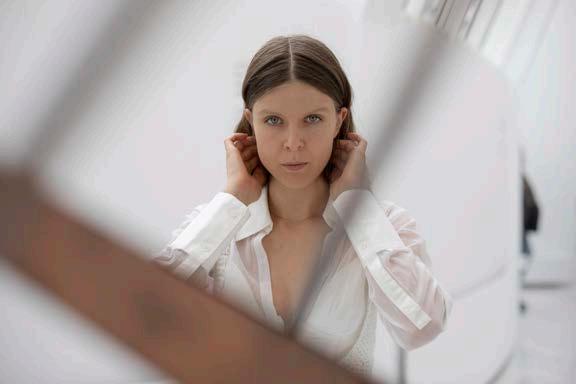
19:30 Harpa - Eldborg
DJ Silja Glømmi
20:00 Kex Hostel
Jack Armitage, Skessa & Hexorcismos
20:00 Mengi
Off The Wall Productions: Etty
20:30 Tjarnabíó
See more at events.grapevine.is
2.000 ISK
What do you really know about the Faroe Islands? If it’s anything but good electronic dance music, forget it immediately and get on the dance floor with SAKARIS and Janus Rasmussen. These two Faroese-born Reykjavíkers are known for their prowess in making people move to their distinct and infectious styles of electro. SAKARIS brings 80s glitz, glam and camp with his keytar bangers and silly banter, while Janus delivers dance music that breaks away from the typical club fare. Get the Faroe Island beats in your soul. RX
23 Listings Reykjavík Art Museum One museum Three locations Open daily listasafnreykjavikur.is artmuseum.is Hafnarhús Tryggvagata 17 101 Reykjavík Kjarvalsstaðir Flókagata 24 105 Reykjavík Ásmundarsafn Sigtún 105 Reykjavík Safnahúsið The House of Collections Viðnám: Samspil myndlistar og vísinda Resistance: Interplay of Art and Science Free admission for children & teens 3.2.2023— 26.3.2028
2.06–15.06
Music News
Harpa Opens Applications For
Harpa Concert Hall, in collaboration with Reykjavík Music City and RÚV, has announced a new series of concerts starting in fall 2023. The series, named Upprásin, begins in September 2023 and will take place every Tuesday until spring 2024. Each night will feature performances by two artists The initiative is part of an effort to increase the accessibility of Harpa
to grassroots artists and young musicians. Applications are open to anyone who defines themselves as part of the grassroots music scene. Participants will receive logistical support from Harpa, and promotional help from Reykjavík Music City and RÚV. Applications are open on Har pa’s website until June 16.
Not Like All The Other Labels
Við Djúpið Music Festival Announces Its Return
Ísafjörður-based music festival Við Djúpið has announced its return after a nine-year hiatus. A small-scale version of the event was held last year. Við Djúpið focuses on bringing world-class contemporary classical artists and chamber music opportunities to the West Fjords. Musicians will give recitals and teach at the
associated festival summer course program. Music students are encouraged to register for the summer courses incorporating masterclasses by flautist Catherine Gregory and pianist David Kaplan. Við Djúpið runs from June 17 to June 21 and kicks off with an open-air performance by Árný Margrét and Andri Þrastar.
Hátíðni Music Festival Reveals Lineup
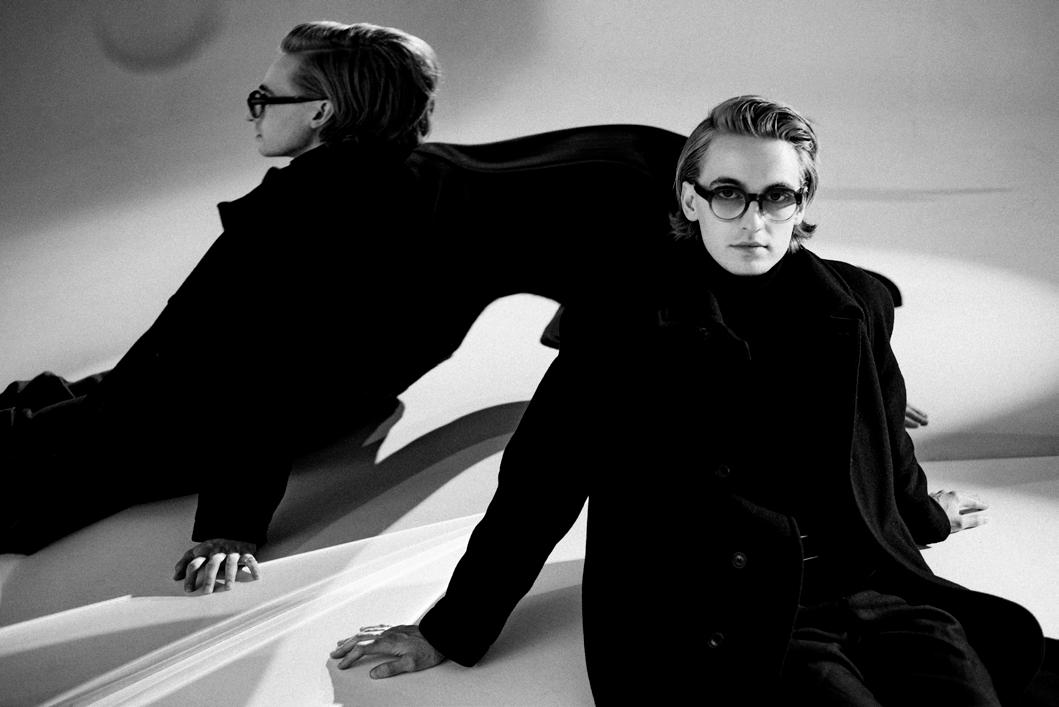
The annual Hátíðni music festival, produced by the art collective post-dreifing, has revealed the first wave of its lineup. Hátíðni takes place for the fifth time this year and features a diverse roster of artists, showcasing local and international grassroots scenes. The festival takes place in the town of Borðeyri in

North Iceland and spans three days, from June 30 to July 2. The festival‘s first lineup announcement includes artists Sucks to be you Nigel, PELLEGRINA, Berglind Ágústsdóttir AKA siggi0lafsson, Iðunn Einars, Masaya Ozaki, Einakróna, Kate, NITEFISH, and Nothing To Wear, with more artists to be announced.

American record label FOUND enters the music scene
WORDS Jóhannes Bjarkason
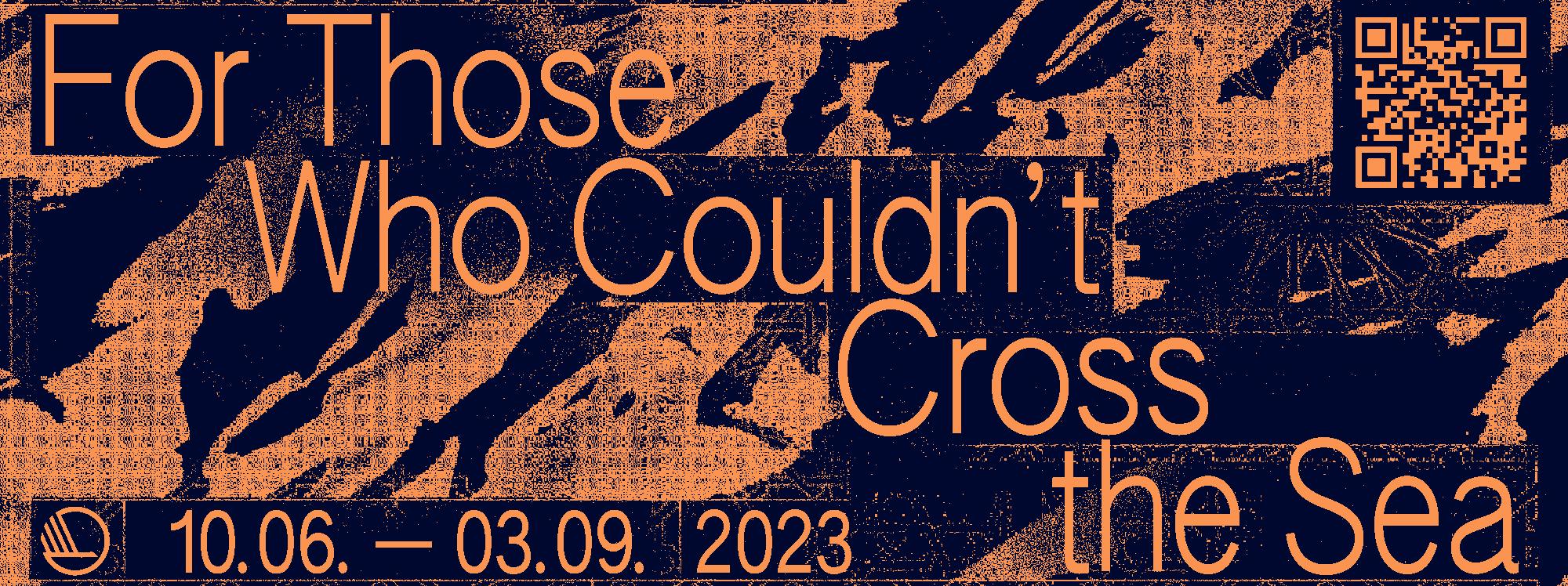
IMAGES Supplied by FOUND
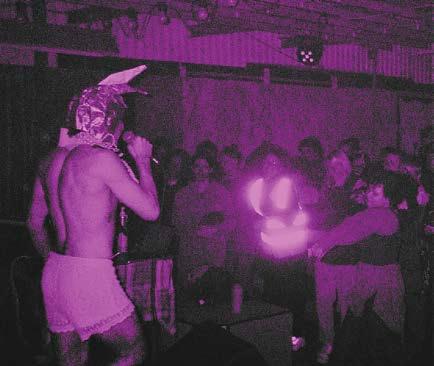
Not to say that the Icelandic music industry is completely devoid of formal organisation or business practices. You can find corporate labels mixed in between those run independently – from Alda Music to Why Not? Records – which all have their own artists to support.
YOU’RE GONNA NEED A BIGGER SUITCASE
The Icelandic music industry is not known for its size or the generous revenue streams it generates. It’s mostly haphazard – musicians ebb and flow between different bands, genres and styles, never settling down to a cushy record deal. The spontaneity and curiosity of Icelandic artists are perhaps due in part to the music industry’s lack of formal frameworks. Record labels are few and far between, and most form out of a grassroots necessity for artists to be able to release their own work.
From America to Iceland, the record label FOUND is entrepreneur Scott Blum’s newest venture. Based in California, Scott has a tech and music business background. Some of his notable achievements include co-founding the company behind iMusic; producing Peter Gabriel’s multimedia album EVE; and working on numerous music projects on his long list of ventures. Moving on from the music industry, Scott established the yoga and meditation company DailyOm, which he helmed for 18 years until selling it in 2021.
In need of some rest and relaxation, Scott decided to search out the opposite of sunny Santa Barbara – Iceland. On his trip in 2022, he was struck with his next big idea: a record company exclusively signing Icelandic artists.
“I just sort of fell in love with the music,” Scott says over the computer from California. His first introduction to the Icelandic music scene during his visit was his encounter with Örlygur Steinar Arnalds from the electronic group Sideproject, at Reykjavík’s flagship Smekkleysa record store. On his way back home, Scott had to buy extra luggage to fit all his newly acquired vinyl records. He flew back to Santa Barbara, enchanted by the music he discovered. A month later Scott established FOUND.
Exclusively focusing on Icelandic artists, FOUND currently has three names on its roster: Gróa, Magnús Jóhann and Silva & Steini. Varying in genre and style, the diversity of the label’s roster is deliberate. “I think it’s representative of the real Icelandic music scene, where you see all of these different types of artists all performing on the same night, sometimes on the same stage.” Scott says that his perception is that Icelandic musicians are on a constant quest for ingenuity and novelty – nobody tries to emulate what once broke through.
“One of the first things you do when you come to Iceland as a foreigner
The Reykjavík Grapevine 7 / 23 24 Music
Feature
is you go into a record store, and say, ‘I really like Sigur Rós. What’s another artist like them?’ And they always say the same thing, which is, ‘Well, there isn’t another artist like Sigur Rós – because Sigur Rós is Sigur Rós.’”


Icelandic superstars like Björk and Ólafur Arnalds to their highly unique and individualised voices. “Their voices were distinct from a particular genre, and they truly did craft something that changed the world. I believe the artists we’re working with have that same potential, and that’s
ment and I think that’s infectious across the entire Icelandic music scene.”
In terms of the practical aspect, Scott aims to be in this project in the long run, developing the artists and building relationships. He looks to the record labels of yore where artist development was an investment and not a liability – slowing things down in a sense. “The main thing you have to do is be patient, be pure to the artist’s vision and make sure that they reach the audience that truly resonates with them.
A BARREN CORPORATE LANDSCAPE

Due to the lack of formal record labels, Icelandic musicians not working within the mainstream pop framework often need to look abroad for marketing and managerial support. The domestic market doesn’t seem to sustain them. This tendency often leads to a loss of capital derived from the artist as well as knowledge of industry best practices in Iceland. In essence, the specialisation within the domestic music industry becomes degraded. Although FOUND aims to elevate Icelandic musicians to the global level, its operations are sure to affect the current domestic landscape.
“I think that the successful record labels in Iceland, in general, are focusing on the Icelandic market, which forces them to focus on the pop side of things in order to make it work for them,” says Scott. “And I think, since our market is worldwide, we can help find the more unique voices in the Icelandic music scene, which are going to have a bigger ultimate impact,” he continues. Scott attributes the success of
what I’m really looking for,” Scott says, not positive but convinced. “I think this label has the ability to foster and nurture those artists at the smaller level … and hopefully have artists break out more regularly, as opposed to once every decade,” he continues.
SLOWING DOWN
Because Icelandic music has displayed its notable effervescence and diversity for multiple decades – at least since the start of the punk and new-wave era, it’s a wonder no entity has already tried to capitalise on this treasure trove. For Scott, it’s about time, place and the overall atmosphere within the scene. He notes increased cross-semination and collaboration between artists.
“If I was going to credit one thing for what has stirred everything up – in my mind it’s post-dreifing. The scale of what post-dreifing has accom-
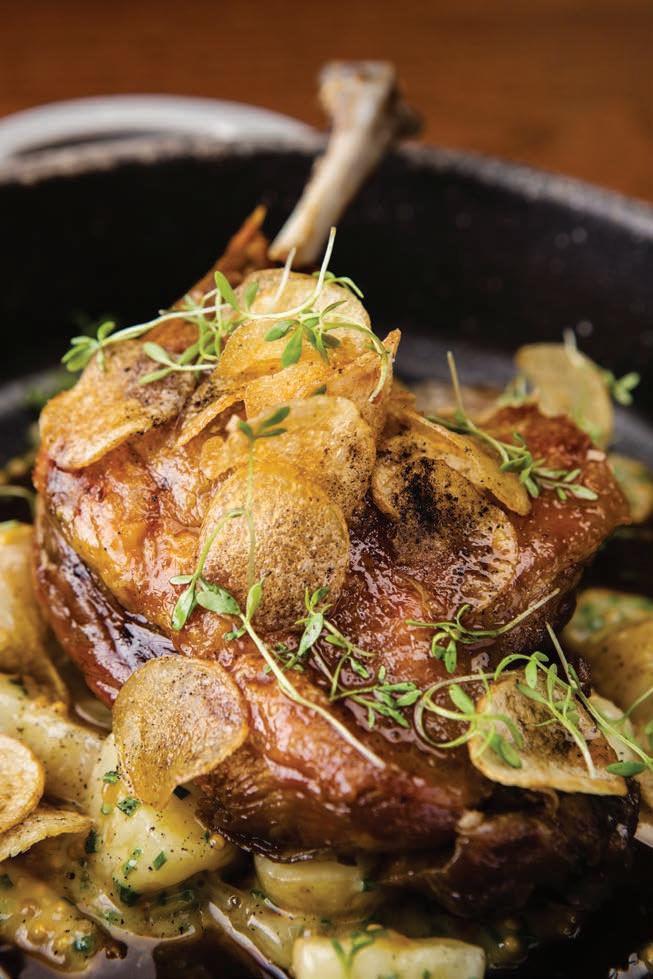
In Scott’s view, the advent of FOUND will not lead to further loss of Icelandic talent out of the country as the label aims to utilise the available domestic resources. “We’re just a little bit different than everybody else,” Scott responds to these concerns.
“We’re not based in Iceland and we’re not completely outward facing. We are a blend, based in America but focused on working with local industry professionals – shooting music videos with Anna Maggý for example or recording albums in Icelandic studios. What we’re really looking for is to share as much of the Icelandic culture with the rest of the world,” he says.
While Icelandic artists will still probably coagulate into loose collectives to release their recordings, FOUND introduces an exciting new dimension into the otherwise stagnant Icelandic music industry.
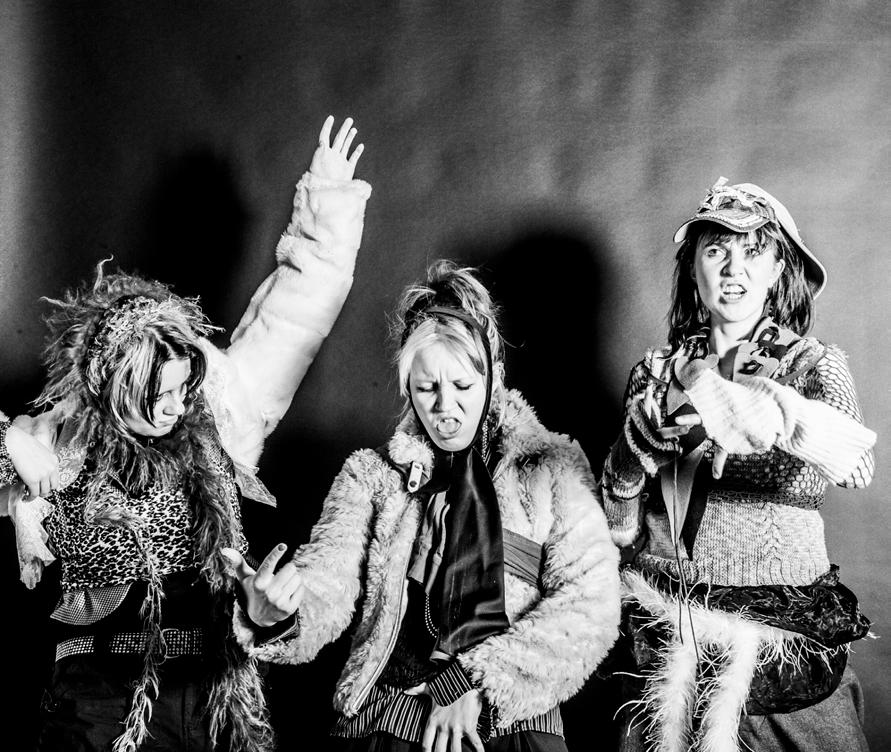

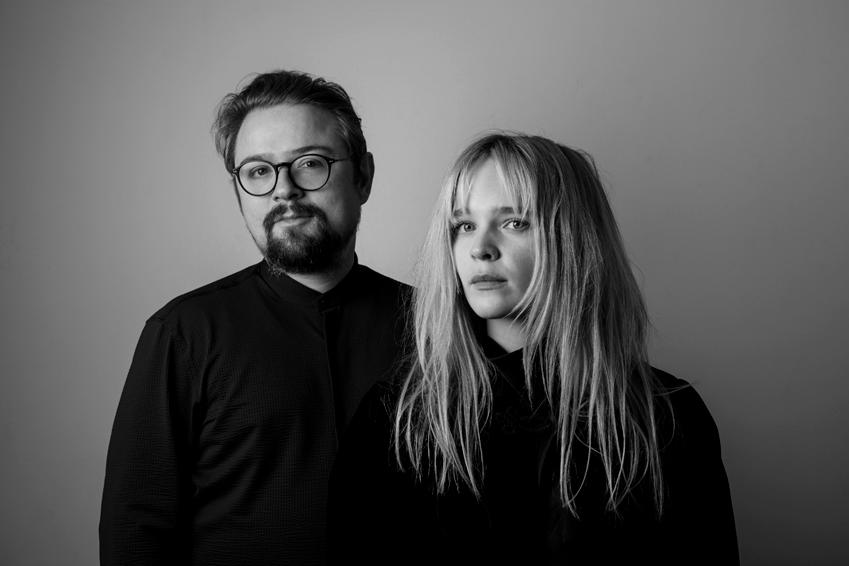
What we’re really looking for is to share as much of the Icelandic culture with the rest of the world.
There isn’t another artist like Sigur Rós – because Sigur Rós is Sigur Rós.
What happened last night?
If This Barn’s A-Rockin’, Do Come A-Knockin’
The Eyvindartunga country venue keeps creativity alive
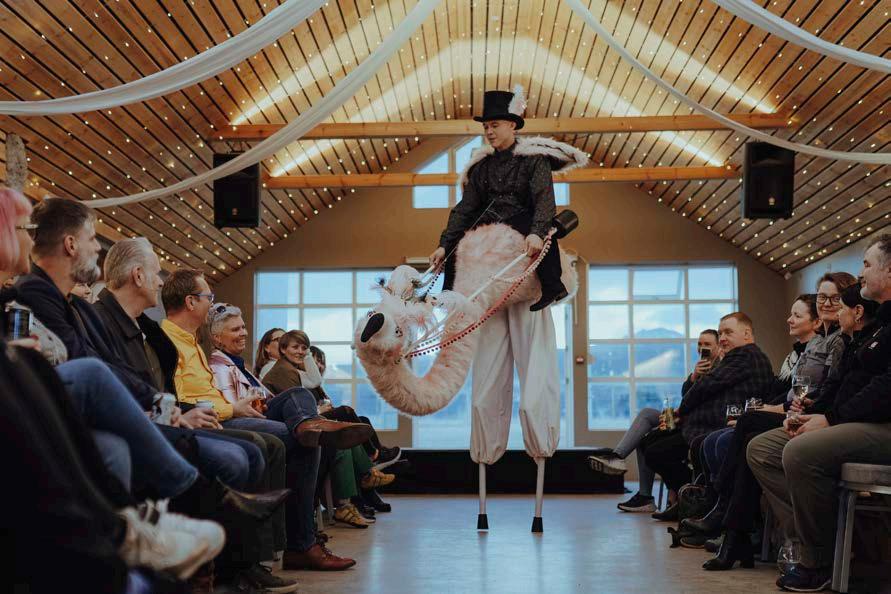
WORDS Rex Beckett IMAGE Supplied
Ása
Dýradóttir, DJ Death
A liar and a thief walk into a bar…
WORDS Ása Dýradóttir
IMAGE
Art Bicnick
May 12, 12 Tónar
I’m not a DJ. I lost my imposter syndrome some years back and now I just say yes to everything and nothing makes me feel any particular way. I also just found out I stole
the name DJ Death. It was too good to be true. I think I’ll change it to DJ Beth.
So this liar and a thief walks into a bar, ready to make people feel sad on a Friday night. I set up my gear on red velvet and slide into my set, which has four stages:

1: Inconsistent stuff with no lyrics or beats
2: Cool stuff with almost no bpm
3: Cool stuff with some more bpm
4: A 14 min choir piece, Allegri: Miserere mei, Deus, with tons of reverb and filter on the soprano.
I finish my set, comfort a friend from Kælan Mikla who is crying because of that soprano thing, and step into the gray Reykjavík spring, feeling good and at ease with life, death and everything in between.
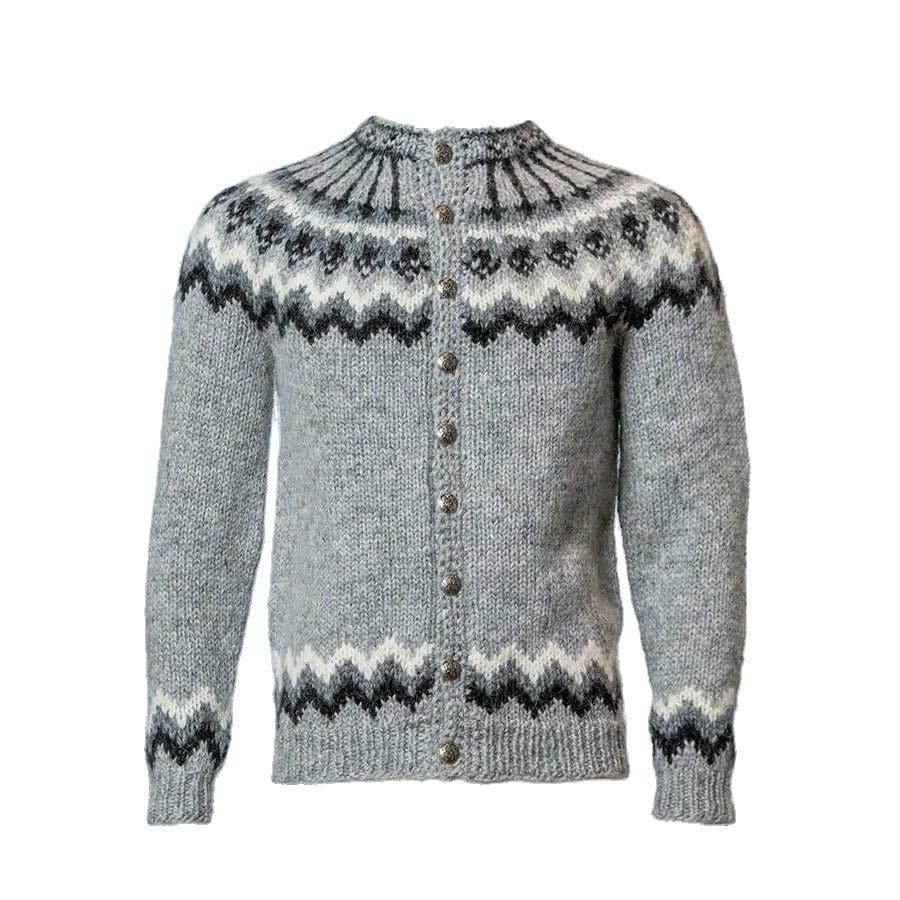
The House at Eyrarbakki
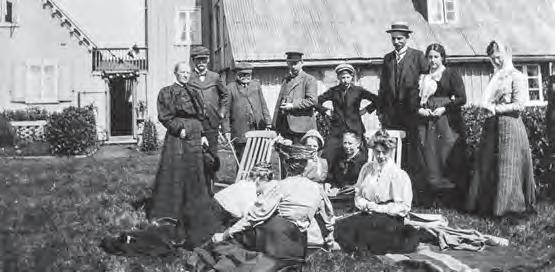
When Stephanie Langridge left her life as an arts publicist behind in Australia and came to Iceland, she had no idea she’d eventually end up managing a countryside venue in a renovated barn. None of us really know where life is going to take us, after all, but hers has led to Eyvindartunga, near Laugarvatn, where she is now throwing a summer concert series for the first time.
“It’s kind of funny because I grew up in the countryside, relative to Sydney, sort of like Laugarvatn,” says Stephanie. “Then I moved I guess to [Sydney’s] equivalent of Vesturbær when I went to uni. That’s why it’s not so strange for me to be in Laugarvatn. It’s kind of like going back to where I was as a kid.”
staunchly with traditional media only, and ran an independent venue out of a warehouse on the outskirts of town. She ended up in Laugarvatn after meeting her now-husband, Magnús, at a gas station near Skaftafell, where they were both glacier guiding, a direction in life she took when her previous career proved to be unsustainable.
“A friend of mine passed away and it was just a very intolerant industry for that,” she says, describing a relatable pressure of corporate careers. “They were like, ‘Cool. If you’re not willing to work 15 hours a day and you don’t have a thousand spoons every day to waste on us in exchange for some alcohol at the bar, there’s 100 people behind you.’” Stephanie flipped her bosses the proverbial bird and flew to Iceland in 2017.
“We thought of renovating the barn because we were getting married and then it turned out to be Magnús’ dad’s lifelong dream to renovate it,” she says of how they began to transform Eyvindartunga. “We were just the impetus he needed.”
Stephanie and her husband continued to work most of the week as guides and continued renovations in their free time, but they eventually started looking at ways to make the barn a sustainable and profitable venture. This is when Stephanie’s dormant venue manager persona
space was the natural next step. She has spent the last three years running weddings out of the venue, but her real passion is promoting the arts.
“I also wanted to bring an opportunity for people in my community, because there are so many creative people in Laugarvatn,” she says. “There are so many visual artists. We have a gallery there. We also just have people who just enjoy music and visual art. And so I wanted to create a space that really captured a little bit of the feeling I had running my old venue back in Sydney.”
Eyvindartunga is now having its first run as a concert venue this summer with a series of monthly shows that Stephanie is carefully curating with her community’s interests and demographic in mind.
On the docket so far are Korinn Kliður — a celebrated community choir of some of Reykjavík’s finest musical talent — and singer-songwriters Magnús Kjartan and Grétar Lárus. Stephanie hints at more names that are yet to be confirmed, but are very intriguing, while emphasising that it’s not all going to be “safe”.
With the transformation of Eyvindartunga, and the trajectory of her career returning to venue and event management, Stephanie sees it as forward momentum which is only going to get bigger and better.
The Reykjavík Grapevine 7 / 23 26 Music
Opening hours: May 1st-Sept. 30th daily 10-17 or by an agreement Tel: +354 483 1504 info@byggdasafn.is byggdasafn.is
shop.grapevine.is shop.grapevine.is shop.grapevine.is shop.grapevine.is* shop.grapevine.is shop.grapevine.is Don't Hesitate! Act Now! You only need to type the URL in once Get Grapevine Merch!
Árnessýsla Heritage Museum is located in Húsið, the House, historical home of merchants built in 1765. Húsið is one of the oldest houses in Iceland and a beautiful monument of Eyrarbakki´s time as the biggest trading place on the south coast. Today one can enjoy exhibitions about the story and culture of the region. Húsið prides itself with warm and homelike atmosphere
Released on May 12 via Smekkleysa, Fragments is Virgin Orchestra’s debut album. Exhibiting a range of influences from post-punk to trip-hop, the album is “sonically packed,” in one band member’s own words. Virgin Orchestra walked us through their newest release track by track.

the longer it goes.
OFF GUARD
Most songs on the album were written while we were in separate countries since Stefanía spent the first half of 2022 in Berlin as an exchange student. This song was written in many different places. Stefanía sent the original demo from Berlin and Starri worked on it in Barcelona and Glasgow and Rún worked on it in Reykjavík.
ON YOUR KNEES
One of the first songs we ever wrote together back in the very early days of the band. We had talked about writing an album that was influenced by wartime and horror as a critique on the world today but this is kind of the only track that kept that initial idea as the rest of the tracks became more abstract.
GIVE IN
the song reminded us of a Bond theme. When we were recording the album, this was the song we spent the most time on by far as we just kept on recording more and more layers using various instruments and gadgets available to us at the studio. A sonically packed song.
SKIN
The most minimalistic song on the album. This song was mostly written in our hotel room in Berlin a couple of weeks before we went into the studio. Writing it in that setting and under those circumstances had a big impact on the raw, stripped back nature the song took on. Stefanía only finished writing the lyrics five minutes before recording the vocals at the studio. Not because we were slacking, but because it just felt somehow right to finish the lyrics at the last moment to channel some kind of rawness and “in the moment feeling.”
REWIND
False Majesty’s Deathcore From The Islands
Iceland is trembling and the epicenter is the Westman Islands. However, it’s not an earthquake causing the rumble; it’s the sound of amps blasting deathcore. For this edition of the Filthy Interview series, I had a virtual sit down with False Majesty drummer Skæringur Óli Þórarinsson and guitarist Trausti Mar Sigurðarson.



AGE IS OVERRATED
technical and complex music because it requires skill and effort. This focus on technique was an unspoken agreement among the band members. Some of their biggest influences include bands like Slaughter to Prevail, Archspire and Lorna Shore.
SHORT LIFE, GREAT ACCOMPLISHMENTS
INTRO
This song was born out of an improvised jam session. We created a drum loop and just started playing the first thing that came to mind on top of it. It soon turned into a song that’s constantly expanding and gets louder and more aggressive
This song went through many transformations before we settled on a structure we liked. Similar to “on your knees,” this was written before Rún was in the band, but her strings really elevated them. It gave us the missing piece of the puzzle that the songs needed. The vocals and lyrics are very early one-take and improvised but we liked how free it felt so we decided to keep it.
BOND
The title of this song comes from the fact that something about the chord progression and build-up of

This song came together remarkably fast. Stefanía wrote the synth, drum loop and sampled bits from an old Gloria Ann Taylor song and immediately we just got so many ideas for what we could do. We just started writing with full force. The quiet ambient ending was partially born at the studio and we loved how it just kept on and on. No decisions had been made about how to end it. We had access to an old tape delay at the studio, so we recorded a bunch of cello and the synths through that which created this warbly and dreamy soundscape.
The majority of False Majesty’s members have been playing together in the local music scene for more than 15 years. They’re adults, most with children of their own, who wanted a hobby outside their daily lives. They began talking about forming the band in 2017 and, in 2020, they had their first official practice. False Majesty’s lineup was complete when Trausti joined as the vocalist last summer, solidifying their sound and drastically lowering the average age of the band. Trausti also plays in another Westman Islands metal band, Merkúr. “The age difference is quite big in False Majesty, but the band experience itself is not too far off from being in Merkúr,” Trausti says, explaining that while Merkúr aims to be as “headbangable as possible,” False Majesty’s focus is on melody and technical skill.
FROM FIRE, REBORN
“The local music scene in the Westman Islands is small but growing,” says Skæringur. “It has its own local legends and had around 40 active bands around 15 years ago.” Unfortunately, a major setback occurred when the main rehearsal space in a fish factory burned down. But a revival is underway.
Skæringur explains that the band has always been drawn towards
False Majesty took part in this year’s Wacken Metal Battle, where they faced off against this year’s winners Krownest. Skæringur and Trausti were humbled to learn in a previous interview that Krownest was intimidated by them. “We are so amazed to hear that, especially considering False Majesty’s relatively short presence in the scene.” In fact, their Wacken set was only their second time performing with Trausti on vocals.
WELCOMED WITH OPEN ARMS

Being from a small island and having to take a boat to reach the mainland adds an extra level of excitement and hype to their performances. “We have never been excluded because we are not from the capital area,“ Skæringur says. They are, however, exploring the possibility of hosting gigs on the Westman Islands and inviting the whole Reykjavík scene to come cliff-swinging their black hearts out. “We have the perfect venues on the islands. We would love to set up a stage inside of one of the volcanic craters,” says Skæringur, dead serious.
False Majesty has an upcoming gig at Gaukurinn alongside Epidermal Veil, Slor and Sóðaskapur on June 10. They also have their sights set on the Reykjavík Death Fest in September.
Have you already saved the date for June 10? Then, see you at Gaukurinn. If not, see you in hell. You can stay up to date with False Majesty’s on their Instagram page, @falsemajestyband
27 Music
Main land
Shaking
The
Is
Fragments Virgin Orchestra’s Sonically Packed Debut EXPLORE UNSEEN ICELAND ON THE ULTIMATE FLYING RIDE OPEN EVERY DAY | flyovericeland.com MUSEUM OF DESIGN AND APPLIED ART GARÐATORG 1 210 GARÐABÆR OPEN TUE–SUN 12–17 WWW.HONNUNARSAFN.IS InstagramFacebook honnunarsafn PERMANENT EXHIBITION HÖNNUNARSAFNIÐ SEM HEIMILI AT HOME IN THE DESIGN MUSEUM THE PLATFORM HABITATIONS 4TH GRADERS TAKE ON INTERIOR DESIGN 18.04.–03.09. EXHIBITION PRESENCE NEW SWEATERS BY ÝRÚRARÍ 28.04.–27.08.
Track By Track
WORDS Francesca Stoppani IMAGE Jenny Retschkowski
WORDS Virgin Orchestra
IMAGE Supplied by Virgin Orchestra
Treading Lightly Around Iceland

How to travel without a massive impact
WORDS Catharine Fulton
IMAGE Art Bicnick
Happy hour / 4–7pm Beer / Wine / Cocktails
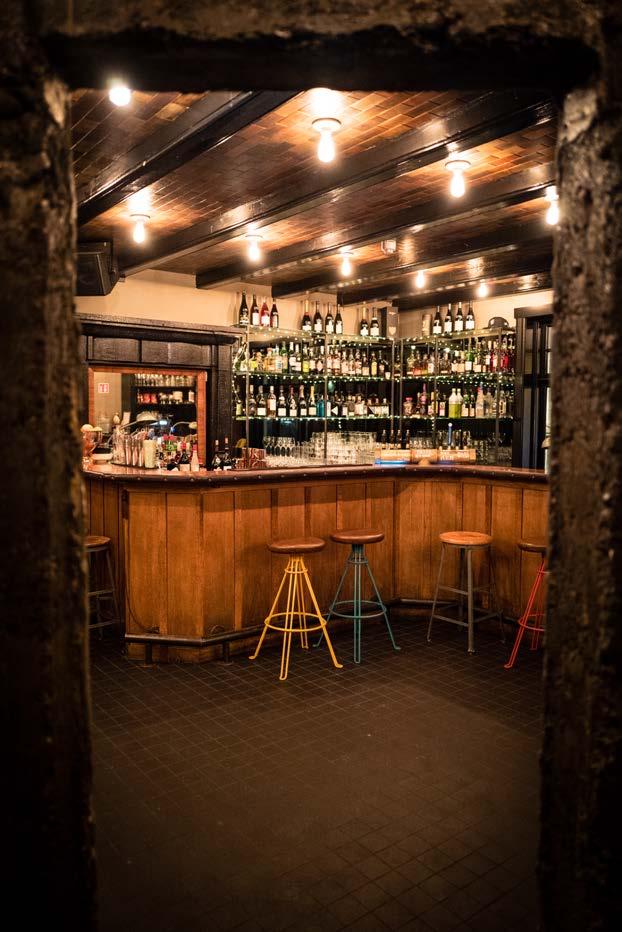
Is any travel technically eco-friendly? Nearly every aspect of our daily lives has an impact on the surrounding environment. That impact is multiplied when engaging in carbon-intensive transport through travel hubs that seem to be fuelled by single-use plastics and mass consumerism. In fact, it’s estimated that 8% of total global carbon emissions are the result of the travel and tourism industry.
But you’re coming to Iceland because you love and respect nature, right? Of course. Don’t consider the country’s geothermal reputation as a get-out-of-jail free card for making an eco-friendly effort. Here are some tips for seeing the country sustainably.
DON’T BUY BOTTLED WATER
It’s absolutely disgusting to see grocery and convenience stores shilling “pure Icelandic glacial water” in plastic bottles. You know who buys that? Tourists who don’t realise it’s the same calibre of liquid that springs forth from every tap in the country. The hot water may stink like eggy farts, but the cold water is as clean, crisp and pure as it gets. Bring a refillable water bottle to fill
up as you travel. Access to drinking water is considered a right, so restaurants and cafes are kind of obliged to give you a free glass of H2O (or refill your bottle) if you ask.
BUY LOCAL SOUVENIRS
Want to bring home a memory of your trip aside from all those photos you snapped? Buy local when you shop for souvenirs. The vast majority of the junk – erm, sorry, keep-sakes – in the so-called “puffin shops” (you know, the places emblazoned with imagery of puffins, Vikings, polar bears and trolls) are mass produced in factories far, far away from Iceland, upping their carbon footprint. That includes many of the wool sweaters, gloves, hats and blankets many of those shops stock.
Pay attention to where things are actually made. Check the tags. “Designed in Iceland” is usually code for “not made in Iceland.”
Skip the mass-produced trinkets and opt for things like woollen goods from the Handknitting Association, sea salt from the Westfjords, or a piece from a local artist to hang on your wall back home.
over nature at times of year when the ground should be repairing itself after the winter thaw.
Instead, go with small, local tour operators that have knowledge specific to their town or region and are taking travellers to areas less visited by the big bus companies.
Wherever you go, though, stick to the marked paths, tread lightly and leave nothing behind.
EAT LOCAL AND SUSTAINABLE
A lot of the food for sale in Iceland has made a long journey over the Atlantic ocean to reach the grocery store shelves and your plate. But not all of it. Fruits and vegetables grown in Iceland are typically marked in grocery stores with a distinct “Íslensk” sticker with the colours of the Icelandic flag.
You can ask about the origin of the food being served in the restaurants you visit, as well. Some menu items you should know to avoid, even if they are locally sourced. The Atlantic puffin population is in steep decline in Iceland, so ordering puffin for din-
RESEARCH BEFORE BOOKING A TOUR
Is the day trip you’re booking going to transport you on a massive coach to the same, heavily-visited waterfall/beach/hotspring that everybody else stops at while in Iceland. We get that you want to get a snap for the ’Gram from behind Seljalandsfoss, but think about the environmental impact of so many people visiting so few spots. It takes a toll on the vegetation, with the constant foot traffic giving the local environment zero time to rebound. That’s especially the case now that Iceland is a year-round destination, inviting countless pairs of boots to trod all
ner is not a sustainable choice. The same goes for ordering whale. Not only is it not a traditionally Icelandic protein, the positive environmental impact whales have on the world’s oceans is such that it’s ecologically irresponsible to be hunting them for a novelty bite.
You should similarly ask about the origin of the salmon you’re ordering. A growing number of Icelandic restaurants are sourcing their fish only from land-based fish farms, on account of the documented risk to wild fish stocks open-pen sea cage aquaculture poses.
We only have one planet. Be mindful of how you go about exploring it.
The Reykjavík Grapevine 7 / 23 28 Travel Guide
Pay attention to where things are actually made. Check the tags. “Designed in Iceland” is usually code for “not made in Iceland.”
Hverfisgata12
RÖNTGEN



60th Anniversary Exhibition from the museum collection. Austurmörk 21 | 810 Hveragerði | Sími 483 1727 | www.listasafnarnesinga.is
Hot Pool Hopping In The Westfjords
How many pools is too many?
WORDS Iryna Zubenko
IMAGES Art Bicnick
Car provided by gocarrental.is

the next one being better, bigger and sometimes hotter. On our recent journey to the scenic southern Westfjords we tried to visit as many pools as possible in a single day. Get ready to steam, soak and surrender to pure relaxation!
In Iceland, swimming pools are not merely places to take a dip; they are a way of life. With more geothermal swimming pools and hot springs per capita than anywhere else, Iceland has elevated ‘pool time’ to an art form. They appear in places where you would never expect – with

All of the thermal pools we visited on this trip were free, with donation boxes available on-site.
KROSSLAUG
Our first stop was Krosslaug, a site with a man-made geothermal pool with a more natural look and a spacious concrete swimming pool, just a 30-minute drive from Patreksfjörður (Route 62). Don’t get confused by the name – there are at least two hot pools named Krosslaug in Iceland, the other one better known as Krosslaug Reykir in West Iceland.
The sign at the location instructed us that the bigger pool was open in
1948 and was used for swimming courses in the past. I changed into a swimsuit in the car, the changing rooms by the pool going completely unnoticed in my excitement to jump in and enjoy the views. I was greeted by a couple of tourists, who brought a thermometer with them. They told me it’s 36 degrees Celcius inside the pool, and without hesitation I went in, the wind fighting to steal my towel. I tried out the smaller pool as well, but the water was much colder and when a bigger group of tourists arrived, chattering about “Oh, you guys look so hot in the hot pool,” in a thick American accent, I got out. It seemed way more like one of those ‘Insta’-worthy spots.
HELLULAUG
Off we went to Hellulaug in Vatnsfjörður. The hot spring is hidden from the highway and it wasn’t long ago that barely anyone knew about it. The times have changed and now

The Reykjavík Grapevine 7 / 23 30 Travel
Feature
Travel
With a steamy 45 degrees Celsius, this was the closest I had to a bubble bath in months.
Hellulaug often features on influencers’ social media feeds, drawing more and more tourists. When we arrived, there were maybe three people submerged in the spring, which considering its size, could be considered a crowd. Initially hesitant, I eventually decided to step in, and once immersed in the soothing water, I didn’t want to leave — the view over the Breiðafjörður bay took my breath away and the water felt like a warm hug.
Keep in mind that there are no amenities next to Hellulaug, so be ready to change in the car (again). Alternatively, you can walk a few minutes to Flókalundur restaurant and use a bathroom there. The restaurant serves good lunch deals, burgers and a soup of the day. Don’t pretend like we didn’t tell you!
REYKJAFJARÐARLAUG
As we drove about half an hour to the next destination, we made a few unplanned stops, admiring nature. We came across a heartwarming sight of a sheep nursing its baby and hundreds, if not thousands of birds, including one graceful oystercatcher, crossing the road. The first thing that caught my attention upon our arrival
was how clean the amenities were.
The pool as well as two changing rooms and a toilet are maintained with the help of visitors‘ donations.
Reykjafjarðarlaug offers an option to choose between a geothermal pool and a hot spring. Compared to other pools on our list, Reykjafjarðarlaug is more spacious, allowing hot tub users to relax in a more comfortable way rather than squeezing togeth-
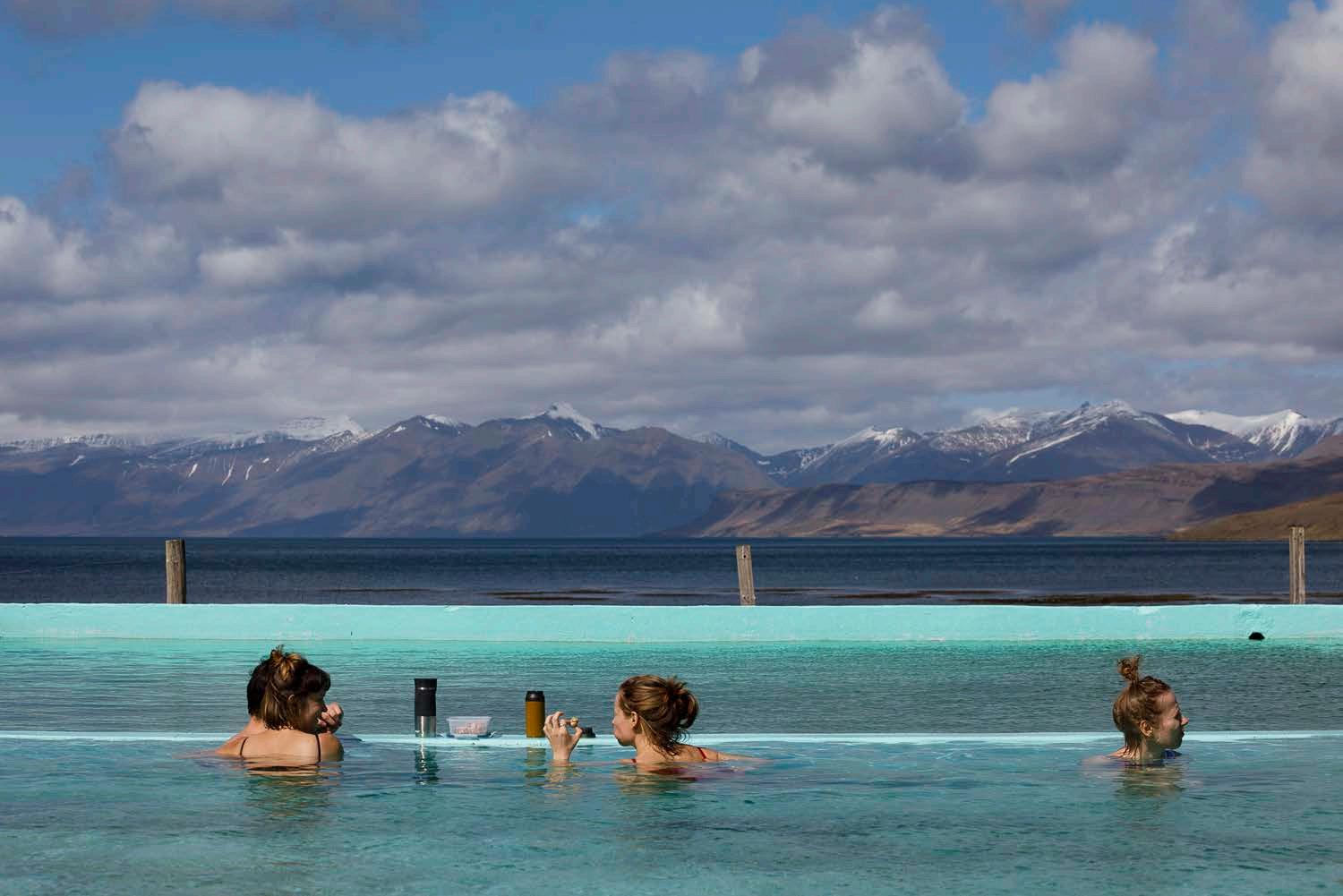
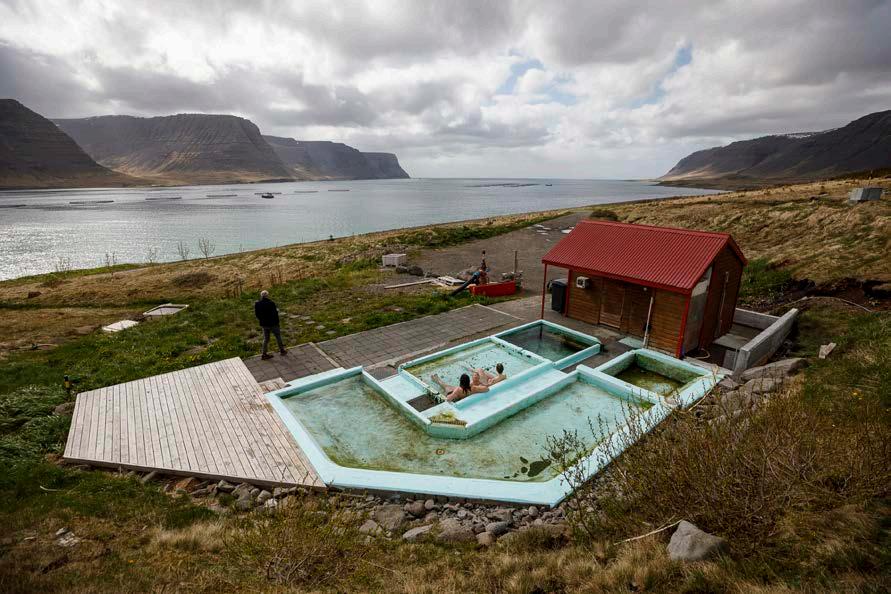
while observing the snow-covered mountains on the horizon.
You can see the natural hot spring steaming from afar. Just a few steps up a muddy path from the main pool and you’re there. I have to admit, I had some reservations about the muddy water, but once I immersed myself in it, I immediately wished I had brought a book — with a steamy
gravel road up before arriving at Pollurinn, a four-section pool with temperatures ranging from 36 to 40 degrees Celsius. The pools are shallow and best enjoyed when stretched out watching the view over the fjord. In winter, secluded Pollurinn would definitely be a perfect northern lights hunting spot.
We’ve heard a few times during the trip that Tálknafjörður and surroundings are hot spots for birdwatchers and even stumbled upon two nests right next to the hot pots. One advice we learned from a professional bird watcher — be extra careful near the nests and try not to stress the birds as they might abandon their eggs and fly away.
HIDDEN DELIGHT
managed by Dagný, a native of the fjord who we had initially mistaken for an American. It’s no surprise, as Dagný had spent over 20 years living and working in the USA before returning to her homeland.
er like sardines in a can. In fact, the pool is divided into two parts: a colder section and a hotter section. Visitors can take turns, alternating between a hot steam and a refreshing dip. Some of the fellow pool dwellers had even brought a lunchbox with cookies. Although eating in the pool would normally be frowned upon, there was nothing in the world I craved more than those cookies
45 degrees Celsius, this was the closest I had to a bubble bath in months.
POLLURINN
After Reykjafjarðarlaug, we continued our way on Route 63, passing Bíldudalur and heading towards Tálknafjörður on Route 617. We drove past the village and took a steep
What better way to conclude a day of busy thermal pool hopping than with a delightful dinner accompanied by a breathtaking view? We chose Cafe Dunhagi in Tálknafjörður and, much to our delight, the place turned out to be a hidden gem in its own right.
Nestled in the oldest building of its kind in the Westfjords, Dunhagi was only a 4 km drive from our last stop at Pollurinn. The cafe operates from late May to mid-September and is
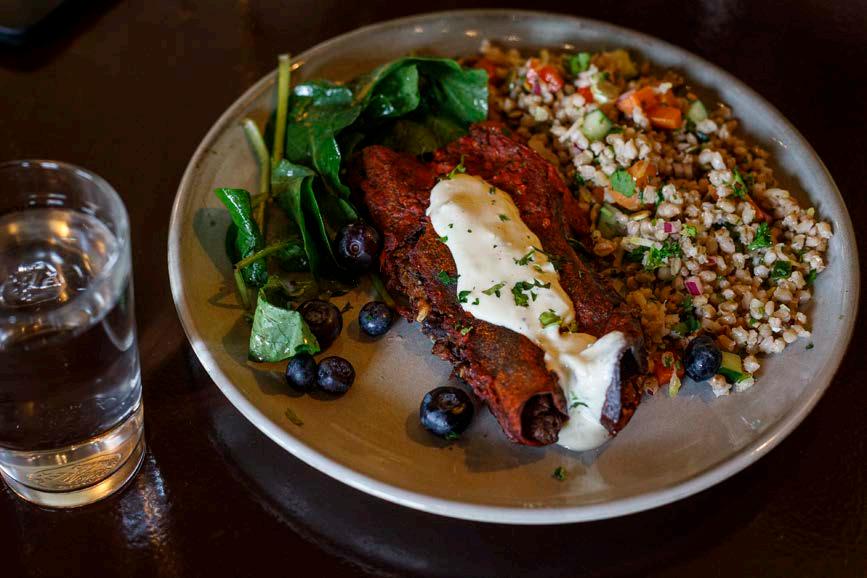
Through photos on the walls, Cafe Dunhagi tells the local history. The place often hosts various cultural events and has ambitious future plans with residencies and workshops for artists in mind. When it comes to food, the cafe specialises in mindful cuisine, serving local fish and lamb, paired with wild salad harvested nearby, and incorporates seasonal produce, like rhubarb in June, or portobello mushrooms in August. Vegan and vegetarian options are also available and Dagný takes great care to accommodate guests with allergies or intolerances — an exceptional level of attentiveness. Notably, Dagný emphasised that fish sourced from the infamous nearby fish farms would never be served at Dunhagi. With a wine selection unusual for such a remote place, house cocktails and a playlist featuring Nina Simone and Bob Dylan, we vowed to return — both to the pools and Cafe Dunhagi.
And so we did, the very next day.
I changed into a swimsuit in the car, the changing rooms by the pool going completely unnoticed in my excitement to jump in and enjoy the views.
The Adventure Under The Bridge
around Grófin. The historic, nautical heart of downtown Reykjavík is home to thoughtfully restored timber and stone buildings, some dating as far back as 1863. Standing at the corner of Tryggvagata and Vesturgata is the historic Zimsen house, a building with a history riddled with as many adventures as those promised on the menu at Fiskfelagið.
Originally located at the corner of Hafnarstræti, the Zimsenhús was moved in its entirety in 2006 from its original location, on a specially rigged out moving truck. It was a newsworthy event, with spectacular images and the enthusiastic observation that the move was so carefully orchestrated that a flower vase in the window sill made it safely to its destination. While speculation was rife about the renewed use of the building and its possible new location, by 2008 it was clear that a restaurant run by one-time Lækjarbrekka owner Guðmundur Hanneson and chef Lárus Gunnar Jónasson would open in the stone basement.

ROOTED IN ICELAND
Walking into the cavernous restaurant instantly transports diners elsewhere. This is one of well known interior designer Leifur Welding’s more successful projects that combines a sense of place with a touch of worldly flourish with aplomb. Pops of mustard add a depth of warmth matched by the hospitable staff that are quick with a chat or happy to leave you alone, depending on your preference. Artwork by local artists, including a bold number by illustrator Solveig Pálsdóttir, is as prominent as the wall of Norwegian porcelain plates from Figgjo, altogether creating a moody, grotto-like ambience that feels fitting to plot a delicious escapade.
Carefully restored by architect Hjörleifur Stefánsson, the landscape is meant to evoke what would have been piers around this location in 1863. In place of the shallow harbor, is a stone paved dug down square with a pond on one side, replete with a timber bridge — an awfully delightful way to cut across to Hafnarstræti. Tucked away from the bustle of the main street, Fiskfelagið beckons with its dark, stone walls and outdoor patio seating. On a sunny summer noon, you’ll be hard pressed to find a free table outdoors as regulars descend in hordes to make the most of a rare good weather day.
But what has Fiskfelagið been up to since Grapevine last reviewed them in 2012? Well, a lot.

Since they first opened, and to the amusement of reviewers before me, Fiskfelagið’s affinity for naming dishes after countries with seemingly no connection to the ingredients proposed has been a baffling phenomenon. But bat away those affronting appellations and choose what calls to you the most. What was once a lone offering of ‘Around the World’ dishes offered either as a set menu or as a la carte has since grown to include a snappy adventure around Iceland menu, set menus of three and five course dishes, and a substantial lunch menu that is as celebratory a feast as dinner.

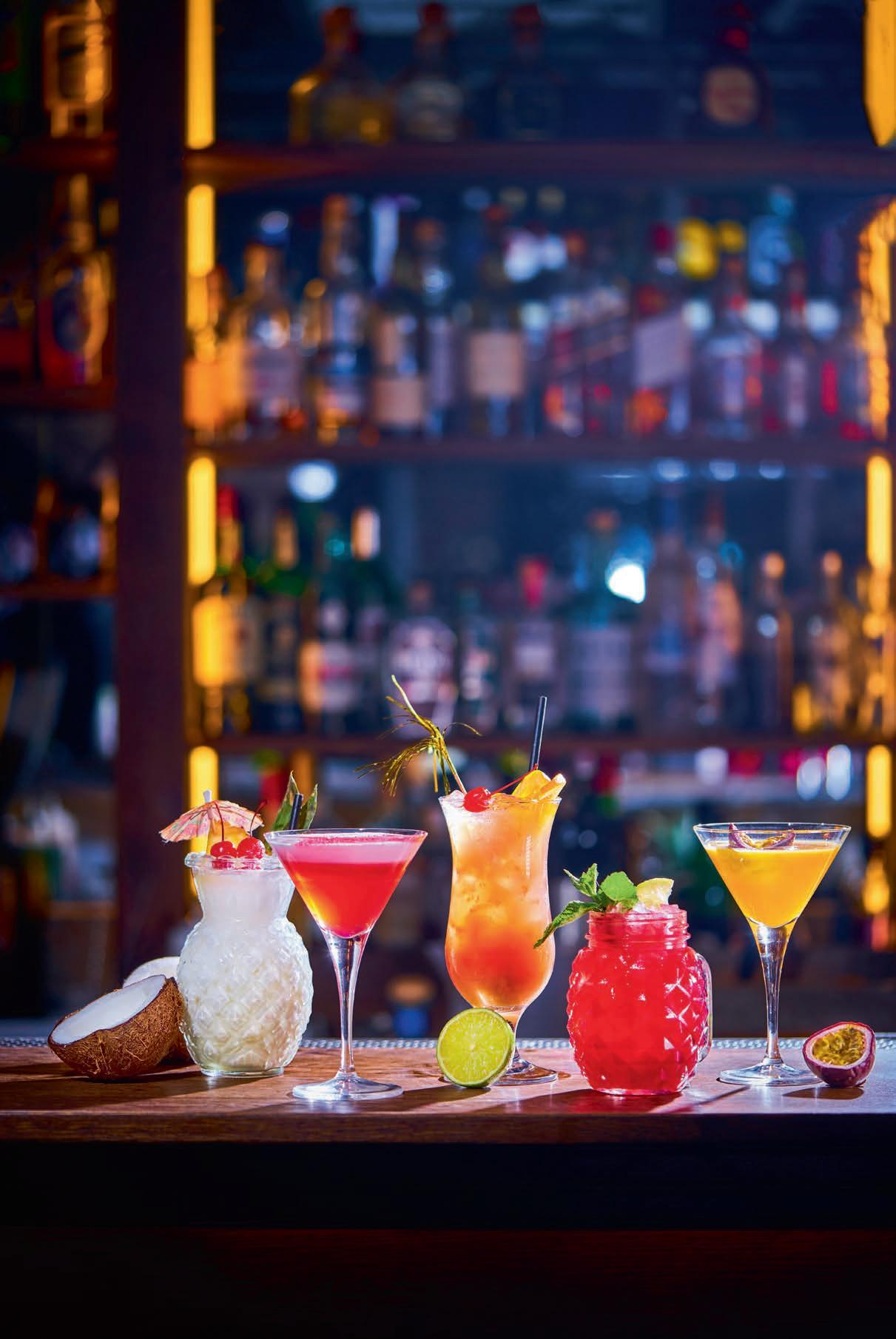
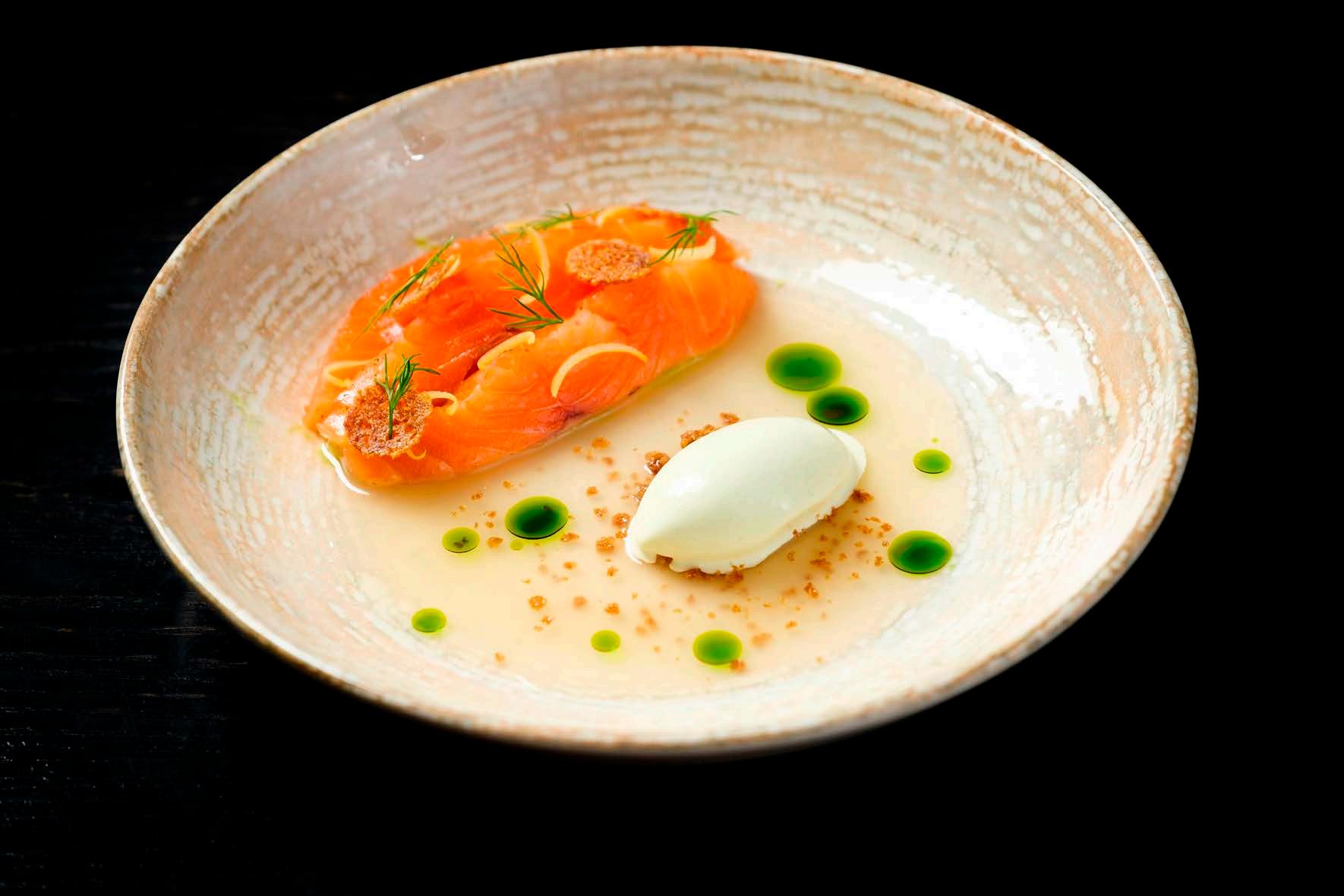
When my picky sister-in-law told me about the best salad í bænum, I was skeptical. Not only was this at a seafood restaurant, but also a lunch-only offering, reinforced my presumptions about sad salads. Fast forward ten years since, and I am now channeling that same enthusiasm for the Lobster Salad (5490 ISK) as my family first did. Crisp
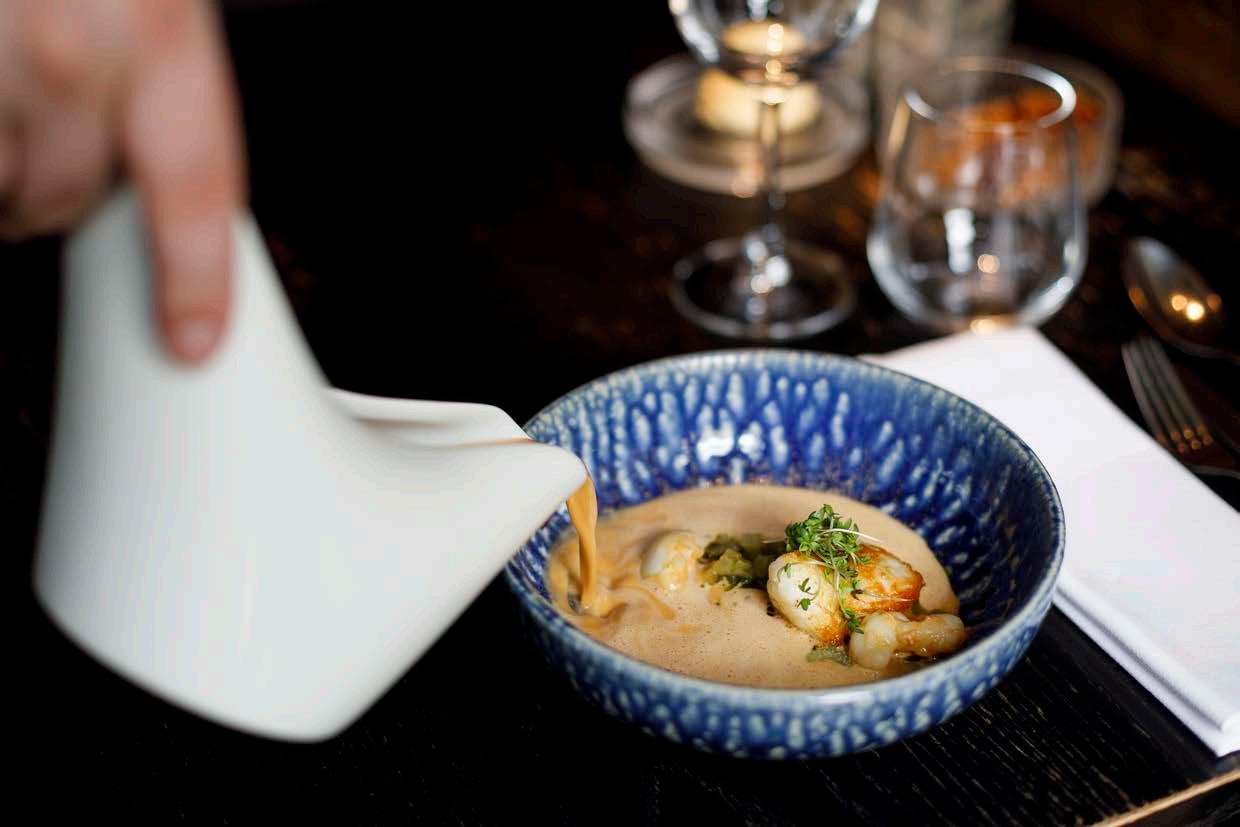
SÆTA SVÍNIÐ / Hafnarstræti 1-3 / Tel. 555 2900 / saetasvinid.is 990 1.690 HAPPIEST HAPPY HOUR IN REYKJAVÍK ICE LANDIC GASTROP UB
They’ve taken something familiar and had fun with it in the most maximalist way possible by combining flavours and ingredients that aren’t traditionally paired, but which still work in a tasteful, pleasing fashion.
chunks of greens, often romain, are dotted with batter-fried langoustine, shrimp, tomatoes and a mountain of grated parmesan. What feels like a loose riff of a Caesar salad at first sight is deceptive of the textures packed into a seemingly simple dish. The greens are always dressed just so, the lobster freshly fried and
oyster mushrooms and roasted split hazelnuts offering a pleasant contrast to all the smoothness. The parmesan adds sharpness yes, and on your third and fourth bite, you realise the hidden but there whispers of truffle oil. If there ever was a dish that screamed Reykjavík’s menu mantra of more is more, it
Some version of slow cooked trout has always been on the menu and at a recent outing, the Ireland-Malt (4790/ 6390 ISK), was the table favourite. True to the kitchen’s spirit, the sous-vide cooked local fish is more than what the menu reads. Though a stout foam is promised, it is a beer-forward sauce, with the bitterness of the brew shining through all that buttery richness. The apple jam is more fruit puree than cloying condiment, delicately smoked, and deftly placed, so you only catch on to its presence while wondering where it is coming from. The trout roe-dill vinaigrette lends colour and pop. Even fried sunchokes, which I’m otherwise tired of, are a welcome dash of earthiness here.
crisp, the tiger shrimp plump and firm, and the cherry tomatoes alone make me sigh — some are confited lightly and peeled, others left raw but halved, making for an indulgent yet light lunch affair that altogether feels like a successful midday escapade for one.
The fish of the day (3790 ISK) is the usual formulaic offering of white fish-sauce-whole lotta veggies-purees, but dished here in a refined, restrained avatar that showcases the strength of that code. It’s testimony of how even their simplest plates are worthy of recall when you can remember the ling with a sherry sauce, years later.
AROUND THE WORLD
Carpaccio. A dish that evokes dusty memories of Italian-esque plates (once declared dated by NYT a whole decade ago) rules the roost in Reykjavík. But Fiskfelagið does with it what they do best (not the name, it is mysteriously named Greenland). They’ve taken something familiar and had fun with it in the most maximalist way possible by combining flavours and ingredients that aren’t traditionally paired, but which somehow still work in a tasteful, pleasing fashion.
Delicate slices of reindeer (4990 ISK) parquet the platter, hidden under a cornucopia of toppings your mind insists don’t go together, with the first bite quelling such unrest. Flash frozen nubs of foie gras are scattered across the wintry landscape of savoury cep cream, blueberry compote, with the crispy
is this dish right here. But even a curmudgeon like me is weak for this tasty excess.
While you may be tempted to skip classics like graflax, I implore you to try the Iceland-Lovage (3490/ 3890 ISK) here. Incidentally, also the one dish that nails that country-ingredient epithet.
Where foam has been villainized off menus, one even Fiskfelgið was accused of in the past, today they lean towards frozen flourishes in a successful play of textures and temperatures as proven by their take on graflax. Instead of thin slices
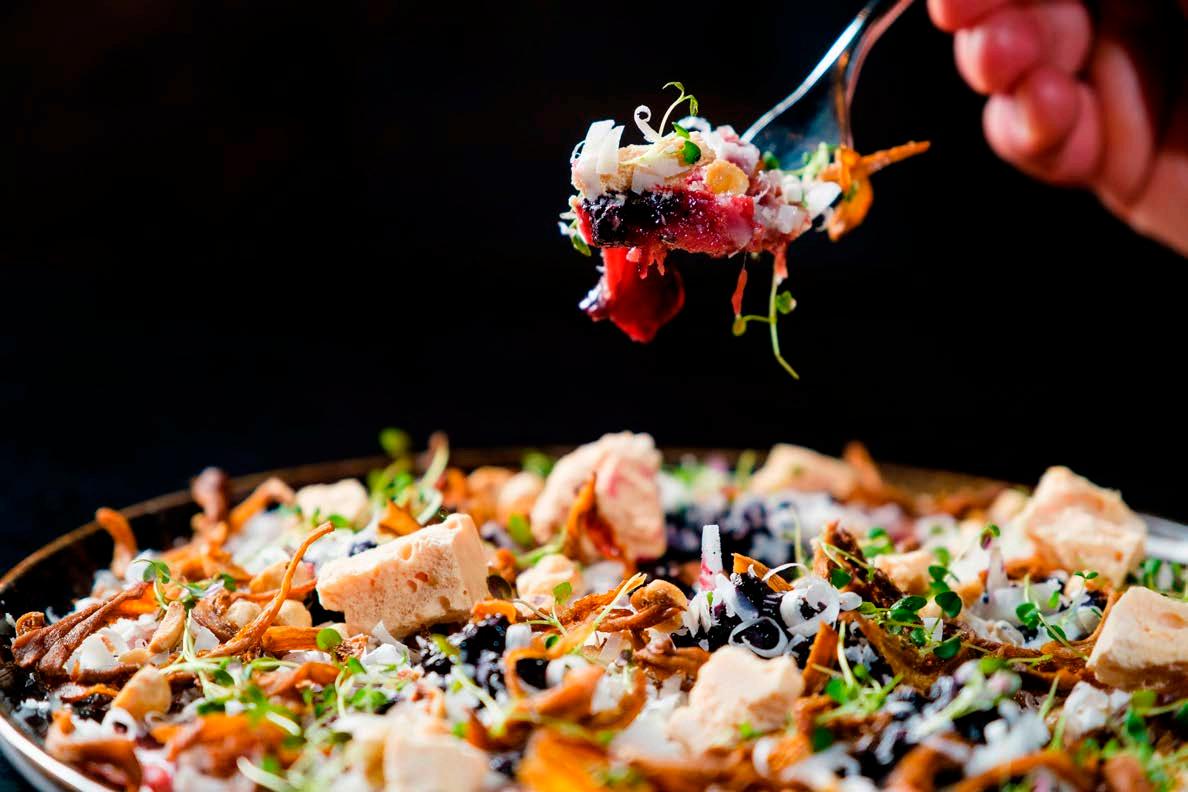
While I hadn’t reviewed them formally – an oversight I am now rectifying – I have enjoyed more than one fantastic meal after another at Fiskfelagið. Each year, the highlight of putting together our Best of Dining and end of year Christmas festive menu roundup are the outings here.
Complaints I have about the excesses of predictable tropes rest easy here. The food at Fish Company is modern Icelandic in an appeals-to-everyone way while still being playful, fun and creative. Much has been written about their seafood, their genial service, their ability to host 25-person plus jólaparties,
of fish, the salmon is served as hefty ribbony wedges almost, piled over a celeriac slaw. A quenelle of Icelandic cucumber and wasabi ice cream is meant to be scooped up with the mussel broth, the bright lovage oil adding a touch of spring to the ensemble. Eaten together with the rye crumble, it is a fun, and original take on a treasured classic.
sometimes two across the room, without breaking a sweat.

But I return here again and again not just for their skyr mousse (2890 ISK) with strawberry broth, their melt in the mouth lamb (5990/ 7990 ISK), or that salad, I am often here to bask in that more is more Reykjavik vibe.

33 in Krónan all around Iceland! THE PUFFIN BLANKET 100% WOOL www.islensk.is
Retalers
are Gullfosskaffi, Rammagerðin and many others
Food at Fish Company is modern Icelandic in an appeals-to-everyone way while still being playful, fun and creative.
Fiskfelagið’s affinity for naming dishes after countries with seemingly no connection to the ingredients proposed has been a baffling phenomenon. But bat away those affronting appellations and choose what calls to you the most.
Drinking
Drink Where The Locals Drink
Grapevine staffers share their personal favourite watering holes
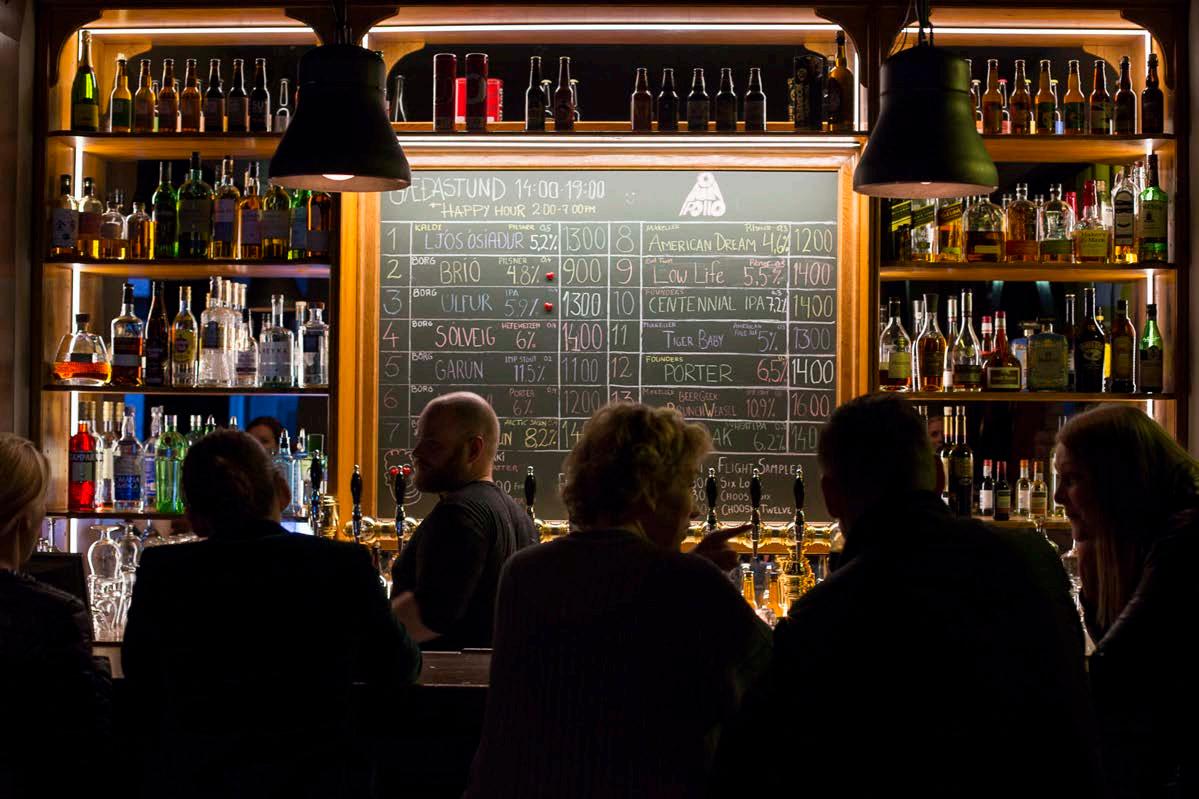





WORDS Grapevine Drinking Club

IMAGE





Art Bicnick
There are bars the esteemed panel of our Best Of Reykjavík sister magazine singled out as the best in their respective categories, then there are the places the Grapevine’s staff members go to when looking to wet their respective whistles. Is there overlap? Are the Best Of Reykjavík winners the preferred watering holes of thirsty journos?
Here’s where Grapevine gets their drink on.
SKÚLI
Aðalstræti 9, 101 Reykjavík
Skúli is conveniently located near Grapevine HQ, making it a great spot to unwind with a pint or two after a busy print week. The pub offers a fantastic selection of craft beers, which is ideal for those, like myself, who have come to appreciate a good IPA or the occasional gose after years of drinking cheap lagers. I recently had the pleasure of trying their mango sour, and it was truly exceptional. The few sips I had are still lingering in my memory, and I can’t wait to go back for another taste. IZ
RÖNTGEN
Hverfisgata 12
These days I try avoid bars at all cost, because I’m a misanthrope and a hermit. A hater, if you will. But if I must leave my house to consume alcohol, I’ll head to Röntgen because they have the nicest, cutest staff who have gone above and beyond to make me the best dirty martinis I’ve ever had (filthy martinis, in fact.) Also the upper floor looks like the Black Lodge in Twin Peaks. RX
12 TÓNAR
Skólavörðustígur 15
To me, 12 Tónar is more than a bar – it’s a community. When I go there, I try to attend one of their events, especially their DJ nights. Whether I’m feeling pro or anti-social, there’s guaranteed good vibes in the refuge of 12 Tónar. JB
APÉRO VÍNBAR
Laugavegur 20b
When I’m feeling thirsty, my go-to has been Apéro. Admittedly, I am a creature of habit, so it’s comforting that the friendly faces behind the bar know my wine of choice. But it’s also nice to go to a place where the staff is both knowledgeable and approachable, so if I ever did want to stray from my standard order, I know I’m in for a solid recc. Apéro is a great place to chat with a friend over several glasses of wine, or to just sit and scroll, enjoying your vino in solitude. Bonus points for the olives. Apéro has really nice olives. CF
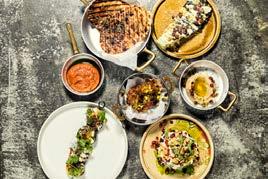
The Reykjavík Grapevine 7 / 23 34 Food Laugavegi 28 537 99 00 sumac@sumac.is sumac.is BEST THAI FOOD 2022 2021, 2020, 2019, 2018, 2017, 2016, 2015, 2014, 2013, 2012, 2011, 2010 AND 2009, TOP TEN : BEST RESTAURANTS IN ICELAND DV 17.06.11 Lots of options for vegetarians. LOVE B A N T H A I RESTAURANT love t haifood w w w . b a n t h a i . i s PHONE : 5522-444, 692-0564 banthai130@gmail.com Laugavegur 130, Hlemmur, 105 Reykjavík ban t hai Best goddamn restaurant 2011 - - - - - - - - - - - - - - - - - - - - - -
A Selection Of Happy Hours in 101 Reykjavík
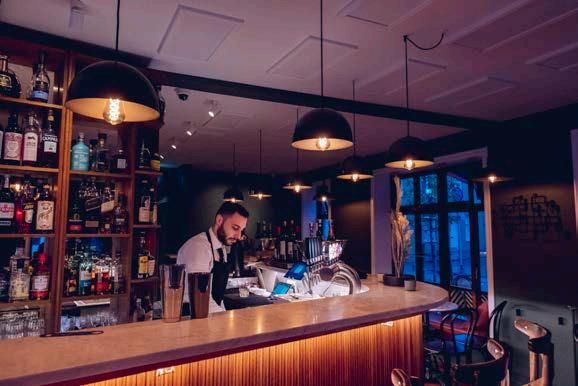
If your bar has a happy hour, email us on events@grapevine.is with the details.
JUNGLE COCK TAIL BAR
Every day from 16:00 to 18:00
Beer 1000 ISK, Wine 1100 ISK
Cocktails 1800 ISK.
KAFFI LÆKUR
Every day from 16:00 to 19:00 & 22:00 to 23:00 on Tue–Sat
Beer 950 ISK, Wine 1050 ISK.
KALDI
Every day from 16:00 to 19:00
Beer 950 ISK, Wine 950 ISK.
LOFT
Every day from 16:00 to 20:00
Beer 860 ISK, Wine 950 ISK.
LÓLA FLORENS
Every day from 15:00 to 18:00
Beer 1200 ISK, Wine 1200 ISK.
PETERSEN SVÍTAN
Every day from 16:00 to 19:00
Beer 900 ISK, Wine 1200 ISK.
PRIKIÐ
Every day from 16:00 to 20:00
Beer 700 ISK, Wine 1000 ISK.
PUNK
Every day from 16:00 to 18:00
Beer 850 ISK, Wine 950 ISK.
UPPSALIR BAR
Every day from 16:00 to 19:00
Beer 750 ISK, Wine 900 ISK.
RÖNTGEN
BASTARD BREW
Every day from 16:00 to 19:00 500 ISK off Beer, Wine and Cocktails.
BÍO PARADÍS
Every day from 17:00 to 19:00
Beer 850 ISK, Wine 850 ISK.
BREWDOG
Wed-Sun from 14:00 to 17:00
Beer 990 ISK, Wine 990 ISK.
BRÚT BAR
Every day from 16:00 to 19:00
Beer 700 ISK, Wine 750 ISK. 2F1 on wine and beer on tap.
FJALLKONAN
Every day from 15:00 to 18:00
Beer 990 ISK, Wine 1190 ISK.
FORRÉTTABARINN
Every day from 16:00 to 18:00
Beer 800 ISK, Wine 900 ISK.
GAUKURINN
Every day from 16:00 to 21:00
Beer 900 ISK, Wine 1100 ISK.
JÖRGENSEN
KITCHEN & BAR
Mon, Tue, Wed 16:00–18:00, Thursday from 16:00–20:00, weekends from 12:00 to 18:00
Beer 750 ISK, Wine 900 ISK.
Every day from 16:00 to 19:00
Beer 900 ISK, Wine 1000 ISK.
SÆTA SVÍNIÐ
Every day from 15:00 to 18:00
Beer 990 ISK, Wine 1190 ISK.
SKÚLI CRAFT
Every day from 12:00 to 19:00
Beer 900 ISK, Wine 900 ISK.
Happy hour includes four selected tap beers
SLIPPBARINN
Every day from 15:00 to 18:00
Beer 1000 ISK, Wine 1000 ISK.
SPILAKAFFI
Every day from 17:00 to 19:00
Beer 950 ISK.
STÚDENTA KJALLARINN
Everyday from 16:00 to 19:00
Beer 710 ISK Wine 850 ISK.
VEÐUR
Every day from 12:00 to 19:35
Beer 800 ISK, Wine 800 ISK.
ÖLSTOFAN
Every day from 15:00 to 20:00
Beer 1000 ISK, Wine 1000 ISK.
Cheap Eats
Here are some sweet meal deals that’ll fill your tummy and without draining your bank account.
Featured Bodega
Týsgata 8
What better way to celebrate the start of June than with a fine glass of delicious wine? You could run through the streets George Costanza style with your hands above your head, spinning and shouting, but we recommend doing that after you’ve knocked back a few over at Bodega. Their extensive and impressive wine list has something for everyone’s palette, and if wine’s not your thing, their beer taps and cocktails are equally great. And if we do ever get some decent weather, they have one of the best and biggest terraces in the whole city. Go let the vino flow! It’s June!
101 STREET FOOD
All day, every day
All appetizers & main courses:
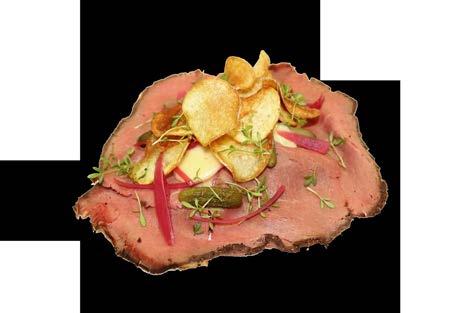
2.050 ISK.
APÓTEK
All day, every day
Soup of the Day: 1.990 ISK.
BÆJARINS BEZTU
All day, every day
Hotdog and soda: 990 ISK.
BRÚT
On Friday, Saturday & Sunday
Bottomless Brunch, including selected drinks: 6.900 ISK.
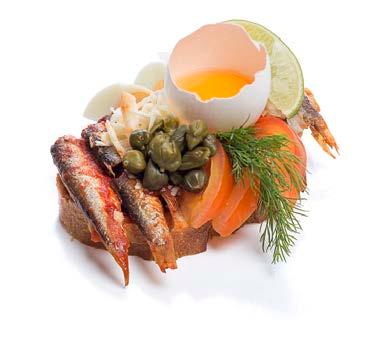
DEIG
On weekdays after 10:00
Poor Man’s Offer: filled bagel, doughnut & drink: 1.850 ISK.
DOMINO’S
Tuesday, pick-up only
Tuesday Special: medium pizza with three toppings: 1.200 ISK all day on.
DRAGON DIM SUM
Every day, except Sunday, from 11:30–14:30
Choice of any two dumpling baskets: 2.190 ISK.
GLÓ
All day, every day
Bowl of the Month: 2.290 ISK.
HAM BORGARA BÚLLA TÓMASAR
All day on Tuesday
Tuesday Special: burger, fries & soda: 1.790 ISK.
HLÖLLABÁTAR
Every day until 14:00
Lunch Offer: Choice of any sub and soda: 1.995 ISK.
ÍSLENSKI BARINN
All day, every day
Soup of the Day: 1.650 ISK.
LEMON
All day, every day
Combo of the Month: large sand-
wich & juice: 2.195 ISK.
MAI THAI BISTRO
Every day from 11:00–14:00
Lunch of the Day: 1.890 ISK.
Happy hours
Every day 16:00 - 19:00
Cheapest beer 900 ISK Wine glass 900 ISK
NOODLE STATION
All day, every day
Vegetarian noodle soup: 1.100 ISK.
PIZZAN
All day, every day
Combo Pick-up Offer: choice of menu pizza & breadsticks: 50% off.
PHO VIETNAMESE
All day, every day
Pho & wonton soups: 1.890 ISK.
REYKJAVÍK ROASTERS
All day, every day
Breakfast menu & sourdough toasts (various toppings): 580–1.350 ISK.
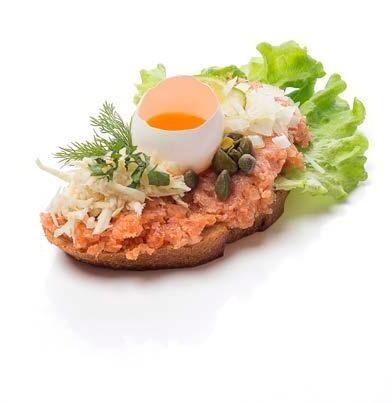
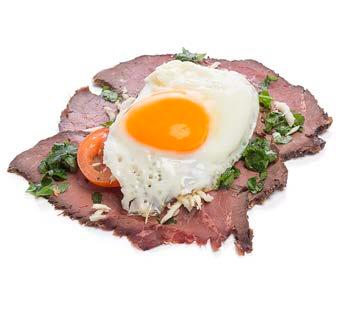

SHALIMAR
Weekdays from 12:00–15:00
Curry in a Hurry Lunch Special: 1.590 ISK.
SHANGHAI
All day, every day
Choice of 3-dish combo: 2.290 ISK for one; 4.390 ISK for two.
SUBWAY
All day, every day
Sub of the Day: 1.399 ISK for 6”; 1.899 for 12”.
ZORBIAN HOT
All day, every day
Chicken shawarma wraps & falafel wraps: 1.490 ISK.
35 Food Lækjargata 4 | 101 Reykjavík | Sími 55 10 100 | Open 11:00 - 22:00 | jomfruin.is – home of the open sandwiches Welcome to Jómfrúin Welcome mfrúin Appy Listings
What If There Had Been a Revolution in Iceland?
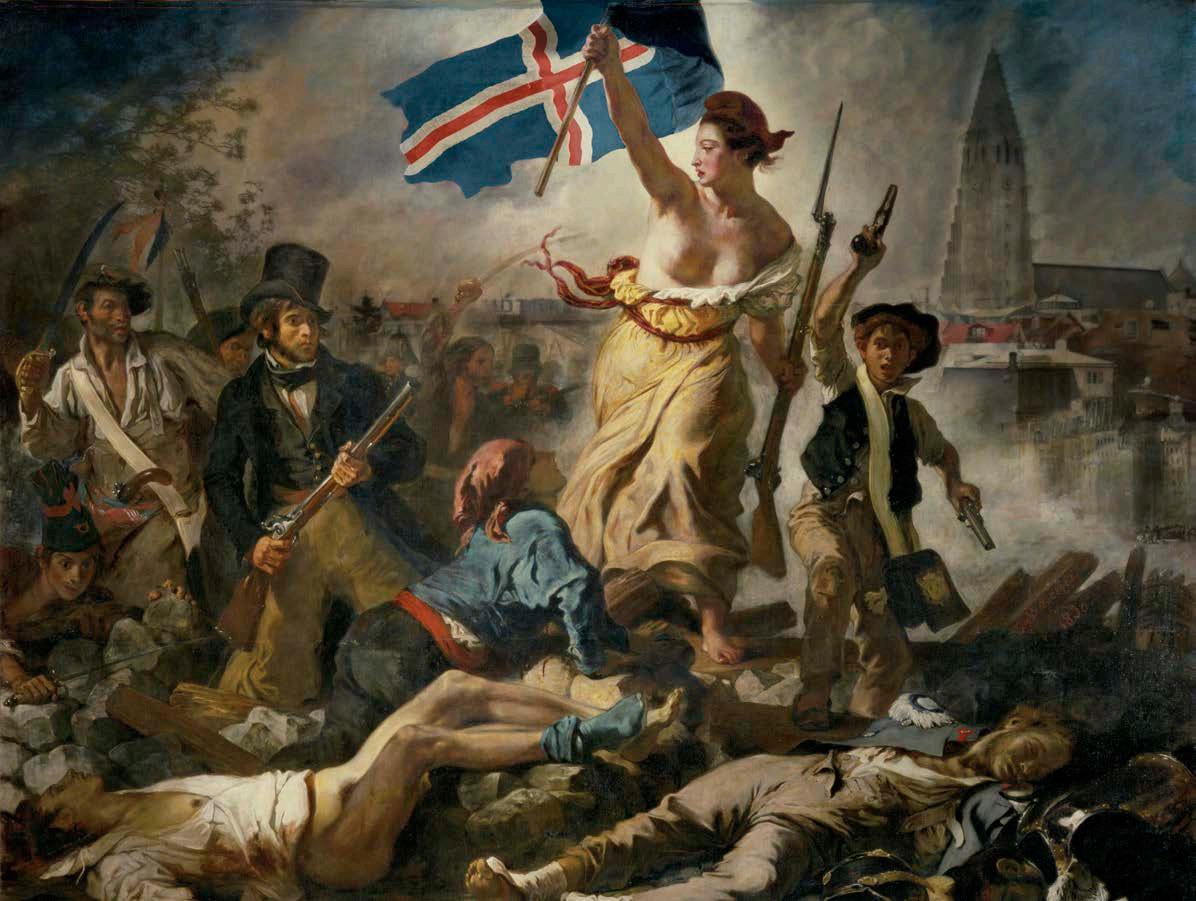
Another alternative history thought exercise to wrap your head around
Valur Gunnarsson
IMAGE Eugène Delacroix & Art Bicnick
to arm themselves with whatever they could find. A cache of weapons was discovered in different places, many probably having found their way to Iceland during the recent World War.
call on citizens to defend them. Had that failed, the Danes would have been called on for help — the Islands Falk naval vessel was conveniently in Reykjavík harbour at the time.
large parts of a previously taciturn population siding with the rebels. As for Nathan, he was deported to Denmark and eventually sent to his uncle in Alsace in France, where he was reunited with his mother and two brothers.
Iceland became a sovereign nation on December 1, 1918. Although still under the reign of King Christian X of Denmark and Iceland, Icelanders were now free to determine their own future. But what form of future would it be?
One model was to be found in the United States, which by the end of the First World War seemed to be overtaking Europe in most fields. Another source of inspiration was the Soviet Union, which at the time was in the process of shaping a very different future. But was anyone hoping for revolution?
BACK FROM THE USSR
Ólafur Friðriksson was editor of Alþýðublaðið newspaper, but was best known for leading a strike that guaranteed sailors six hours of sleep per calendar day, which improved both safety and living conditions aboard fishing vessels. In the autumn of 1921, he returned from Moscow where he had attended the 9th Congress of the Communist Party of the Soviet Union. He brought back books and pamphlets on the finer points of class struggle, as well as a boy named Nathan Friedmann, whom he intended to adopt. This came to a head when 15year-old Nathan was diagnosed with glaucoma, an eye disease feared at the time to be contagious.
The authorities decision to deport him was seen as a political act by Ólafur and other socialists, who barricaded themselves in Ólafur’s home on Suðurgata and beat back the police. This took place on November 18 and for the next few days it seemed anything could happen.
The police were no longer in charge of the city and Ólafur’s men began
Ólafur sought prospective allies, but the most powerful union in Iceland declined to take his side out of fear that the confrontation could lead to bloodshed. Without their support, Ólafur’s prospects of outmanoeuvring the authorities diminished.
Meanwhile, an army was being raised. The government called upon those it deemed loyal and a force came into being consisting of firemen, shop owners, office clerks, the YMCA, sportsmen, boy scouts and the rifle association. Some were armed with Remington rifles. Had this newly-created army met with resistance it could very easily have led to loss of life, even unintentionally. That prospect was not lessened by the fact that some in the rifle association were already drunk.
A HOT WAR IN ICELAND
In the meantime, Ólafur had unilaterally decided to disarm. All the weapons collected were locked in the basement of one of his closest associates, Hendrik Ottósson, who lived on a neighbouring street. When
The Danes proved unwilling to assist but would have changed their tune if faced with an armed communist uprising in Reykjavík. Alternatively, the British would eventually have been summoned. The Colonial Secretary, who at this time was one Winston Churchill, would have been happy to oblige as his calls to intervene in the Russian revolution proper had gone unheeded. Everyone knew that Iceland was in the British sphere of influence and a revolution in the capitalist heartland was seen as a necessary preliminary to one taking place here. A Soviet Iceland would remain out of reach. Nevertheless, had shots been fired during those fateful November days, everything could have changed.
Even fisticuffs could have dire consequences, as was almost to be the case. Hendrik was hit in the back of the head with a baton during the second fight. The blow was severe and a man named Kristinn, described as “strong and agile,” later knocked on the door of the policeman responsible and wanted “to repay it with some interest.”
During a protest against a motion to lower pay for public relief work during the Great Depression in 1932, the police were again beaten back. After this, they started arming themselves. Weapons were acquired from Spain in exchange for
War divisions would soon set in. The decision that previously neutral Iceland would join NATO in 1949 led to riots. Police and their conservative volunteers stormed protesters outside parliament, brandishing batons. The protestors responded by tearing up stones from the pavement outside parliament to use against them. Teargas was used for the first time in Icelandic history.
the police arrived on November 21 with their newly armed, dangerous and not entirely sober deputies, Ólafur and his men had few means to defend themselves. The episode became known as the White War, referencing the war between reds and whites ongoing in Russia at the time. But what if the White War had turned hot?
A revolution proper in 1921 Iceland would have been unlikely, even when the police were temporarily out of action following the first fight. The authorities were willing and able to
Fortunately, the policeman was not at home and the matter was not pursued further.
If a baton blow could spur acts of revenge, what would happen if someone had died? Revenge killings?
ENDLESS VIOLENCE?
The Icelandic revolutionaries of 1921 were pardoned after brief stints in prison. This was a wiser course of action than that pursued by the English after the Easter Rising in Ireland, where summary executions led to
fish, lessening chances of the police being disabled by unarmed men, as happened in 1921 and 1932.
Perhaps more active resistance would have been offered to the British occupation in 1940 if men had become inundated to the use of weapons during the class struggle of the interwar years. This would primarily have been carried out by the communists who most fervently opposed the occupation. This was the time of the Nazi-Soviet pact, and the British and the Germans were equally seen as waging a capitalist war that was no one else’s business. This window would have been open for just over a year – once the Germans invaded the Soviet Union in 1941, Icelandic communists took to seeing the British and Americans as allies in the global struggle against fascism.
WAR AGAINST NATO
Iceland became a fully independent republic on June 17, 1944, and soon after embarked on a course that would take it from one of the poorest nations in Europe to one of the richest in a matter of decades. But Cold
Iceland joined NATO in 1949 despite the protests and the Americans would return to their wartime base in Keflavík two years later. With a U.S. military presence, the possibility of any sort of revolutionary takeover by communists became impossible. Even had the interwar era in Iceland turned violent, we can assume that history would largely revert to its known course after the tumultuous years of 1921 to 1949.
The Cold War ended and the Americans eventually left in 2006. Just two years later, a massive economic collapse would lead to even larger protests than those of the depression era. Luckily, the violence of the ‘20s, ‘30s and ‘40s didn’t repeat itself, lest the “pots and pans revolution” would have been called something else entirely.
Are you enjoying Valur Gunnarsson’s reimagining of historical events?
Then you’ll love his new book.
What If Vikings Had Conquered the World? And Other Questions of Icelandic and Nordic History is out now through Salka Publishing. Get your copy at Shop.Grapevine.is
And check out the Grapevine’s Alternative History Of Iceland podcast for more hypothetical hijinks.
The Reykjavík Grapevine 7 / 23 36
WORDS
Alternate Reality
The police were no longer in charge of the city and Ólafur’s men began to arm themselves with whatever they could find.
Perhaps more active resistance would have been offered to the British occupation in 1940 if men had become inundated to the use of weapons during the class struggle of the interwar years.
Grassroots
Cornucopias
Fighting food insecurity through freedges
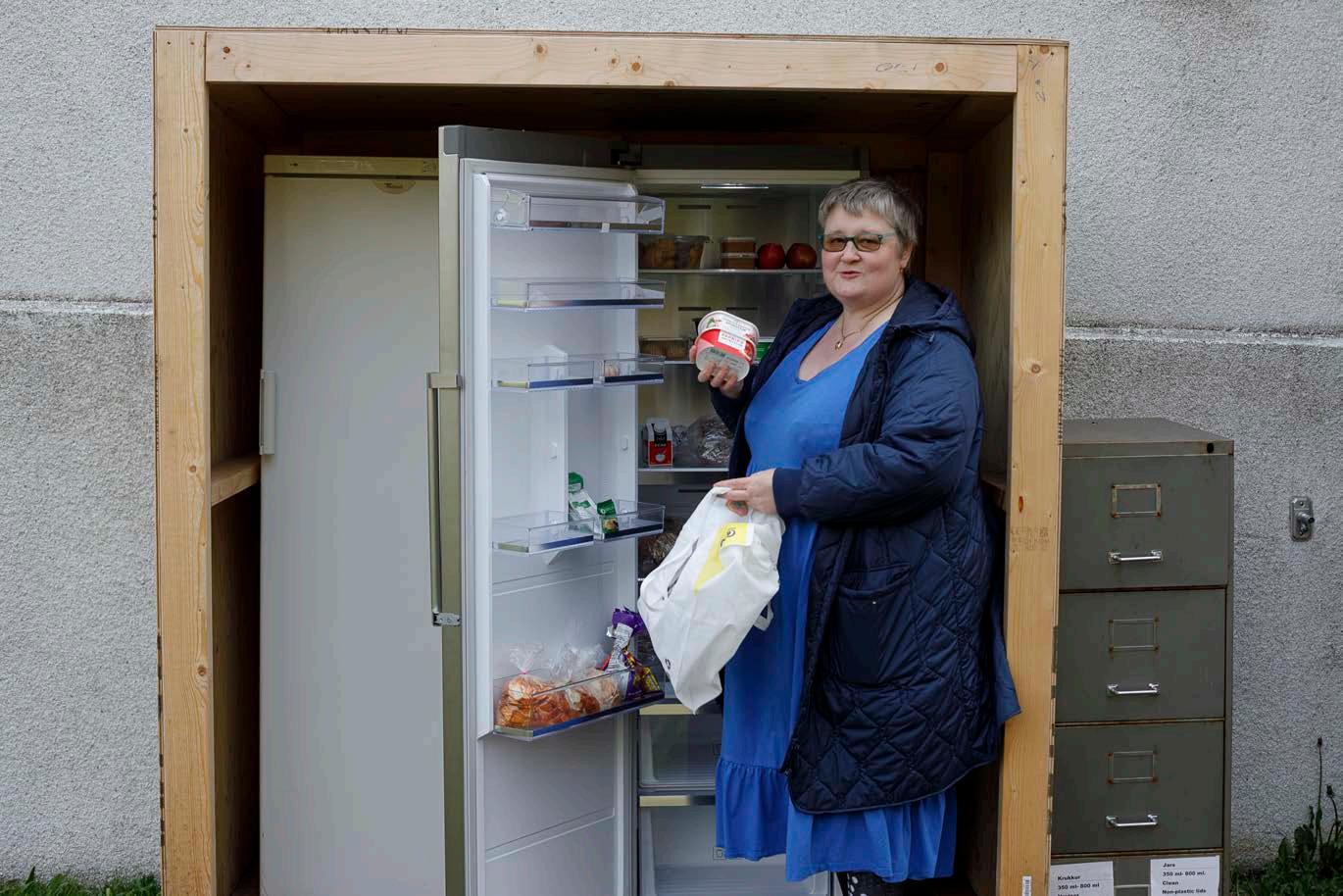 Jóhannes Bjarkason
IMAGE Art Bicnick
Jóhannes Bjarkason
IMAGE Art Bicnick
sprung up within the capital area and two have been established further afield, as Akureyri in North Iceland and Höfn in South Iceland boast one each.
YOUR NEIGHBOURHOOD SOUP LADY
Rósa Björg Jónsdóttir is one of Reykjavík’s many freedge volunteers and supervisors. She helps manage the freedge by Neskirkja in Reykjavík’s west end. Since 2021 she has been a frequent donor to the freedge
SMALL-SCALE ENVIRONMENTALISM
There’s a splash of can-do attitude that permeates the local freedge Facebook groups. People online are quick to conceive new locations for a freedge, and quick to put it to practise. They spot if anything’s wrong, predict foreseeable challenges and work together to solve them. It’s small-scale environmental activism –one of many climate actions required if we want a liveable future.
All things Icelandic in design and craft

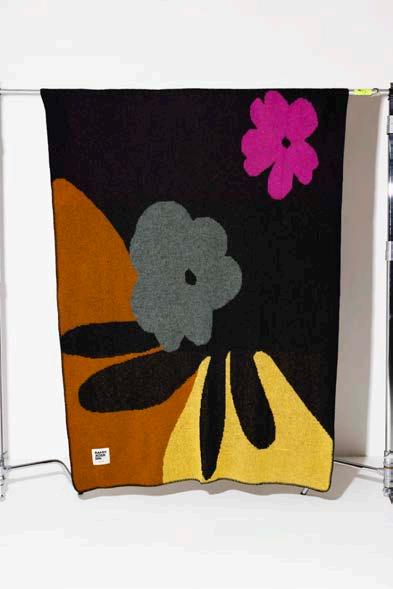
Scattered around the capital cityscape are freedges — tiny cells of environmental activism operated by regular people. A freedge is, in essence, a fridge devoid of private ownership. It’s meant as a sharing mechanism for food — where locals can drop off leftovers or pre-made meals for others to enjoy. Among other things, the initiative combats food insecurity and waste by way of sharing food with the community. The freedge movement is international, operating in all inhabited continents and Iceland now has 10 of them.
The first freedge in Iceland was set up in 2021 on the lot of the Andrými community space on Bergþórugata. Since then, seven others have
community. “In the first six months I donated about 540 litres of soup to the freedge,” she says. “It’s probably getting close to 2,000 litres these days – it’s no wonder people have started calling me the soup lady.”
Through sharing food, people are given a chance to help their neighbours and bolster community ties.
“I live in the neighbourhood, so it’s a short distance to the freedge. My friends and neighbours are active in giving me their leftovers, which I then bring to the freedge. When I’m not home, people leave their donations outside my door. Everyone in my building knows it’s there for me.”
The freedges have started resembling small community centres, accessible to all. “Although the freedges are important to people who may be food insecure, they are meant for everyone. Their ultimate goal is to reduce food waste,” Rósa says. Regarding the freedges’ necessity for low-income groups, she says she notices them emptying more rapidly as the month goes on.
Rósa encourages those wanting to get involved to lend a helping hand to their local freedge, whether by donating food or showing it some love by cleaning it. People should open their own freedge, too. “The freedges’ supervisors have done all the groundwork when it comes to establishing a new one,” Rósa says. “So, there’s no need to reinvent the wheel. If someone is interested, they’re more than welcome to get in touch.”
The freedge movement is spreading quickly — there are currently two in the process of being built, in Hafnarfjörður and Akranes; and four others are in the process of finding suitable locations. These small grassroots cornucopias allow communities to better connect, paving the way for a more sustainable environment.
You can see if there’s a freedge near you online at frisskaupur.live. If you feel your community needs a freedge, you can help by setting one up in your neighbourhood.
1 Eden Blanket, designed by Aníta Hirlekar. Made in Reykjavík from pure Icelandic wool.
WWW.RAMMAGERDIN.IS 2 Skólavörðustígur 7 Skólavörðustígur 12 Kringlan Harpa Flugstöð Leifs Eiríkssonar BEST O R EYKJAVÍK BEST DE GN STORE BEST O R E KJAVÍK BEST DES GN STORE BEST OF R E KJAVÍK BEST DES GN STORE
2 Arctic Blanket, designed by Sigrún Halla Unnarsdóttir. Made in Reykjavík from pure Icelandic wool.
WORDS
The Neighbourhood Watch
[I’ve] donated about 540 litres of soup to the freedge […] so it’s no wonder why people have started calling me the soup lady.
Stay like a local
[ 8 hotels, restaurants & spas in the heart of

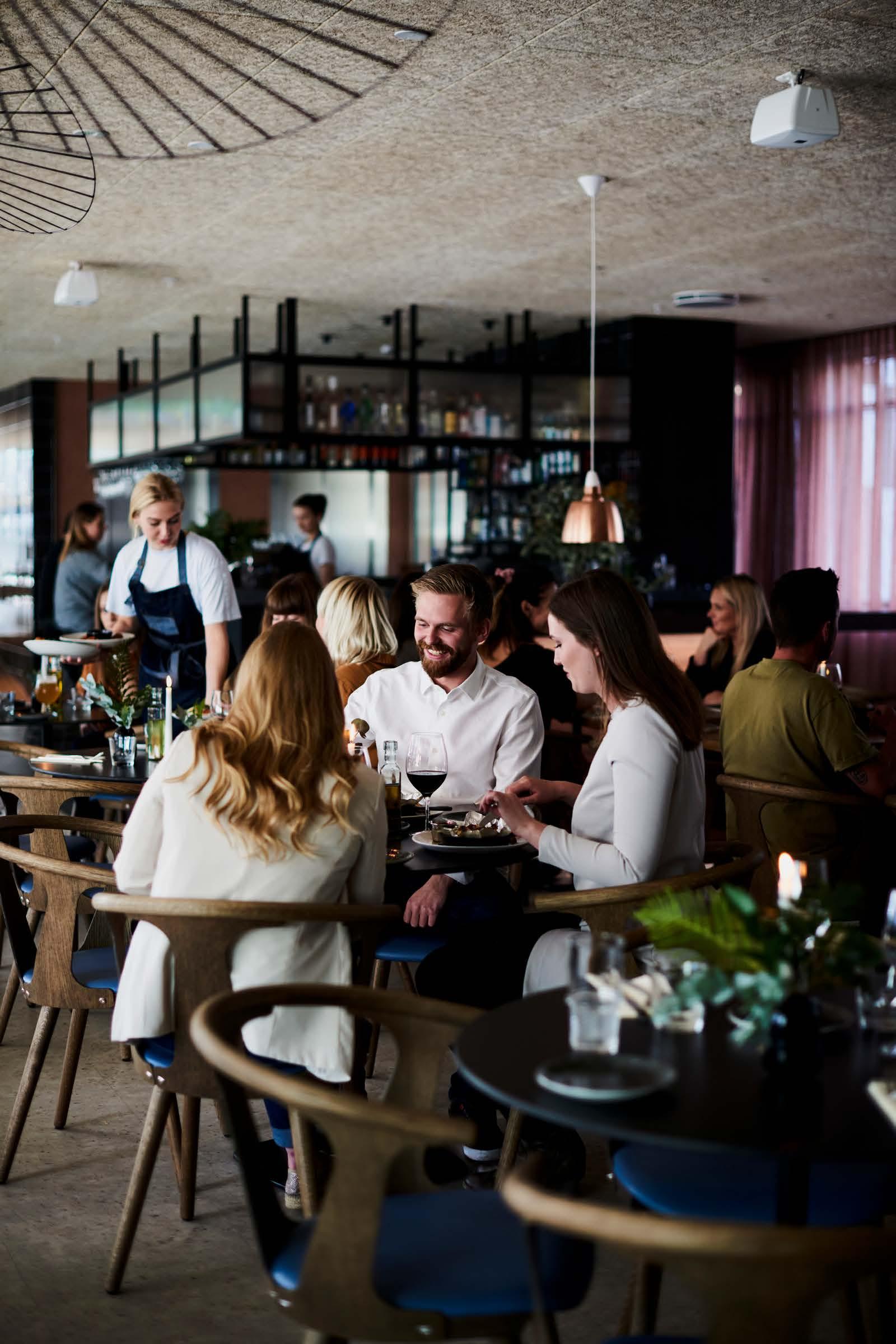
] land Fell

The end of days in the North Atlantic
WORDS Charlie Winters IMAGE Art Bicnick
Rising global temperatures struck the glaciers first. Mýrdalsjökull and Langjökull didn’t stand a chance. Vatnajökull was able to cling to life a little longer, but soon it too was simply Vatnavatn. It was still manageable then. They turned the once mighty ice sheet into a spa and charged tourists outrageous prices to wade in the glacial remains. There were plenty of articles online about the skin care magic that ancient ice holds.
That was all fine and well, but we weren’t ready for the receding waters.
of Reykjavík’s cats. I don’t think they even noticed the worsening temperatures. But when worsening monsoons became more regular, the roads to Keflavík were permanently closed. Tourists couldn’t get into the country. Remember COVID? It was just like COVID. Everything was tourist based. And suddenly, they were gone.
Day 5012 since the great disappearance. The metal shell of this braggi rattles in the storm. It’s kept me safe for a while, but the harðfiskur is running out. Soon I’ll have to head out into the barren wastes to scavenge for food. I might not make it, so just in case, let me tell you a story: the story of how Iceland fell.
Iceland is unique as one of the main effects of melting glaciers is rising global sea levels – at least that’s the case everywhere except Iceland. Vatnajökul’s mass forced the ground down. As it melted, the land – like the ISK – began to inflate, raising the island and causing it to gain land. This resulted in problems for the fisheries, which were suddenly far from the sea. Large swathes of sea life died out. The tourists still found ways to fuck with the sneaker waves. It was not all bad, the land growth opened up a lot of space for potential affordable housing. Alþingi acted swiftly, allocating it for lúxus flats and five-star hotels. This would be the last mistake they would make, for the great disappearance was about to begin.
With the locals then even more reliant on the tourist industry it was horrendous when the geostorms hit. Icelanders were used to hurricane force winds and hail the size

With no tourists to praise them the locals went mad. Reykjavík turned into a battleground. Cars and electric scooters lay overturned on every corner. Laugavegur was split down the middle as factions were formed between the Children of the Church gang and Harbor Harbingers. Icelanders tore each other apart trying to get the last of the cinnamon rolls the Bónus staff was hoarding, I still hear the screams of those poor teens in their pig shirts in my nightmares. The city was lost.
The urbanites tried to escape to the countryside but it was hopeless. The Selfoss bandits hid under the bridges at Ölfusá and picked off careless crossers. The doomsayer cults of Akureyri began their human sacrifices not long after the North’s whale watching ships went out of business. No one who’s gone to Egilsstaðir has ever returned.
My radio picked up a broadcast from Siglufjörður. The journey through the single lane tunnels will be gruelling but if there’s hope that anyone else is out there, I have to try. Plus, if I’m lucky, the rent might be cheap there. Alright, wish me luck, I’m going to ne----

Reykjavik
Inquiries of Mystery and
The Grapevine answers your most burning questions

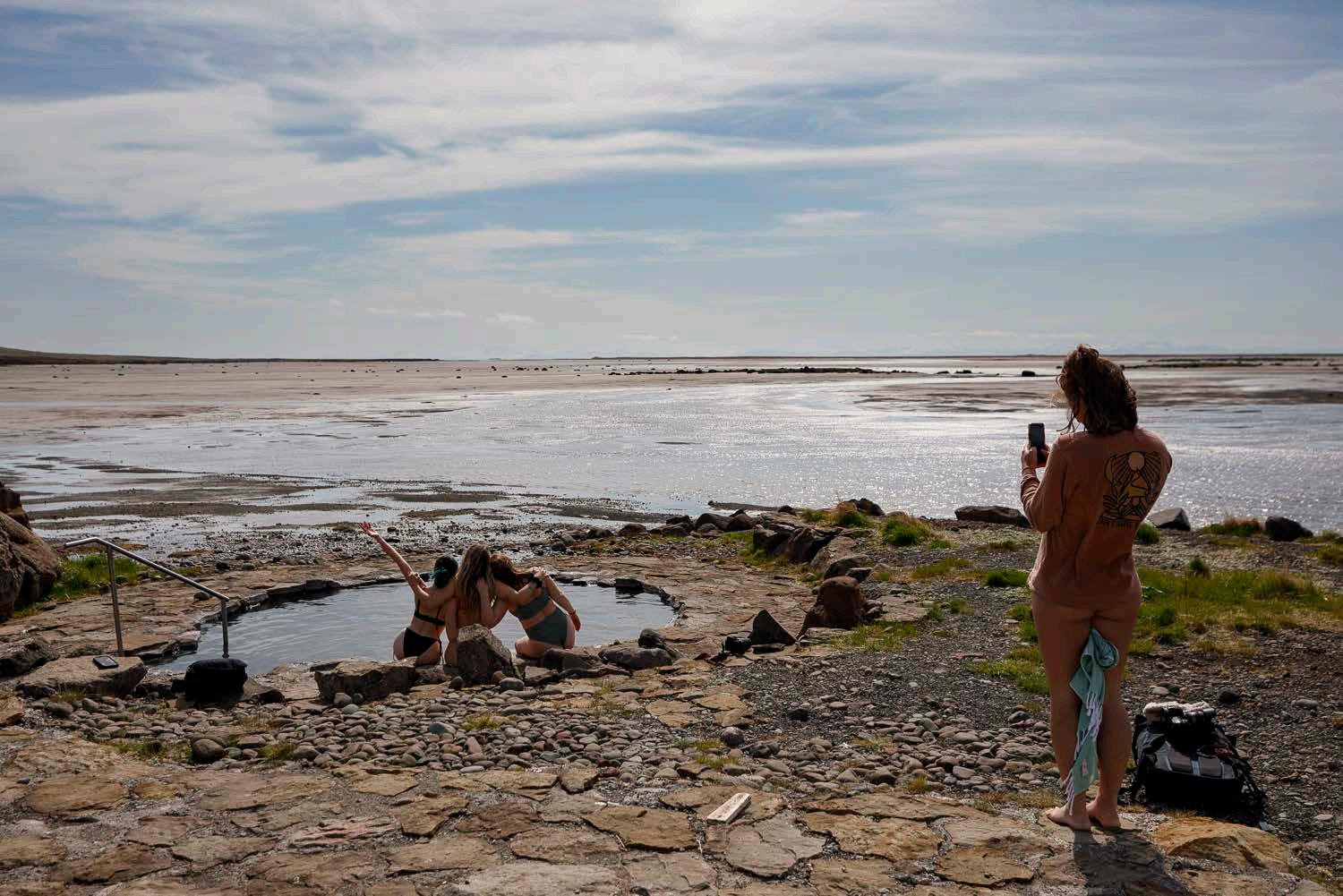
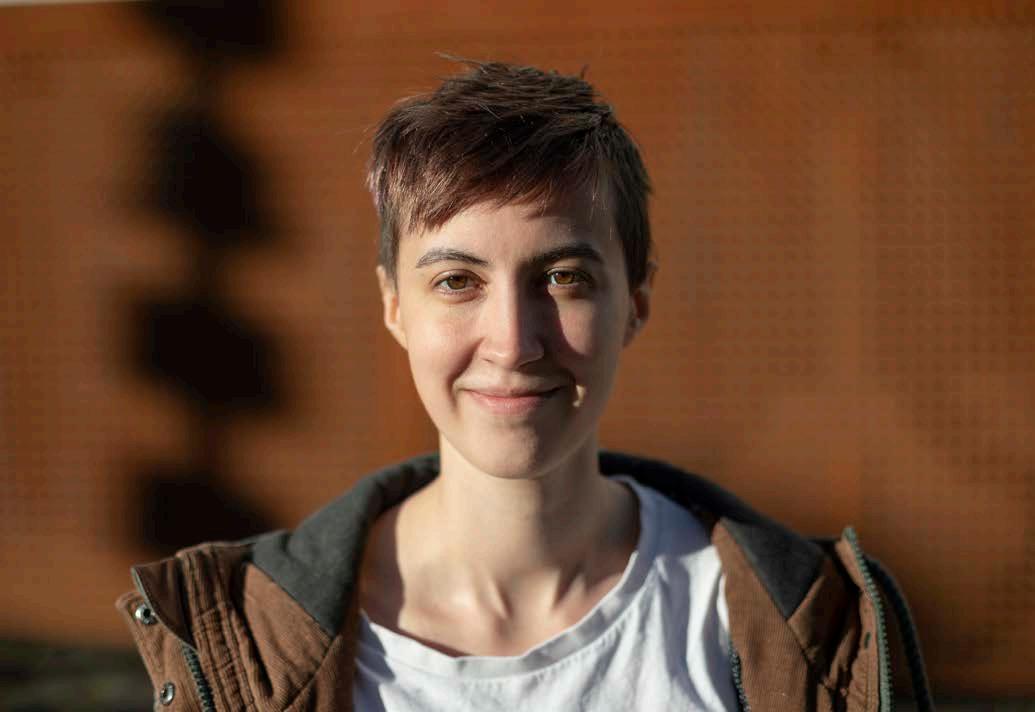
ing – MILKing for short. You probably haven’t heard of it. Basically, we stand in front of the art pieces with our eyes unfocused and our arms spread out and start vibrating at high speeds to absorb the artist’s intention directly through our brainwaves and skin, and taste the colour composition to receive the true meaning of the piece. You wouldn’t
WHY SO MANY HORSES?
It all started when the Æsir made a bad deal with a giant and instead of holding their end of the bargain, the fuckers chose not to pay their worker and pimped out Loki for some sexy horse related shenan-
igans. Badabing badaboom, Loki gives birth to the eight-legged horse Sleipnir, who becomes none other than the steed of Oðinn. There are a bunch of other named mythical horses with jobs, but Sleipnir gets the title of “Best Horse.” And while other horses have to make do with half the amount of legs, the Norse and their descendents still thought they were pretty neat and brought them everywhere. Like handbag-dogs for Vikings. Only without the handbag. Or the dog.
HOW DO I GET A BROKEN KEY OUT OF A LOCK?
To retrieve the key now lost to thee You must first fulfill these quests of
three.
Find the forge of black stone glass Past treasures old of bronze and brass.
Slay the beast with scales like greed Strike true and you may yet succeed.
Now stand before the wisest one Heed their advice or be undone.
“Hark! What sorrows!” they proclaim “This beeth stuck through all the way” “But venmo me ten thousand crowns, And my locksmith tools may have some sway.”
39
Last Look IMAGE Art Bicnick 26 stores across Reykjavík and Iceland With fresh products and low prices! View locations and opening hours at kronan.is
Potent Quotables
I started doing this not necessarily because we needed to save the money, but to challenge myself.


We were always on borrowed time. We only had three to five months, and then we had six months, then maybe one more year.

We have to do much better and we have to clean up the entire mess.
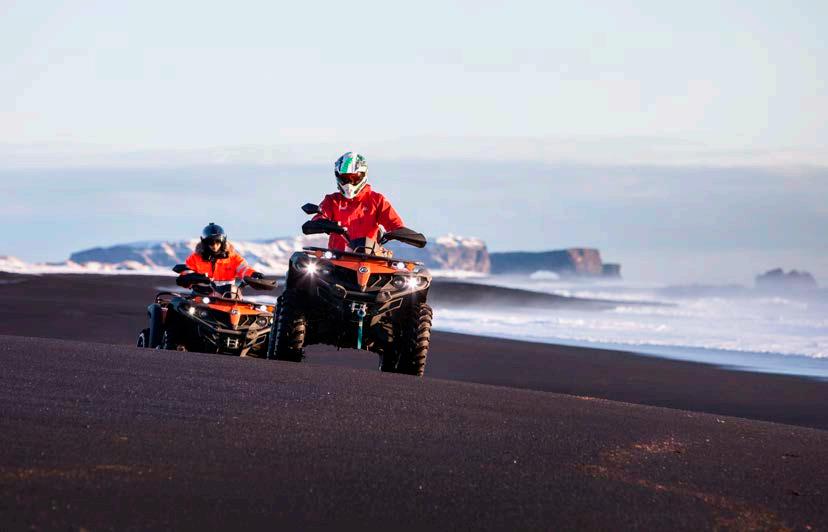
The importance of Skjaldborg is evident from the fact that there are hardly ever any empty seats in the cinema.
The police were no longer in charge of the city and Ólafur’s men began to arm themselves with whatever they could find. Valur
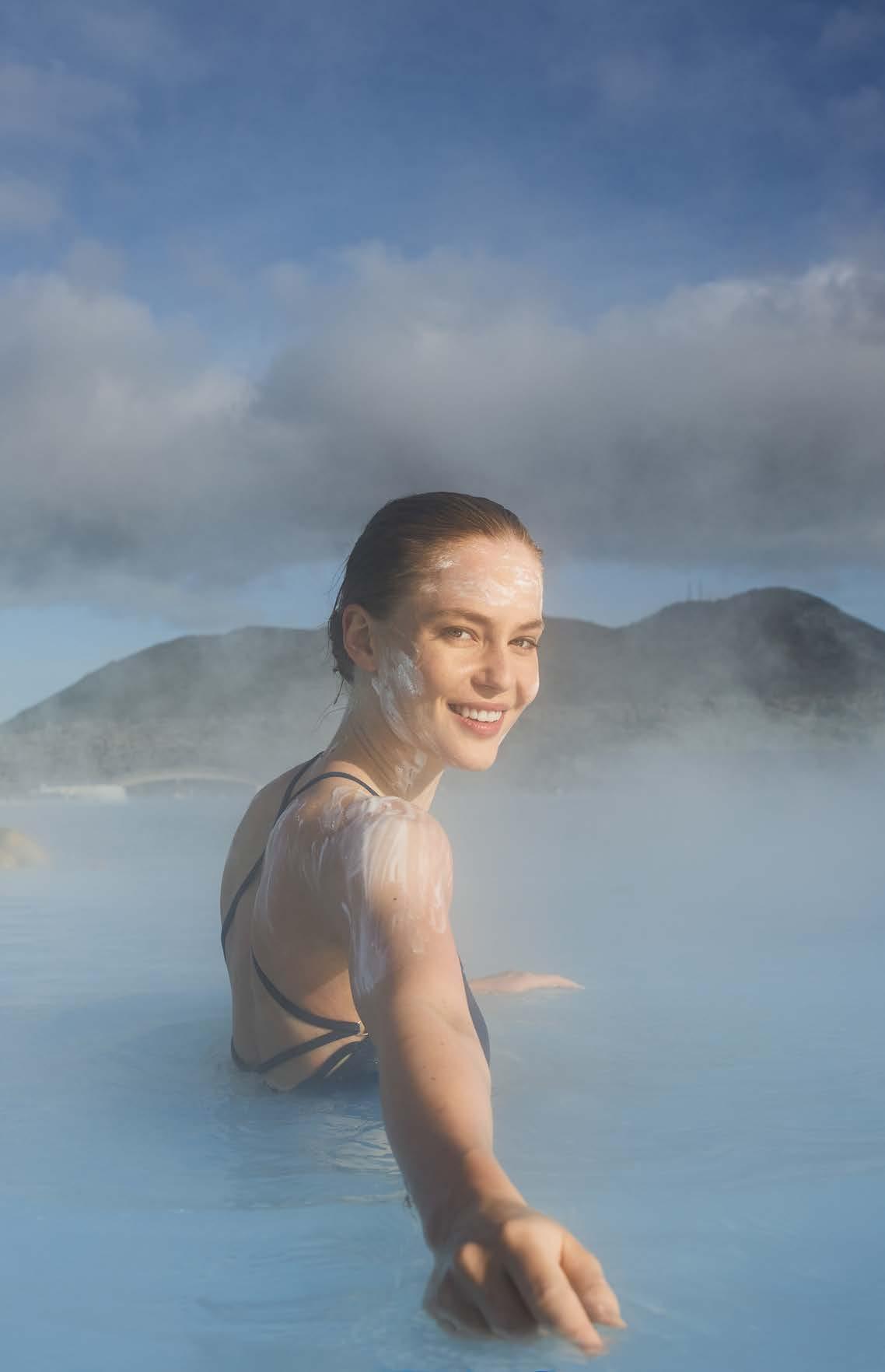
One of 25 wonders of the world Blue Lagoon geothermal seawater is unlike any other water on the planet. Born deep underground, this natural marvel is rich in silica, algae, and minerals—the elements that give the water its extraordinary powers. Discover the water. Experience the wonder. Airport Transfers All flights 45 min Free WiFi For our flexible Flybus schedule, please visit www.flybus.is, Prices from 3.899 ISK Prices & availability are subject to change without notice. mountainguides.is BOOK NOW Adventure Day Tours The Reykjavík Grapevine Free copy Volume 20Issue 7 2023 Best before June 16 Culture Music Travel
Katrín Björk Birgisdóttir teaches you to grocery shop for cheap on page 10
Gallery Port is still here. Read about their birthday exhibition on page 15
about Iceland’s low carbon illusion on page 12-14
Read
Zubenko gets the Skjaldborg experience
Iryna
on page 18
Gunnarsson considers Iceland’s almost-revolution on page 36









































































































































 Jóhannes Bjarkason
IMAGE Art Bicnick
Jóhannes Bjarkason
IMAGE Art Bicnick














